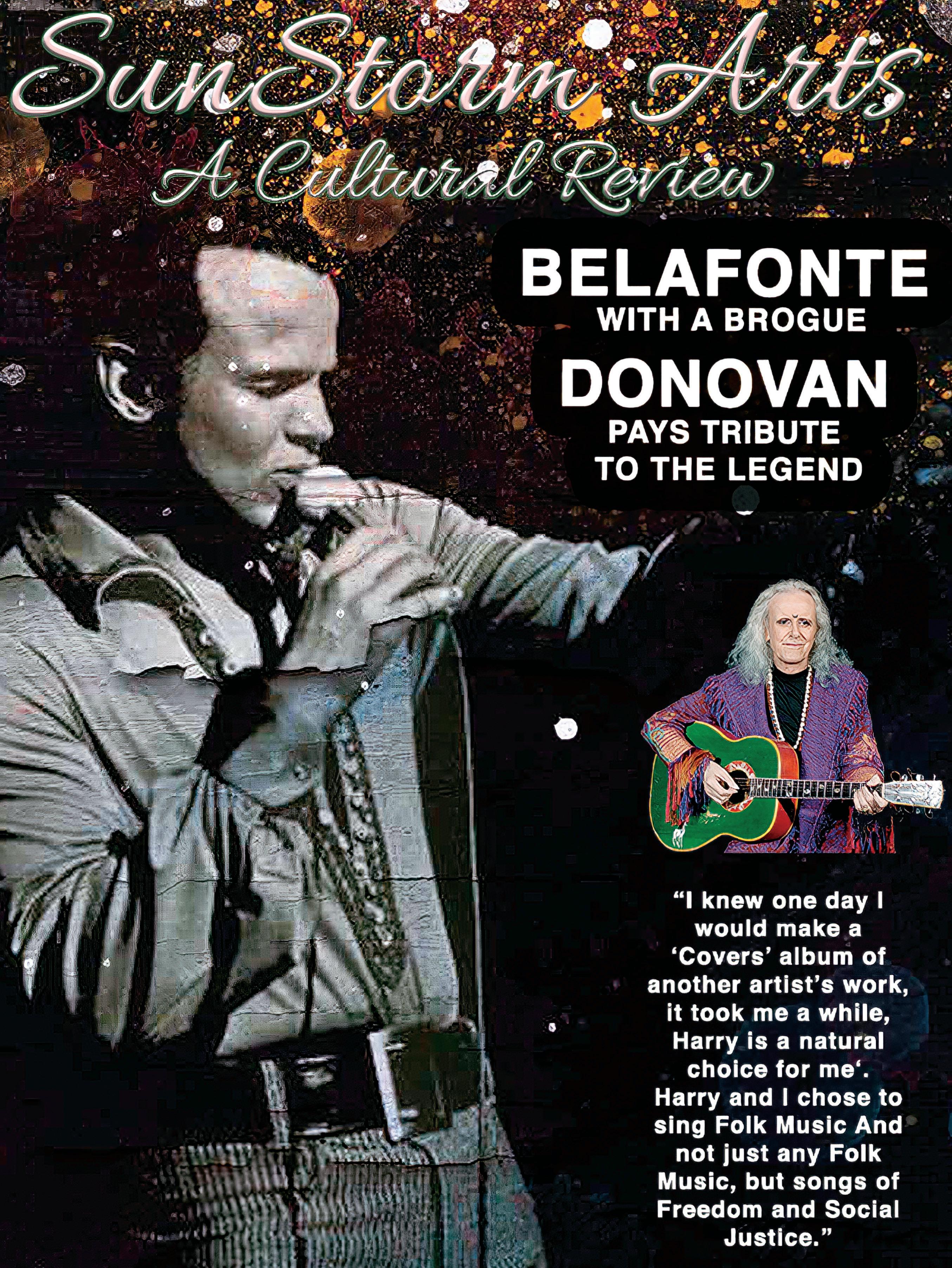
“Did you ever hear that to conquer your enemy, you must repent first, fall down on your knees and beg for mercy?” –Bob Dylan

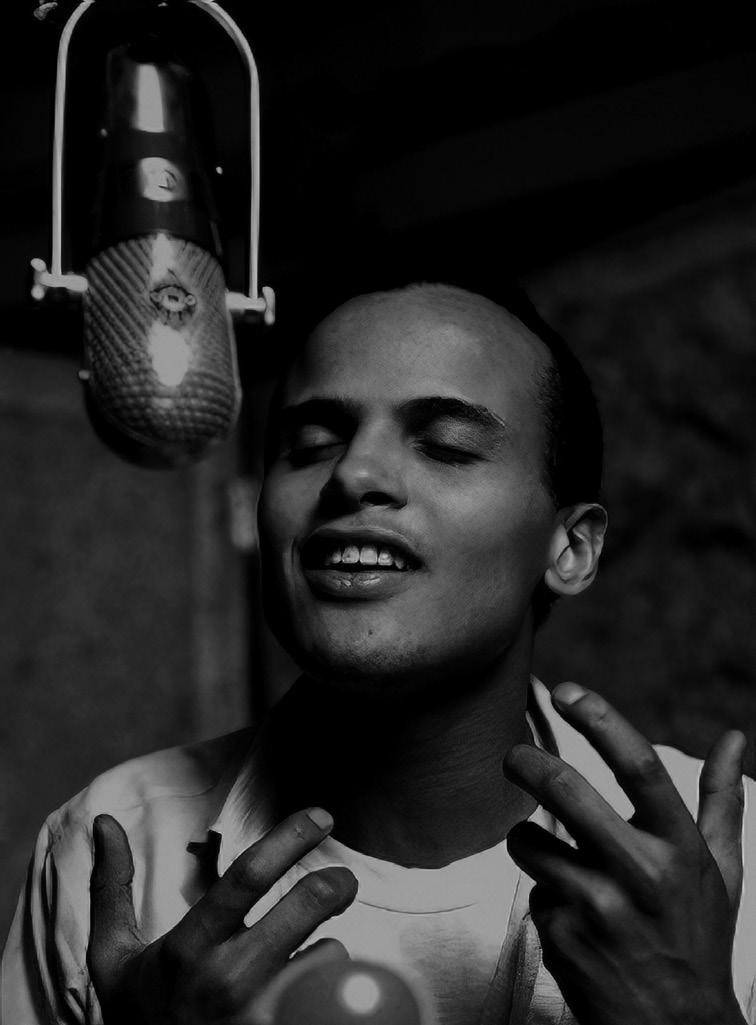

“I considered all the oppressions that are done under the sun: and behold the tears of such as were oppressed, and they had no comforter, and on the side of the oppressors there was power; but they had no comforter.”
—Ecclesiasties 4:1
“Ah but I may as well try to catch the wind.”
—Donovan
Chris Murray told me “Victor, you have soul.” With that benediction, here is my editorial.
August 30, 1995 . I’m starting with the date because today is the day it became overwhelmingly obvious that I must not read the newspapers anymore. When I pass a newsstand, I’m going to have to turn away. I’ll bring computer magazines to the deli. I’ll learn how to launch a web page. I’ll bring a pad and scribble my own thoughts. Just keep the newspaper away.
I can barely fathom that almost forty years have gone by since I was allowed to walk to the corner of 57th Street and First Avenue with a quarter to buy the Daily News, the Daily Mirror and three packs of Topps baseball cards. I didn’t stop with the sports section, either. In those days, the centerfolds of the NY tabloids were rife with action photos — derailing trolley cars, natural disasters, car crashes. There was Jimmy Cannon and Walter Winchel; the Inquiring Photographer, Leonard Lewin and Earl Wilson and later on, Pete Hamill
and Jimmy Breslin. Yet, between Mark Fuhrer’s sick and sickening revelations and the sadness of the constant reminders of man’s inhumanity to man...I’m going to break this habit. Oh, I’ll be uninformed. I won’t know Winona Ryder is dating some grunge star, or that Monica Seles is back on the courts after two plus years of therapy, or that her attacker was let off twice by the German courts, or that a child in Sarajevo is calling out to her mother, after a bomb blast, that she cannot find her little hand. Or that an eighty-five year old gentleman who went fishing in Brooklyn every other day for decades was murdered by two thugs for whatever pocket change such a person would carry along with his rod, reel and bait bucket. No, I’ll not be aware that a one year old in a hospital in Kampala has no food or water. The reality is, Fine Art should be the Daily News — we should be coming out every day cheering on all that is good and beautiful in creation. There should be no 85 year-old fishermen murdered; there should be no autistic five year-old repeating the only word she knows—“Mom-mom”—for hours on end because her mother was run down by a truck in the act of saving the child’s life; there should be no screams knifing down hospital corridors from the shattered , burned and bloodied victims of plane crashes, jealous lovers, guided missiles or suicide bombers. You sons of bitches out there who, in the name of whatever you deem holy—be it your god, your country or
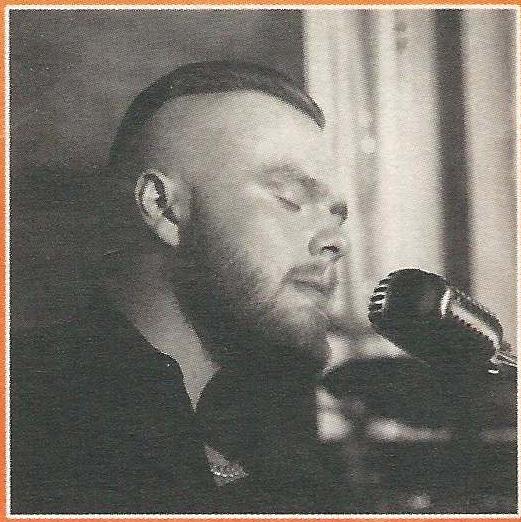
the Almighty Dollar—stop! In the name of purity, in the name of peace, in the name of the one supreme being who created us all: STOP. There is abundance on this planet beyond your comprehension. There is room for many millions more of us. There are resources available — right before our eyes — that you, in your frothing hatred and lust cannot see. From fishing out the waters to deforesting the land to piercing the very ozone that keeps us safe — this mass of arrogance and stupidity is carrying the human race out with the tide, careening from crisis to crisis on a one-way path to oblivion. Even in this country, that was once hailed as a melting pot for the opporessed peoples of the world, in which immigrants with barely the clothes on their back could at least think they would be afforded, upon arrival, an opportunity—our own citizens are killing each other and not only in the ghettoes. The threat is not solely from outside our borders. Militias, cults and government agencies are in constant preparation for war. Wake up people.What is it going to take for us to turn this around?
2 • Fine Art Magazine • Spring 2022
Gallerist, author, publisher and long-time Aide-de Camp to Donovan, Chris Murray, pictured above with Priscilla Presley, played a major role in putting this issue together.
Harry Belafonte, newly ensconced in Rock and Roll Hall of Fame at age 95. Page 3
Steven & Dion hit Broadway. Page 18
Joolz Jones & the spirit of the Stones. Page
Patrick Francis Kirmer Obituary
Patrick was born to John and Johannah Kirmer in Hollywood, California on May 1, 1929. Pat was one of six children, four boys and two girls. During his early years he worked with his father, John, in the family butcher shop. He enlisted in the Army during the Korean War, and served stateside for three years. After leaving the service, Pat completed his college education at the California College of Arts and Crafts in northern California. He moved to New York, where he received a Scholarship to the Brooklyn Museum to pursue his studies in art. Upon completing his education, he went to work at the Baldwin School in Manhattan. He taught art there for 30 years, and retired in 1988. During his career at the Baldwin School, he worked at the Baldwin School Camp in Keene Valley, New York. This was his introduction to the Adirondacks and his beloved Johns Brook.
Upon retiring, Pat and his wife Therese, moved to Keene Valley and eventually purchased a home on Market Street. Johns Brook became Pat’s muse and he devoted the vast majority of his time painting the brook. Pat was very engaged with the community and volunteered at the Keene Valley Fire Department selling raffle tickets for their Annual Field Day. He was very engaged with the Keene Central School and he worked tirelessly on sets for many school plays. He was also known as the “apple man”, because of his yearly custom of passing out apples to trick or treaters on Halloween.
Over the past several months, Pat had been living at the Essex Center nursing facility. He took his last “brush stroke” on the evening of May 3rd. Pat and Therese had no children and he was predeceased by two sisters, and two brothers. He is survived by his brother Michael Kirmer and his wife Sandy, who live in Santa Fe, New Mexico.

Pat established an annual Johns Brook Scholarship Fund to support a deserving graduating student from Keene Central School who plans to major in music, art, or theater. Memorial donations may be made to the Adirondack Foundation, PO Box 288, Lake Placid, NY 12916 or visit https://www.adirondackfoundation.org/funds/johns-brook-art-and-music-scholarship-fund. All gifts will be added to the John’s Brook Scholarship Fund. An open house celebration of Pat’s life at the Keene Valley Congregational Church was held at the Van Santvoord room on November 16 where many people came to share stories about Pat.
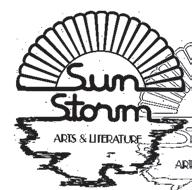
Fine Art Magazine • Spring 2022 • 3
PUBLISHED BY SUNSTORM ARTS PUBLISHING CO., INC. JAMIE ELLIN FORBES, Publisher jamie@fineartmagazine.com POB 404, CENTER MORICHES NY • 631-827-7424 VICTOR BENNETT FORBES, Editor victor@fineartmagazine.com POB 481, KEENE VALLEY, NY 12943 • 518.593.6470 Donovan is without question a poet laureate, a bard, a minstrel and songwriter of tremendous importance. In the Flower Power era, he was the leader of the pack. Yet, when it comes to giants of an era, no one was more gigantic than Harry Belafonte DONOVAN PERFORMING AT THE NEW YORK HISTORICAL SOCIETY SET ONE ACOUSTIC< SET TWO WITH FULL BAND SHOW WAS NOTHING SHORT OF SPECTACULAR - TWO HOURS OF HIT AFTER HITOriginal Material © 2022 SunStorm Arts publishing Co., Inc. Artwork © by the artists ESTABLISHED IN 1975
Pat Kirmer portrait by Paul Matthews
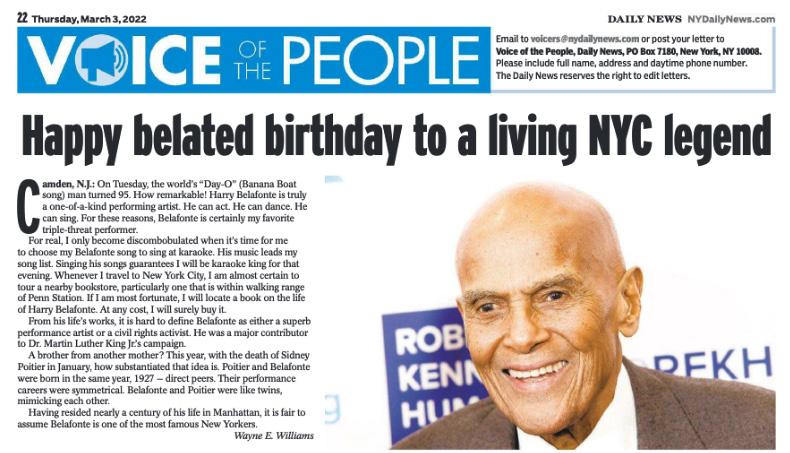
CALYPSO PAVES THE REGGAE ROAD
The Harder They Come, Jimmy Cliff, Mango 9202, Released: 1972, Chart Peak: #140; #119 on Rolling Stones top 200 albums of all time; Rolling Stone ROCK MOVIE OF THE YEAR 1973

Reggae is one form of Jamaican music that is gaining attention around the pop music world. This soundtrack LP is a good collage of reggae done authentically. The tunes show the smooth flow of the percussion instruments and the excitement inherent in the voices, individually and collectively. Shades of calypso and Belafonte. This is modern Jamaica, and Cliff is assisted by several local groups like the Melodians, Maytals, Slickers and Desmond Dekker himself, the top reggae name. - Billboard, 1975.
MAY 4, 2022 – Formally and finally recognized to be inducted into the Rock and Roll Hall of Fame as an “Early Influence”, in his latter days, at 95, Harry Belafonte is having quite the career resurgence. A serious activist from the dawn of the Civil Rights Movement, the first singer to sell a million albums and receive the first Billboard Gold Album, Belafonte is no stranger to controversy or the controversial Hall. In 1996, he was there to induct Pete Seeger. In 2013, he and Spike Lee inducted Public Enemy. Now the question is, “Who will induct Harry?” Would it be Dylan who backed him on harmonica on a 1961 release, or Jimmy Cliff, the lead living proponent of classic reggae, or his good friend Donovan whose tribute album sheds a
whole new light on the power and influence of Calypso. Esther Anderson, acclaimed photo-journalist, filmaker and author, who was Miss Jamaica and starred in A Warm December with Sidney Poitier, says of Belafonte, “A Singer, Actor, Producer and Humanitarian, he was at the forefront of Live Aid American contribution to the famine in Ethiopia..A Jamaican of mixed heritage born in Harlem grew up in Jamaica suffered racism but overcame all his obstacles to become one of the leading Artists — who’ve contributed to popular cultureas much as Bob Marley

Esther Anderson guest on John Hearne “In Town,” Jamaican Broadcasting Corporation, 1973.
Day-O, Day-O-OO-O. These lines ring out in stadiums across America and around the world with few these days understanding the meaning behind the melody. Described as a “catchy Calypso tune,” it is much more than that: A blues, a Lament, an Incantation, a rebellion against oppression. Yet, a ballplayer comes to the plate or is announced over the PA and thousands of fans full of enthusiasm but loaded with ignorance cheer their heroes. Do they know that…
“A beautiful bunch of ripe banana
Hide the deadly black tarantula?
(Daylight come and we want go home)…”
Well, now they know. Then one may remember the famous phrase from the advertising world: “What Becomes A Legend Most?” The proverbial question, straight out of a Mad Men’s real-life episode, can be answered this way: “Another Legend.”
1 • Fine Art Magazine • Spring 2022
A Tribute To Harry Belafonte
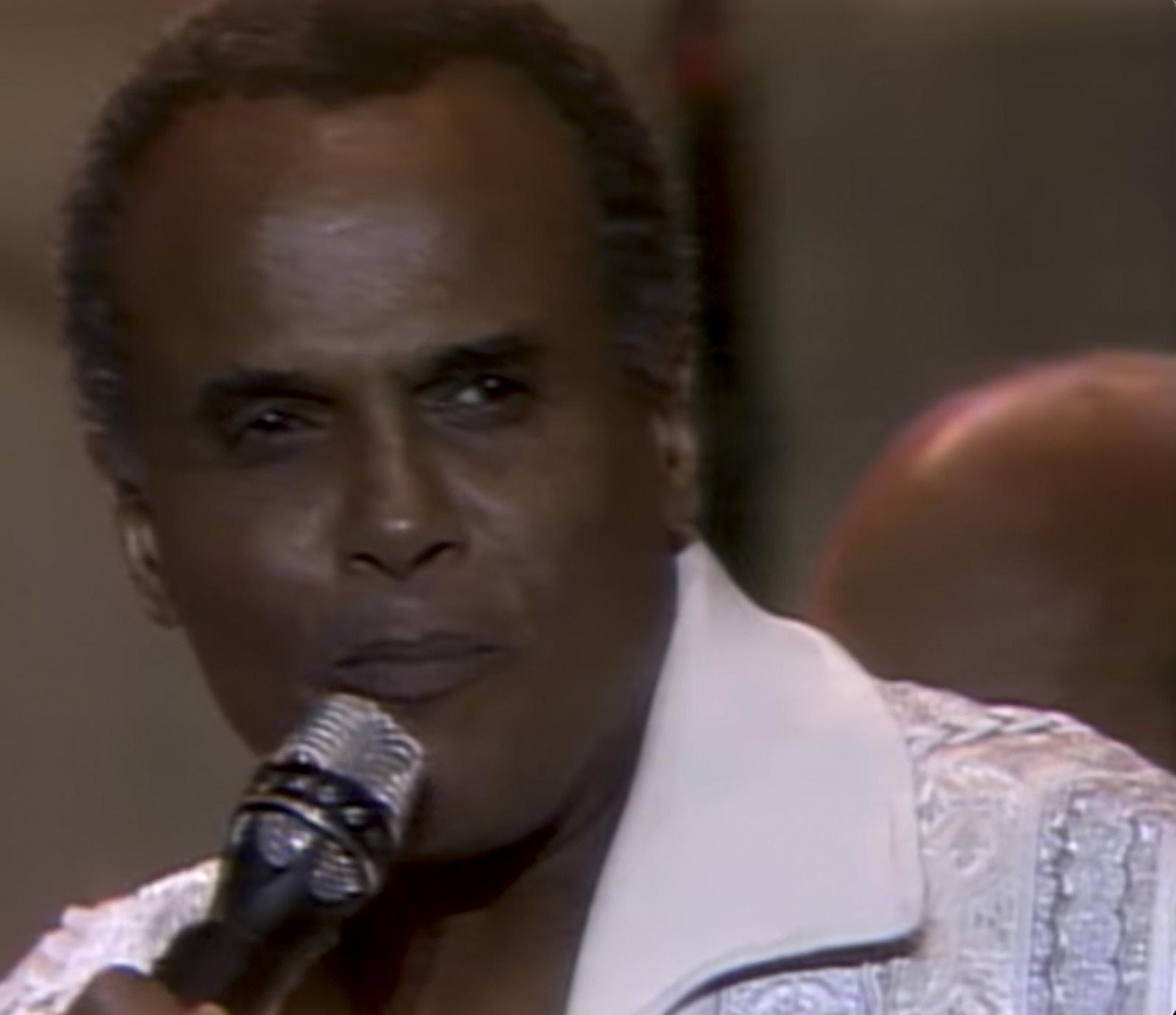
In this case, it is Legend-on-Legend in which Greatness begets Greatness as evinced in this stunning, spectacular, riveting and very danceable collection of music produced by a Legend in tribute to his Hero. States Donovan in the liner notes credits,“It took me a while but I knew one day I would make a ‘Covers’ album of another artist’s work. Harry is a natural choice for me. There is a simple connection of Roots Folk Music, and after a young fascination with Jazz when we first began, Harry and I chose to sing Folk Music And not just any Folk Music, but songs of Freedom and Social Justice. I saw in Harry and I a natural and committed understanding of how an artist can dive deep into Roots Music of Jazz and Folk, and change the content of the Pop Music World with important lyrics and Social Commentary.”
At the age of 95, Belafonte has epitomized the life of a world citizen, living by a single truth: “Get them to sing your song, and they will want to know who you are, and if they’ve made that first step, we can find a solution to hate.”
At the age of 16, Donovan set his artist vision — to return Poetry to Popular Culture — and he has done so on a worldwide scale. He was four years younger than The Beatles, Dylan and The Rolling Stones when he achieved all this. Widely regarded as one of the most influential songwriters and recording artists working today, at his induction into the R & R Hall of Fame in 2012 it was stated, “Donovan singlehandedly initiated the Psychedelic Revolution with Sunshine Superman.”
Drawing from many musical traditions and Belafonte’s lyrical baritone and emotive singing, Donovan’s new album has eight Belafonte classics plus two new songs. One written by Donovan titled No Hunger which is a direct UNICEF appeal for donations. Donovan says: ‘Harry was a UNICEF Ambassador and my tribute cover album to Harry is to remind new generations of artists to include in your work Social and Ecological Issues to help save our Planet for the future children of the world.” The other new song is Jamaica Time, written by Wayne Jobson (Co-Producer of seven

tracks on this album) which highlights Jamaica’s positive music influence on the world. Jobson, an expert on Jamaican Music History, states: “Donovan was first in the 1960s to bring into his recordings Jamaican influences. On his breakthrough Mento Music Hit Record, There Is A Mountain (1967), Jamaican Jazz Flautist Harold ‘Little G‘ McNair was featured. Donovan also recorded the first Reggae Fusion track Riki Tiki Tavi (1970) where he anticipated the Reggae Music explosion into Pop music.”
Hailed in the 1960s as Britain’s Bob Dylan, Donovan became one of the most influential songwriters of his generation. His early backup bands were the Jeff Beck Group and a pre-Led Zeppelin band, minus Robert Plant. That’s Jimmy Page’s guitar solo on Sunshine Superman
Donovan caught the wind with his very first single in which he amplified the words of King Solomon. Catch The Wind, came out when he was living on a beach, a park bench for his bed. It skyrocketed him to fame winning the very prestigious Ivor Novello Award. Paul Wales wrote that Donovan is “a musician that never became a hypocrite and whose music stands the test of time, trust me, a rare thing. His songs have a rare beauty.”
He emerged onto the scene in 1965 with three UK hit singles: Catch the Wind , Colours and Universal Soldier , the last written by Buffy Sainte-Marie. In September 1966, Sunshine Superman topped America’s Billboard Hot 100 chart for one week, followed by Mellow Yellow in December 1966, then 1968’s Hurdy Gurdy Man and Atlantis in 1969.
He counts the BMI Ikon Award,The Mojo Maverick Award, LifeTime BBC Folk Award among many additional international awards. 2014 saw Donovan inducted into The Songwriters Hall of Fame. He is also Doctor of Letters for Ecology, Hertfordshire University and Officer of the Order of Arts & Letters of The French Republic.
This masterwork album he created late 1965 at 19 years of age, one year before his friends The Beatles, influencing their album Sgt.
Fine Art Magazine • Spring 2022 • 2 DONOVAN’S “JUMP IN THE LINE” ALBUM
Belafonte was handed the mic by Lionel Richie to be the first soloist in the USA For Africa - We Are The World (Live Aid 1985)
DONOVAN STOOD ALONE AMONG HIS SONGWRITING PEERS IN THE SIXTIES, JUST AS YOUNG GRETA THUNBERG
STOOD ALONE IN STOCKHOLM 50 YEARS AFTER.
Pepper’s Lonely heart’s Club Band, and leading the way for many other artists. Can’t argue with that and while Donovan is an international superstar, rising to mercurial heights in the Flower Power era as not just a poet, bard, prophet, historian and proponent of all that is good and beautiful, it is now history that Donovan became the tutor of The Beatles on the famous trip to India. He was a genuine guitar hero, teaching both Lennon and McCartney finger style techniques that would later show up in such Beatles classics as Julia and Dear Prudence by Lennon, Paul’s Blackbird and George’s While My Guitar Gently Weeps. “Donovan was all over the White Album,”noted Harrison in the 1995 documentary The Beatles Anthology. Donovan encouraged and nurtured Harrisons’ songwriting, in particular teaching him secret descending chord patterns that he did not share with John or Paul, patterns which resulted in George writing the hugely successful Something from the Abbey Road record covered by everyone from Sinatra to Billie Eillish.
And yet Donovan is much more than the creator of the first Psychedelic Album — Sunshine Superman announced Flower Power for the first time and presented to the world the first World Music fusions of Folk, Classical, Jazz, Indian, Gaelic, Arabic and Caribbean. As highly influential and successful as the Sunshine Superman album was, Donovan had already scored four Top 20 singles, E.P.’s and albums in his so-called ‘Folk Period’ of early 1965 in which the seeds of what was to come were sown. This was evident on his Classical – Jazz fusion track on his Fairytale album of that year, Sunny Goodge Street. The lyric was first to describe the coming Bohemian invasion of popular culture, the return of Gaelic Mythology and True Meditation as the door to The Source. Donovan was oddly compared to Bob Dylan when it was Ramblin’Jack Elliot that both Donovan and Dylan emulated in their initial works. But Dylan never sang “that would” as “t’would.” The true similarity between them is that they are Poets of the highest Order. Donovan is chiefly responsible for introducing meditation and Eastern Philosophy into modern lifestyle and songwriting and also known for pioneering new production recording techniques in the studio, influencing many.
Donovan in his “Songs of Innocence,” has been compared to William Blake; his metaphysical songs to Donne and Herbert, his Gaelic-Celtic songs to Yeats, his children’s songs to Stevenson, his Nonsense songs to Carroll and Lear, his Yoga songs to the Vedic Hymns, his Jazz Classical compositions to Ellington and Lewis, his poetic public appeal to Auden. It cannot be overstated that Donovan has displayed the widest variety of songwriting skill, surpassing any songwriter one can name today. The sheer range of his accomplishment is Bardic, empowering our human journey through all stages of life and, most importantly, he displays a Poets’ true vocation, reuniting us with The Source.
Donovan’s most lasting achievement to date is that he was first to have created songs to save the earth from ecological disaster. He began this in the sixties and went on to compose 21 songs concerning what we now call ‘climate change’ highlighting the threat to the Ecosystem of our Planet Earth. Thus returna Donovan to be once again a poet of current events and a champion of climate change youth It is clear there is no such composer/artist like Donovan. Listening to his versions of Bleafonte classics on the tribute album, one also realizes there are few in the music world who have the breadth and scope, as well as heart, to bring back to life such well-known materaial as in his terpretation of the classic genius of Belafonte as in his sweet yet mournful version of Day-O
BELAFONTE STOOD ALONE AMONG HIS PEERS IN THE FIFTIES. THE FIRST SINGER TO SELL A MILLION ALBUMS AND THE FIRST BLACK MAN TO SWIM IN LAS VEGAS.
According to historydaily.org post by Barbara Harris, “The Banana Boat Song (a traditional work song), most likely originated around the turn of the twentieth century when banana trade in Jamaica increased. It was sung by workers who loaded shipping vessels with bananas down at the docks. The dockworkers typically worked at night to avoid the harsh heat of the day. When daylight arrived, they knew the boss would come to tally up the loads so they could go home. The tune had a ‘response’ chorus, meaning the workers were supposed to chime in with a response to the singer’s statements. Like most work songs, the lyrics of The Banana Boat Song often changed or were altered to fit the situation.”
Belafonte was born in Harlem in 1927 to multiethnic parents from the Caribbean. As a child, he moved to his mother’s native Kingston, Jamaica – “an environment that sang” – where he was exposed to the captivating music of calypso as well as prejudice based on his skin tone. Back in New York, Belafonte began acting classes at the New School’s Dramatic Workshop in 1945, where he befriended actor-singer-activist Paul Robeson, the inspiration for Belafonte’s social activism. Swept up in the New York folk scene in 1950, Belafonte created a new repertoire of folk songs, work songs, and calypsos, providing an authentic and dignified look at Black life and earning him a contract with RCA Victor in 1953.
In 1955, Belafonte met Irving Burgie (aka Lord Burgess), whose songwriting on Belafonte’s debut album would forever change Belafonte’s career. The first album to sell over a million copies in a year, Calypso (1956) introduced Caribbean folk music to American audiences, who dubbed Belafonte the “King of Calypso.” This early sound made a lasting impact on American music – Gotye, Lil’ Wayne, and Jason Derulo have all sampled “Day-O (The Banana Boat Song)” in recent years, while Jump in the Line (Shake, Senora) was featured in the 1988 film Beetlejuice and its 2019 Broadway musical production.
In the 1960s, Belafonte returned to his musical roots in American folk, jazz, and standards, while also emerging as a strong voice for the civil rights movement. Belafonte was a close confidante, friend, and supporter of Martin Luther King, Jr. He helped organize “We Are the World” and has been a UNICEF Goodwill Ambassador since 1987. He was a Grand Marshal for the 2013 New York City Pride Parade and advised on the 2017 Women’s March on Washington.
He also, almost single-handedly, integrated Las Vegas. According to Rosemary Pearce’s post Segregation and Celebrity on the Strip, “The top black artists could earn between $25,000 and $50,000 per week in a residency at one of the big Vegas hotels. ‘Residency’ is a perhaps a misnomer, however: black entertainers were frequently banned from staying in the hotels they performed at. Las Vegas was so strict in its segregation policies that it was known as the “Mississippi of the West.” It was, after all, a town built on tourism and to allow blacks in was to affront white tourists from strictly segregated regions.”
For example, Belafonte recalls his first Las Vegas engagement in 1952 at the Thunderbird. Forbidden to stay at the hotel, Belafonte was told to leave by the back door and stay in a black motel room that smelt of dog urine (singer Pearl Bailey’s dog had been staying there previously). When he attempted to cancel or buy out the contract, he was told the only way he could leave Vegas without fulfilling his obligations was “in a box.” Belafonte managed to turn the situation around and was welcomed back to the hotel to stay, although this was through a family mob connection he had back in New York.
3 • Fine Art Magazine • Spring 2022
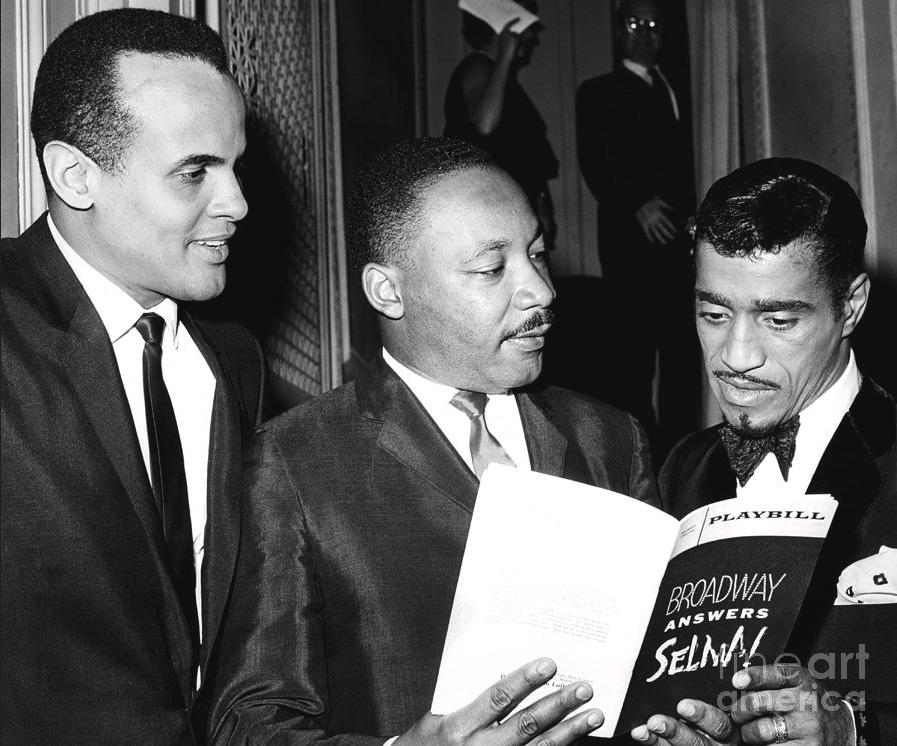
Singer, actor, producer, activist and ally, Belafonte used the arts as a mechanism to effect social change on a global scale.
Belafonte took revenge on the Thunderbird by plunging into their swimming pool, the first black person to do so. His swim was a bold move in consideration of the prevailing stigma around African Americans being “unclean”; in 1953 the Hotel Last Frontier drained their pool when actress Dorothy Dandridge dared to dip her foot in. This was at a time when Dandridge was a movie star who became the first African American to receive an Academy Award nomination for best actress for her role Carmen Jones (1954), a well-mounted modernizing of the Georges Bizet opera, set in the U.S. South with an all-black cast that featured Pearl Bailey and Harry Belafonte.
Belafonte’s next role was in Island In The Sun, Otto Preminger’s film about race relations and interracial romance set in the fictitious island of Santa Marta. As a result of playing interracial love scenes with Belafonte, Joan Fontaine received poison pen mail, including some purported threats from the Ku Klux Klan. Fontaine turned the letters over to the FBI.
Belafonte’s refusal to accept the discriminatory hotel policies foreshadows the intensity with which he later became involved in the Civil Rights Movement during the late 1950s and early 1960s.
Though Belafonte describes the incident as a personal affront, his later Civil Rights work shows clearly that he was not a man who wanted to be an exception to the rules, but used his influence and wealth to further the civil rights cause
In his autobiography, My Song, Belafonte compares his attitude toward the policies to that of another black performer in Vegas at that time: Sammy Davis Jr. Part of the famous ‘Rat Pack,’ Davis Jr. hung around hotel suites with Frank Sinatra and Dean Martin while in town performing his song and dance routines at the Frontier. Belafonte reflects that he did not fit in with the Pack, perhaps being too serious or proud, but observed that Davis Jr. “oozed deference and accommodation” in the way he clowned about for the others’ entertainment. Despite being paid more than Belafonte, Davis Jr. did not even have a suite of his own, having agreed to stay in a black motel at the edge of town. The hotel management also barred him from the casino and restaurants, and Davis Jr. omplied.
“You have to be twice as good to get half a chance,” Earl Woods often said to his son, Tiger.
Fine Art Magazine • Spring 2022 • 4
Harry Belafonte, Martin Luter King, Jr., King, Sammy Davis, Jr. at the Broadway production of Selma.
“Calypso”—Harry Belafonte (1956)
Added to the National Registry: 2017
Essay by Judith E. Smith
Harry Belafonte, the Harlem-born son of poor undocumented Jamaican immigrants, an untrained singer whose heart was set on becoming an actor, made music history with “Harry Belafonte: Calypso.” This record was the very first by a solo performer to sell a million copies, holding the top spot on “Billboard’s” pop album charts for an unprecedented 31 weeks (in addition, 58 weeks in the top ten, 99 weeks among the top 100). The higher-ups at RCA had doubted the commercial potential of a thematically unified recording of “island and Calypso songs,” but the “Calypso” record, released at the end of May 1956, quickly soared in sales, knocking Elvis Presley’s first album out of the way to take over the top spot within a few weeks. The “Calypso” album also reached the top of music charts in most of Europe, Asia, Africa, and the Caribbean, and was “covered” via native language recordings in many countries.
Belafonte often joked that it took him 30 years to become an “overnight success.” He had dropped out of high school after one semester and joined the World War II Navy at age 17. His experience in the military included political education from college-educated soldiers about how the Jim Crow racial status quo would have to be challenged as part of a national system. From this moment on, Belafonte committed himself to “help make things different.” Through the American Negro Theatre, acting classes at the New School’s Dramatic Workshop, and a friendship with Paul Robeson, he found the postwar black and interracial left dedicated to keep fighting to end Jim Crow. But he couldn’t find paid work in the theater. A jazz club he frequented invited him to sing jazz standards; although his voice was untrained, he projected something powerful and compelling on stage. His performing life had begun.
Participating at left-wing political events in 1950 and 1951, Belafonte experimented beyond the jazz standards he was paid to sing, trying out songs associated with Robeson, such as “Sometimes I Feel Like a Motherless Child” and “John Henry”; Dizzy Gillespie’s “Cubano Be Cubano Bop” and the Calypsonian King Radio’s 1946 calypso song “Brown-Skinned Girl.” When he quit singing jazz in clubs in December 1950, and reintroduced himself as a folk singer at New York’s famed Village Vanguard in October 1951, he drew on this experimentation for his new repertoire of “folk songs, work songs, [and] calypsos.” Belafonte felt these songs signaled to an audience: “here’s Negro life with as much dignity as I can give it.” Singing with guitar accompaniment freed Belafonte to draw on his dramatic training to use his hands, his face, and his body to inhabit and convey the world invoked by a song. His musical style, appeal and charisma were inseparable from his uncompromising political stance, personal beauty, and emotional expressiveness. Reviewers described him as the “total package”: “his baritone, his facial expressions, and bodily movements become part of the words and music, and the result is a rich dramatic portrayal.”
With this repertoire of “folk songs, work songs, and calypsos,” Belafonte was not seeking to embody one particular cultural tradition, but instead to present himself as a Black world citizen who drew from and respected multiple traditions. Rejecting the segregation of musical genres was one of the ways Belafonte chose to protest racialized boundaries and to resist white supremacy. He did not have the vocal resonance or concert presence of Robeson. He did not convey the experiential authority or musical ingenuity of southern born blues performers like Lead Belly, and he didn’t possess the facility with wordplay of the Trinidadian calypsonians. But his

juxtaposition of folk songs, work songs, and calypsos renewed each form. His clearly articulated calypsos, absent the island costumes, enabled him to represent calypso as part of other forms of black and non-elite culture, repositioning the music away from colonial associations with “native” inferiority or tourist-driven exoticism.
Belafonte’s intensity, his dramatic authority, his phrasing and his vocal emphasis made his audiences feel they were hearing the music for the first time, engaging directly with a world that came alive through his performance.
The collection of songs that constituted the “Calypso” album resulted from several fortuitous events. By August 1955, Belafonte was a full-fledged celebrity as a result of nightclub and stadium appearances across the country, performance on Broadway, and his starring role in the hit film production of “Carmen Jones.” This gave him the clout to bargain successfully for an extended time slot on television, and more control over the musical selections, as his conditions for an appearance on the television show “Colgate Comedy Hour.” Belafonte’s good friend, the left-wing writer William Attaway, then working for NBC, was assigned to write the show. Attaway introduced Belafonte to his friend, left-wing singer, composer and folklorist Irving Burgie, who was then collecting and performing Caribbean folk music. Burgie explored black diasporic musical borrowings, including meringues from Santo Domingo and mentos from Jamaica.
With five of Burgie’s songs as thematic core, Attaway and Belafonte went to work on a Caribbean script, introducing ordinary working people and Caribbean culture on the island. In advance publicity for the TV show, Belafonte promised “authentic West Indian work songs and love ballads, something no one has ever done on TV before.” He argued that the well-known Calypsos “covered” by American singer Ella Fitzgerald and Louis Jordan’s well-known “Stone Cold Dead in the Market” and the Andrews Sisters’s “Rum and Cocoa Cola,” were no more representative of West Indian culture than Patti Page’s novelty pop song “How Much is That Doggie in the Window” was of American culture. Burgie’s songs included two that would become indelibly attached to Belafonte’s persona: the Jamaican work song “Day-O (Banana Boat Song),” dramatized
5 • Fine Art Magazine • Spring 2022
with a capella opening and a call-and-response chorus, and the sweet love song “Jamaica Farewell.” The television show itself was limited by its “Caribbean as tourist haven” framework, but the integration of songs and theme, and the appeal of the music generated great excitement. Within two weeks of the broadcast, the recording process for the album began.
For the recording sessions in October 1955, Belafonte gathered his close friend, the jazz clarinetist Tony Scott and members of Scott’s orchestra (Belafonte wanted to inject “a jazz feeling” where it seemed to fit) and other talented musicians, including Burgie’s colleague, Jamaican pianist and penny-whistle player Herb Levy, and Haitian guitarist Franz Casseus. The powerhouse chorus of singers was led by actor/singer Brock Peters. Burgie played guitar and sang harmony on the chorus of four of the songs, and Attaway wrote the liner notes. The album included eight songs written by Burgie, one written by Attaway and Belafonte, and two songs that were King Radio calypsos Belafonte had been singing for several years, “Brown Skinned Girl,” and “Man Smart (Woman Smarter).”
The album’s rich and varied orchestration, Belafonte’s articulation, and the versions of new and older songs made this album a departure from Belafonte’s previous recordings and from other calypso recordings. Attaway’s liner notes signaled this when he wrote that the collection was “not just another presentation of island songs…. Here are songs ranging in mood from brassy gaiety to wistful sadness, from tender love to heroic largeness. And through it all runs the irrepressible rhythms of a people who have not lost the ability to laugh at themselves.”
The “Calyso” album’s extraordinarily enthusiastic reception had many sources. It drew from the synergy and cross-promotion of Belafonte’s multiple sources of celebrity from the nightclub stage to radio, television, and film. Recording for national sales through RCA, his repertoire of folk songs, work songs and calypsos was well suited to the new long-playing album format, purchased primarily by record buyers with more discretionary income. Belafonte’s recordings became increasingly commercially successful in the cross-over pop market, offering diverse audiences of black and white steelworkers, grandmothers, symphony patrons, bobby soxers and school children a Black alternative to rock and roll. His first long-playing folk album “Mark Twain,” composed of songs he had sung on Broadway and on television, had been released in 1954, but rose to third place on the “Billboard” charts in January 1956; the folk album “Belafonte” released in 1955, rose to first place on the charts in February 1956, holding the top spot for six weeks. After release in May 1956, “Calypso’s” rise on the charts was immediate and long-lasting.
The unprecedented national and international success of the Caribbean folk songs, the occasional calypso, and songs composed in the folk song mode, written by Burgie and performed by Belafonte performed on “Calypso,” attached Belafonte’s celebrity to calypsostyled music, and generated a commercial “calypso craze.” Music fan magazines tagged Belafonte as “King of Calypso,” a title normally reserved for the winner of Trinidad’s annual carnival competition. The success of this recording accelerated an already well-established process of calypso reinvention, which West Indian literary critic Gordon Rohlehr described as traveling in the 1930s from Trinidad into the United States, the United Kingdom, Jamaica, the Bahamas, Surinam, Venezuela, Ghana and Sierra Leone, all places where singers began to refer to themselves as “calypsonians.” In the US, the success of the “Calypso” album encouraged Latin artists Candido, Tito Puente, and Perez Prado, jazz singers Sarah Vaughan and Dinah Washington, pop singers Rosemary Clooney and Pat Boone, and even actor Robert Mitchum to record calypso songs. Rohlehr noted that, after Belafonte, distinctly different folk singers from throughout the Caribbean would call themselves “calypsonians” or “calypso singers,” as long as it was profitable to do so.
In interviews, Belafonte tried to distance himself from the
“calypsomania” spurred by the album’s success. In one interview published early in 1957, he described himself as a “singer of folk material…from every section of the world” and described the hit singles “Jamaica Farewell” as a West Indian folk ballad and “Day-O” as a “West Indian work song.” He praised the topicality of “True calypso” as a “kind of living newspaper,” and promised to keeping singing “true calypso as I see it [and]…every other kind of music that carries truth in it.”
The timing of Belafonte’s celebrity, and his chosen political commitments connected him with the new stage of civil rights protest, with growing conflicts between challengers and defenders of racial segregation and backlash following the Supreme Court’s Brown v. Board of Education school desegregation decision. Belafonte’s rise coincided with new demands for racial equality, which he thoughtfully shaped his performance to embody. Buying and playing his records may have provided audiences with a tangible connection to the combination of Black and multi-racial and international cultures he and his music represented. A survey of New York area male and female high school and college students reported in Billboard in December 1956, found that although more students ranked white performers Elvis Presley, Frank Sinatra, Teresa Brewer and Doris Day as their favorite singers, Belafonte had “the highest percentage of record buyers.” Perhaps when students at Marquette, a Jesuit university in Milwaukee, Wisconsin, petitioned to replace Presley with Belafonte in the student union jukebox, they wanted to associate themselves with the civil rights promise Belafonte represented.
When in March 1956, the young minister from Montgomery, Martin Luther King, Jr., approached Belafonte to ask for his support for the bus boycott underway, Belafonte’s second record was at the top of the music charts, and the “Calypso” album had been recorded but not yet been released. Belafonte answered the call, and from then on, he drew on his star power to lead demonstrations and raise money for the civil rights movement. The Black press enthusiastically covered Belafonte’s stunning accomplishment and his commitments to the struggle for racial equality. White audiences may have wanted to embrace Belafonte as a token of racial progress. But Belafonte consciously used all his interviews and superstar media attention in white spaces to open doors for other performers, to challenge racial exclusions and discrimination, and to associate his name and his music with the freedom struggle.
The enormous popularity of the Calypso album gave Belafonte’s stunning performance of Burgie’s songs an outsized impact on defining “calypso” music for American audiences, and around the world. The long life of Day-O offers one trace of the music first introduced here. The Nashville sit-in students would sing Day-O when in jail in 1960; the Freedom Rider protesters wrote new words, singing “Freedom’s Coming and It Won’t Be Long” in their cells in Mississippi’s Parchman Penitentiary in 1961. In the 1980s, new generations encountered its memorable presence in Tim Burton’s 1988 film Beetlejuice; New York Yankee fans have heard the song reverberating throughout the stadium; it has been sampled in recent releases by rap artist Lil Wayne and popular singer Jason Derulo. The work song of the Caribbean labor gang still “carries truth in it.”
Judith E. Smith is Professor of American Studies at University of Massachusetts Boston where she teaches courses on media history, film history, and US culture since 1945. She has published essays on postwar film, radio, and television, and is the author of “Visions of Belonging: Family Stories, Popular Culture, and Postwar Democracy, 19401960” (New York: Columbia University Press, 2004) and “Becoming Belafonte: Black Artist, Public Radical” (Austin: University of Texas Press, 2014).
* The views expressed in this essay are those of the author and do not necessarily represent the views of the Library of Congress.
Fine Art Magazine • Spring 2022 • 6

The Ocho Rios Sessions
PHOTOS BY CARLOTTA HESTER/GOVINDA GALLERY
Leave it to Donovan to produce and record a tribute to one of the all time greats, Harry Belafonte. Jump In The Line is not just a brilliant tip of the hat musically speaking. It is also Donovan's shout out to Harry as a great champion of social justice, an actor and everything else that we all love about Belafonte. After all, both Donovan and Belafonte are ‘folk artists’. Donovan made sure Belafonte was the first to hear the album and when he did, he told Donovan how pleased he was. Donovan’s album was now part of Belafonte’s legacy. Donovan’s take on Calypso is timelessly enchanting. Everything he sings is pure heaven — beautiful, haunting and evocative. Yet, even beyond this, it is an emotional and poetic work of art. I hope he never stops singing. His message is iconic, encapsulating the sixties and bringing it home to today. Who doesn’t love Donovan?
Chris Murray: “I was delighted that Donovan asked me to come with him and assist in Jahmaica during the recording of Jump In The Line at Zak Starkey’s studio. It was an amazing two weeks. Donovan’s muse and wife Linda and his grandson Joolz were also on hand for inspiration and good times. Recording with all Jamaican musicians, Donovan was assisted by our mutual friend Wayne Jobson as coproducer. Wayne lives in Ocho Rios and is a remarkable talent. I had assisted Donovan during his producing and recording of his album Shadows of Blue in Nashville in 2013, which featured the cream of the crop of the Nashville session cats. John Sebastian also came to Nashville to play harmonica on that beautiful album for his life
long friend Donovan. Both Jump In The Line and Shadows of Blue are remarkable and demonstrate yet again the genius of Donovan. It was a thrill to be with Donovan for both of those endeavors.”
Beginning with Devon Ferguson’s rough and tumble banjo, and with his Wooden Flute featured on the fills and solo, Jump In The Line rocks one’s body in time. It is happy music with brilliant lyrics and enough background chatter to bring to mind the similar effect used in Mellow Yellow. Donovan gives an acoustic guitar reggae strum to Where Have All The Flowers Gone? No effects are needed - the tremolo in Donovan’s voice carries us where we need to go. “Gone to graveyards everyone…when will they ever learn?”
A beautiful choir featuring Jeffrey Starr (arranger), Earl Smith, Paul Lymie Murray and Matthew Christie brings it home. Shenandoah is equally touching and The Banana Boat song becomes a poetic call and answer with the choir adding more than a touch of power, grief and anger to what is definitely not a pop ditty. Clarity of production is the keynote to this recording and producers Wayne Jobson & Donovan get the most out of the studio. and features the percussion of Prince Michael. “Sounds of laughter everywhere and the dancing girls sway to and fro” lighten the mood even though it is Jamaica Farewell. Throughout all the cuts, Donovan’s acoustic guitar comes through soft, loud and clear. “Ackee, rice and fish are nice,” you know that’s why the singer’s heart is down and his head is turning around.” because he has to leave his little girl in Kingston Town.
7 • Fine Art Magazine • Spring 2022
Co-producer Native Wayne Jobson with Donovan, Trojan Records Studio, Ocho Rios, Jamaica.
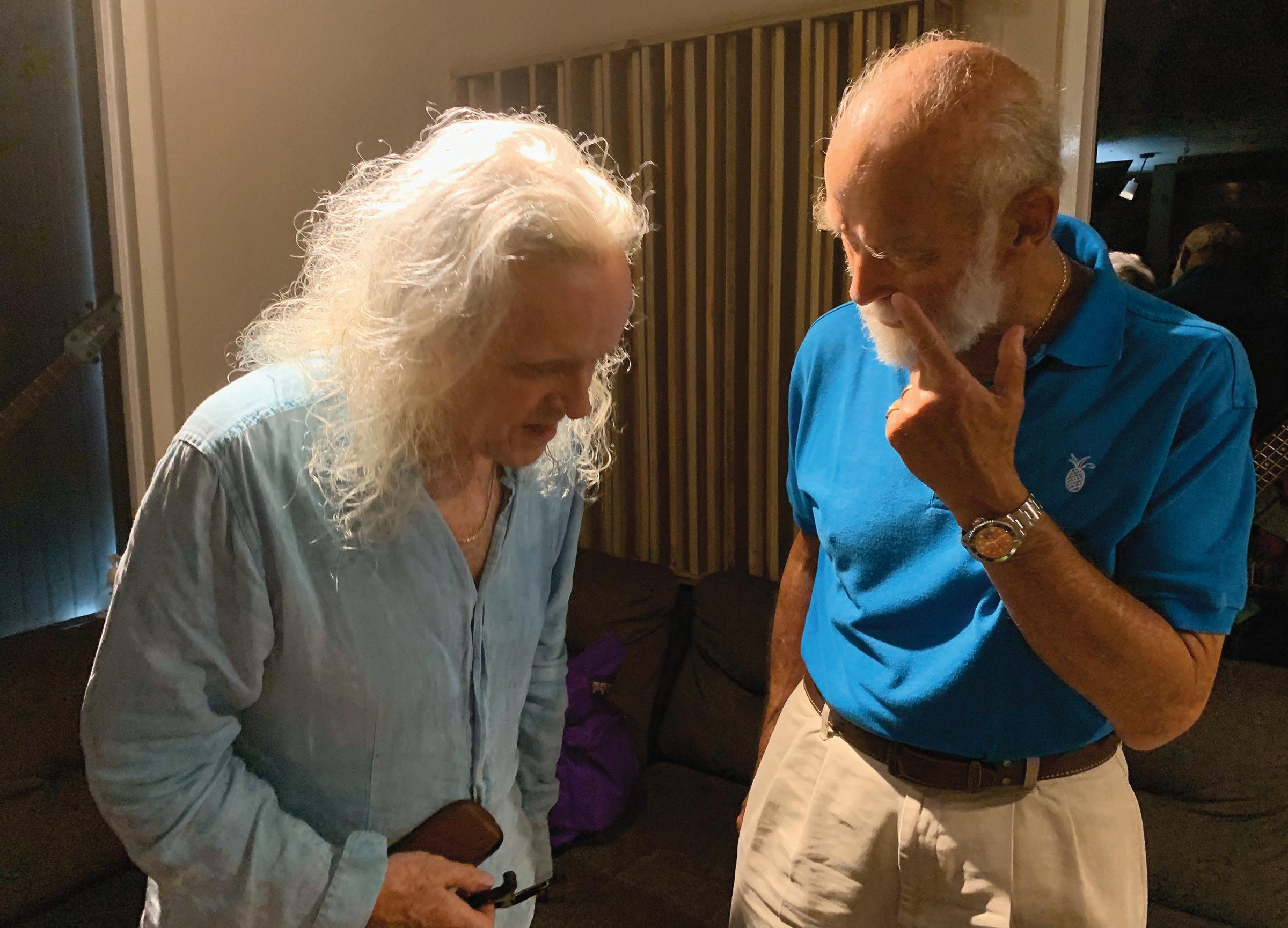

Light up your spliff/ Light up your chalice
Make we burn it in a Buk In Hamm Palace
—Peter Tosh, “Mystic Man”
One evening Wayne Jobson arranged for Donovan and Linda along with myself and my wife Carlotta who was visiting for three days, to visit the Golden Eye resort built by Chris Blackwell, who was also in Ocho Rios. I knew Chris as I launched the illustrated book about his label “Keep on Running: The Story of Island Records” at Govinda Gallery in Washington, and Chris was at the launch signing books. We had dinner together after, and Chris is good company. Donovan and Linda rested after long day recording, but I went with Carlotta and “Native Wayne”. At Golden Eye was Prince Michael of Kent, and the beautiful Caroline St.George, and we all had a great chat together. Though the sessions were ‘closed’, I did invite Prince Michael and Caroline to stop by and meet Donovan and Linda. The next morning when the day’s recording began all was running smoothly and I exited the studio and went out front. There was Prince Michael and Caroline just then arriving. I was so glad to see them both, and welcomed them and brought them into the studio and the session. When Donovan took a break, he came over to Prince Michael and I introduced them. It turns out Prince Michael is a big fan of Harry Belafonte and he and Donovan talked about the music. The next thing you know Prince Michael is playing percussion in the session! He is credited on the album, but you will have to listen to the album to hear on which track. It was great day for all. I sent Prince Michael the album on its release. He wrote back a lovely letter with words to the effect that “Jump In The Line” was being heard in the hallways of Buckingham Palace.
Fine Art Magazine • Spring 2022 • 8
Donovan and Prince Michael of Kent talking about Harry Belafonte and his music at Trojan Records Recording Studio, Ocho Rios, Jamaica.

ZAK STARKEY (SON OF RINGO AND LONG-TIME DRUMMER WITH THE WHO) OPENED HIS STUDIO IN JAMAICA IN 2018.
“I first got into reggae music through my mother who had a copy of Toots & The Maytals “Funky Kingston” and then I got into punk and “White Man (In Hammersmith Palais)” name checks a bunch of artists like Dillinger and I started checking them out. Then when I was about 12, my dad gave me a copy of “Man in the Hills”. He’s a big Burning Spear fan so basically my first exposure to Reggae came through my parents and The Clash, which is a bit weird.”

9 • Fine Art Magazine • Spring 2022
Donovan talking with recording engineers Barry O’Hare and Bravo, with Wayne Jobson and Chris Murray, at Trojan Records Studios
Donovan with backup singers Jeffrey Starr, Matthew Christie, Earl Smith and Paul Lymie Murraya.

“Tripppin’ down the rhythm of time to the Fountain of Youth / Escaping to another world to discover the truth – I’m on Jamaican time.” — Donovan, “Jamaican Time”
CHRIS MURRAY
Aide de Camp For The Ages
Aide-de-camp It’s a term you don’t hear with regularirty these days, but in the last couple of weeks, I came upon it twice, both times used by the heroic folk poet balladeer Donovan Leitch, simply known as Donovan. Like Dion and Dylan, Madonna and Elvis, one name more than suffices for this living icon. In the first instance, chronologiclly, The Bard referenced longtime tour manager Gypsy Dave (David John Mills). Most recently, I found it in the liner notes to Donovan’s great new Harry Belafonte tribute album Thanks to : Aide-d-Camp : Chris Murray. is French expression meaning literally “helper in the [military] camp”) is a personal assistant or secretary to a person of high rank, usually a senior military, police or government officer, or to a member of a royal family or a head of state a subordinate military or naval officer acting as a confidential assistant to a superior, usually to a general officer or admiral.
Oh - you mean like Silvio in The Sopranos?
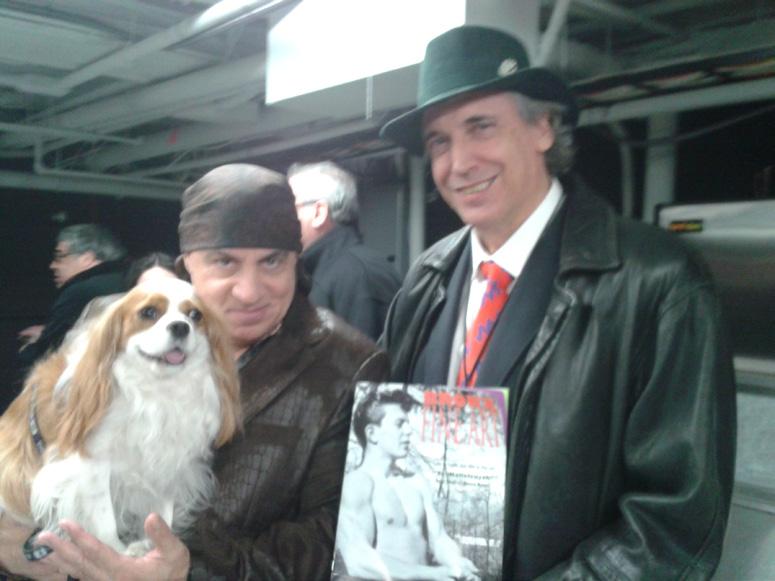
addition to the Donovan/Belafonte CD came the JOOLZ JONES & The Jukes “BLUES TRIBUTE TO BRIAN JONES BY HIS GRANDSON JOOLZ JONES - M.C. DONOVAN LEITCH. That’s a long title but a must have for any collection. Brian never sung a note on a Stones album and listening to Joolz, makes you wonder what Brian might have sounded like.
One of the cool things about knowing the A-d-C is that sometimes you get stuff along with information. In this case, in
Getting back to the Aid-de-Camp, Chris, owner of the heralded Govinda Gallery in Washington D.C., as well as publisher of books by an awesome collection of writers, artists and photographers has been everywhere lately — NYC for Andy Warhol’s 35th Anniversary Memorial Service; the launch of Christopher Makos’ just published book Andy Warhol Modeling Portfolio (G Editions) at the legendary Strand Bookstore also in Manhattan; the major Dylan art show in Miami followed by the openeing May 4th of the Dylan Center in Tulsa. Chris’s blog is an on-going travelogue of cultural happenings not to be missed. You can find it easily on line and take the trip here.
Fine Art Magazine • Spring 2022 • 10
Donovan with his wife and muse, Linda Lawrence, and aide-de-camp, Chris Murray, Ocho Rios, Jamaica.
Speaking of Silvio, here he is with Victor Forbes, Capitol Theater for the Rascals Once Upon a Dream Show, 2012

The Amazing Bob Dylan Retrospectrum Exhibition
I believe that the key to the future is in the remnants of the past. That you have to master the idioms of your own time before you can have any identity in the present tense. Your past begins the day you were born and to disregard it is cheating yourself of who you really are.”
— Bob Dylan, The Beaten Path, 2016
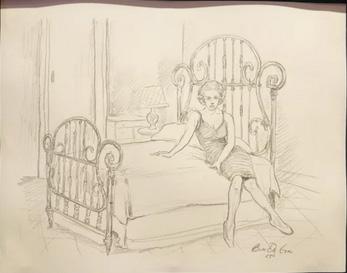
11 • Fine Art Magazine • Spring 2022
Chris Murray: “I went to see the extraordinary exhibition of Bob Dylan’s pantings, drawings, and iron works at the Frost Museum in Miami. I was blown away by Dylan’s art.”

Dylan or Donovan? Fortunately, we have both
(I) Don’t think Donovan gets enough props. He started that whole singing in a posh English accent thing copied by Syd Barrett, Mark Bolan, David Bowie, Peter Gabriel, Nick Drake, Al Stewart etc.. His psychedelic stuff with strings is ace too. People just thought he ripped off Dylan but he gives a good account of himself here “The one who really taught us to play and learn all the traditional songs was Martin Carthy – who incidentally was contacted by Dylan when Bob first came to the UK. Bob was influenced, as all American folk artists are, by the Celtic music of Ireland, Scotland and England. But in 1962 we folk Brits were also being influenced by some folk Blues and the American folk-exponents of our Celtic Heritage ... Dylan appeared after Woody [Guthrie], Pete [Seeger] and Joanie [Baez] had conquered our hearts, and he sounded like a cowboy at first but I knew where he got his stuff – it was Woody at first, then it was Jack Kerouac and the stream-of-consciousness poetry which moved him along. But when I heard Blowin’ in the Wind it was the clarion call to the new generation – and we artists were encouraged to be as brave in writing our thoughts in music ... We were not captured by his influence, we were encouraged to mimic him – and remember every British band from the Stones to the Beatles were copying note for note, lick for lick, all the American pop and blues artists – this is the way young artists learn. There’s no shame in mimicking a hero or two – it flexes the creative muscles and tones the quality of our composition and technique. It was not only Dylan who influenced us – for me he was a spearhead into protest, and we all had a go at his style. I sounded like him for five minutes – others made a career of his sound. Like troubadours, Bob and I can write about any facet of the human condition. To be compared was natural, but I am not a copyist.” – From a post on a youtube comment by Roddy Fraser.

“Season of the Witch, Catch The Wind, Sunshine Superman, Hurdy Gurdy Man, Mellow Yellow, Atlantis, Wear Your Love Like Heaven, Riki Tiki Tavi, Lalena, To Susan On The West Coast Waiting. And those are just the songs that were on the radio. The further we get away from the original, the worse it gets.” – John MellancaMp
Fine Art Magazine • Spring 2022 • 12
SID “THE KID” MAURER
Donovan’s Art Director, Collaborator and Friend
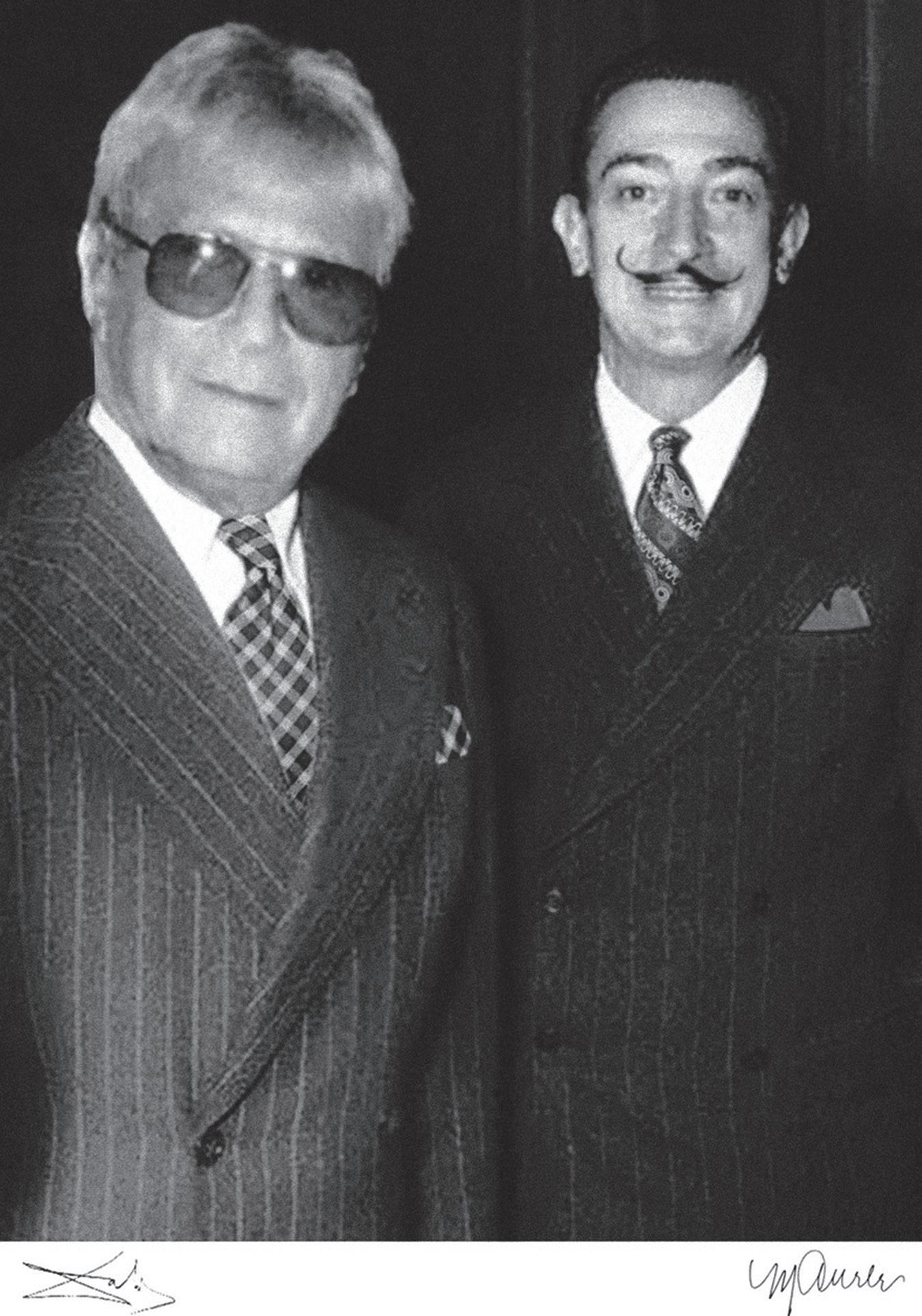
Sid Maurer is a man of great and many stories now compiling the soon to be published book of his life and times globally in the music industry. His long career in the world of Art and Music began at seventeen when he was hired as assistant art director at Columbia Records in New York City, where he spent weekends playing trumpet in Jazz clubs. As the music business exploded, Maurer worked designing album covers and promotional material for popular artists most of whom live beyond their years, today in the Rock and Roll Hall of Fame.His friendship with and ground-breaking work with Donovan is described in depth in the following pages.Thanks to Marilyn Goldberg of Museum Masters International for our introduction to this great artist and man —VBF
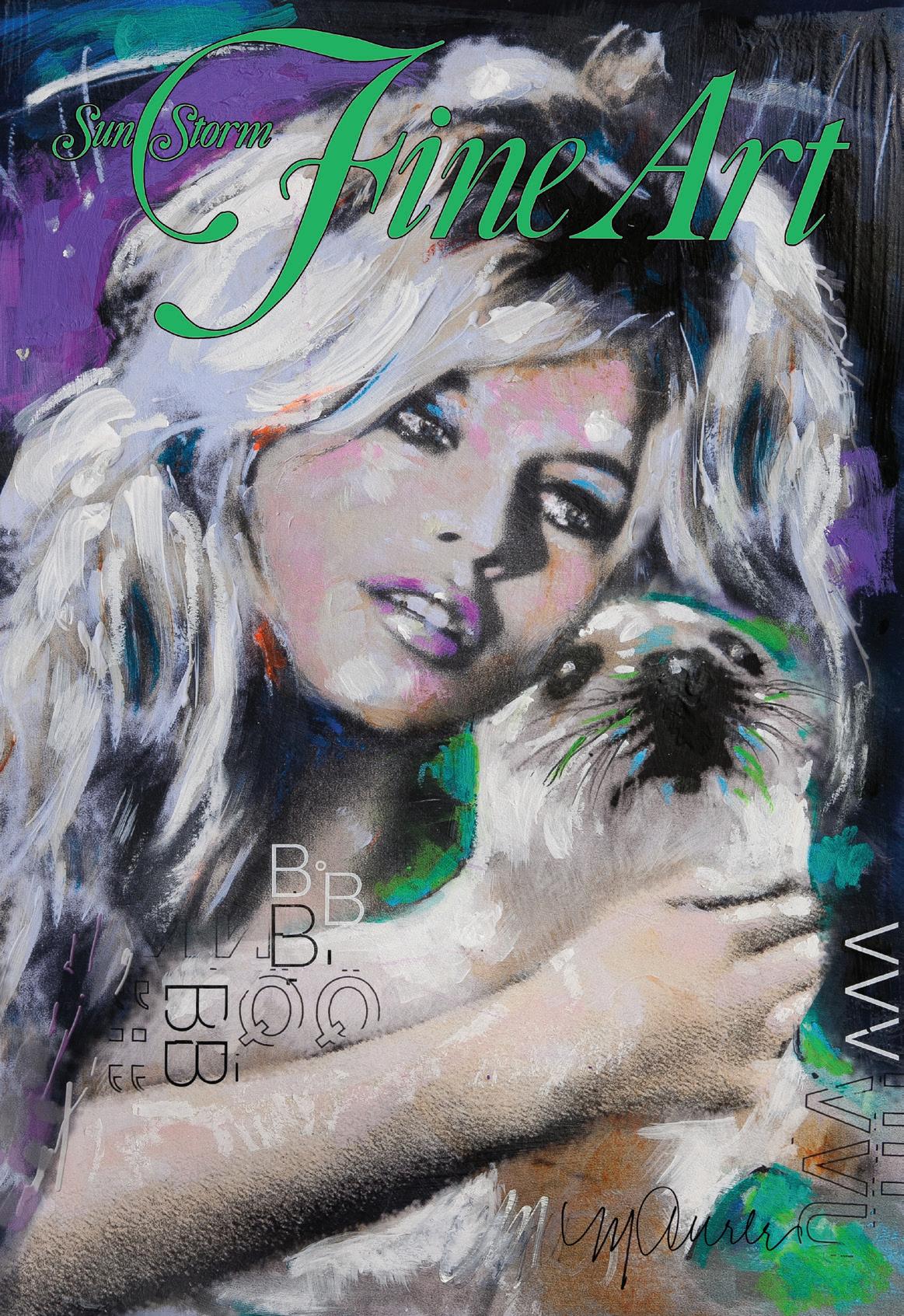
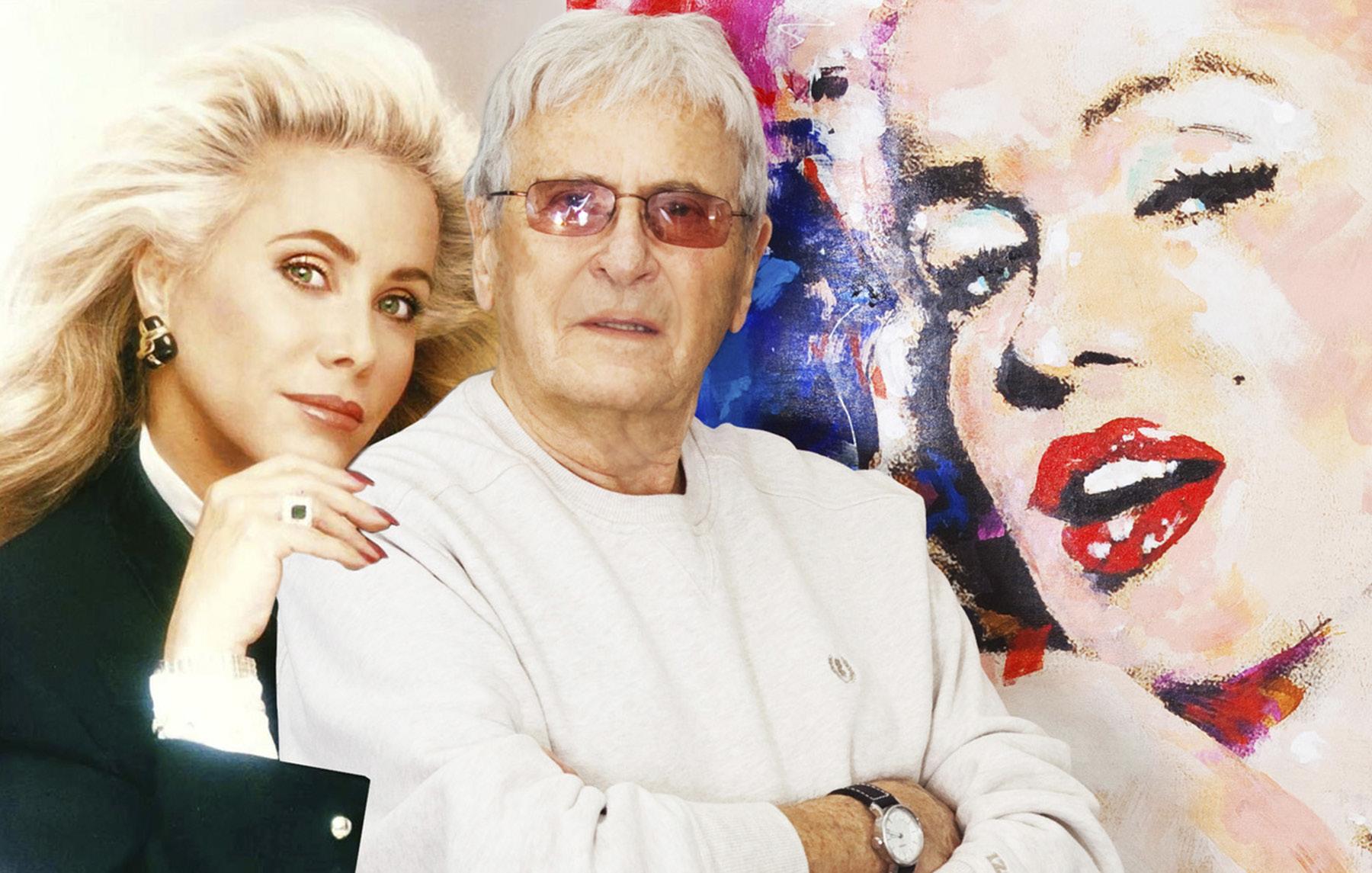
13 • Fine Art Magazine • Spring 2022
Marilyn Goldberg, Pres. Museum Masters International, builds on Sid’s legacy with future exhibitions
Sid & Sal
Sid Maurer’s Brigitte Bardot graced the cover of Fine Art Magazine
®
He was so shy....So quiet...And overwhelmed by his success. He went from sleeping on the beach and park benches to stardom literally overnight.
Somewhere between Their Satanic Majesties Request album and the recording of Sympathy For The Devil, Brian Jones, went to the dark side. Unceremoniously canned from the band he started, Jones, arguably the heart and soul of the Rolling Stones, was found (still-breathing some say) at the bottom of his swimming pool at English countryside home, Cotchford Farm. In one of those yet-to-be-solved legendary rock and roll deaths, the mystery remains. Yet the facts of his life are indisputable. “He formed the band. He chose the members. He named the band. He chose the music we played. He got us gigs…he was very influential, very important, and then slowly lost it,” said Stones bassist Bill Wyman. None other than Bo Diddley called him “a fantastic cat who handled the group beautifully.”
Enter Sid Maurer, a major league New York City art director/artist who helmed an agency that produced album covers at the rate of one a day for a few years in the psychedelic era. It was during this period that Maurer’s work gained major recognition with best-selling records and sales of his paintings in galleries from Manhattan to London to where he regularly commuted to visit his best friend, the legendary troubadour/teen idol/rock star who still goes by the single name of Donovan. They met on his maiden voyage to America when “Don” was freaking out over the excessive enthusiasm of secretaries-turned-groupies and the business persona of label president Clive Davis at the Columbia/Epic offices. At the time, Sid was under contract with Epic to produce all their album art and was called in by Davis to meet his newest star. Barefoot and
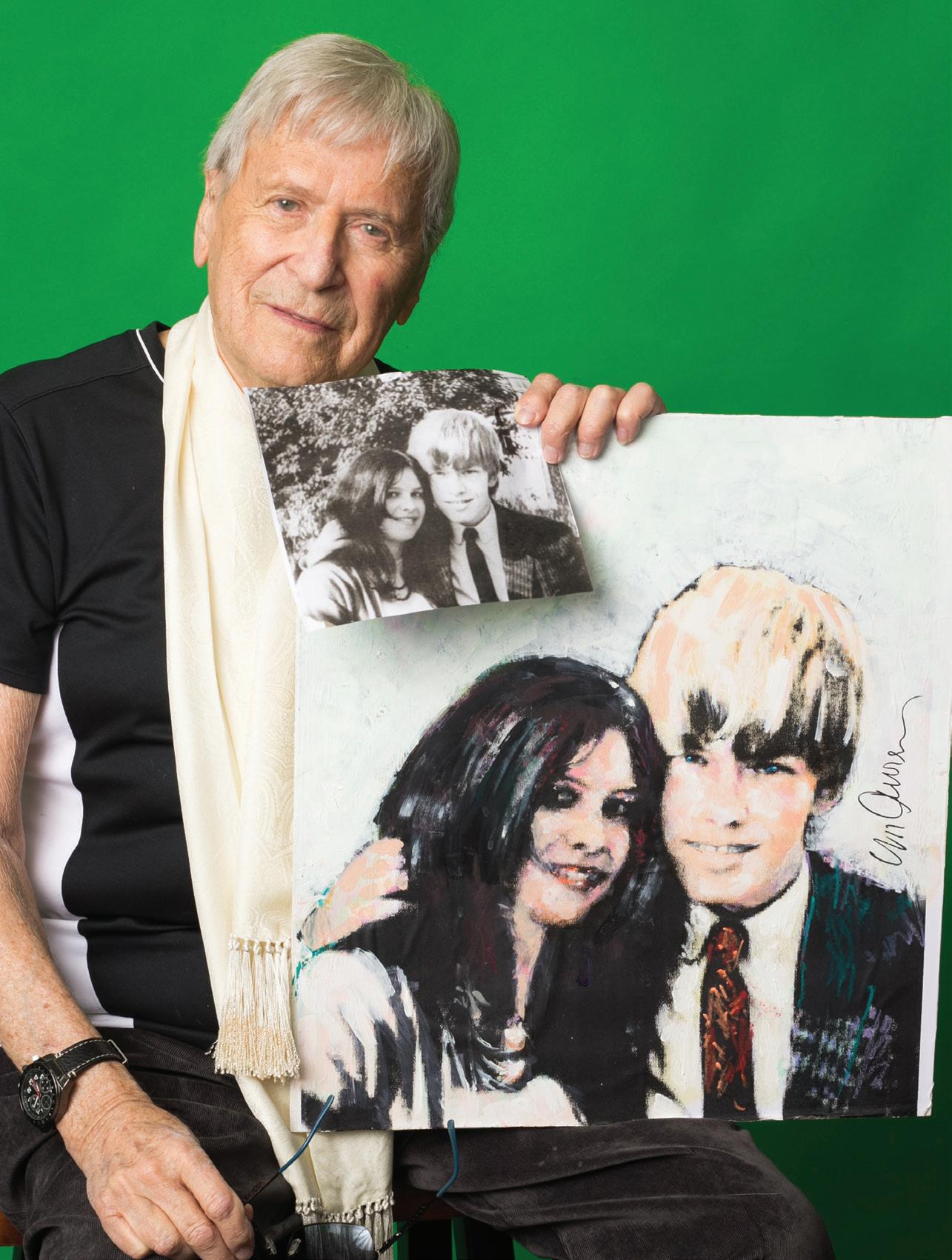
in what Sid could only describe as a Turkish wedding gown, the Sunshine Superman took Sid up on his offer to take a short walk back to his studio, located around the corner. “We hung out, smoked a couple of joints, talked about all kinds of nice stuff and he invited me to his sold-out Carnegie Hall show and that’s how our friendship started.” Donovan, belatedly elected in 2013 to the Rock and Roll Hall of Fame, readily states, “Sidney did all my album jackets and design in the ’60s He’s the best there is. His artworks are to be treasured and we are friends to this day.”
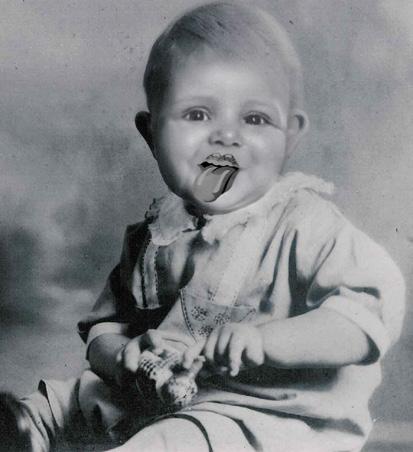

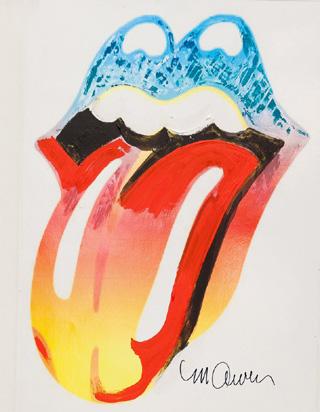
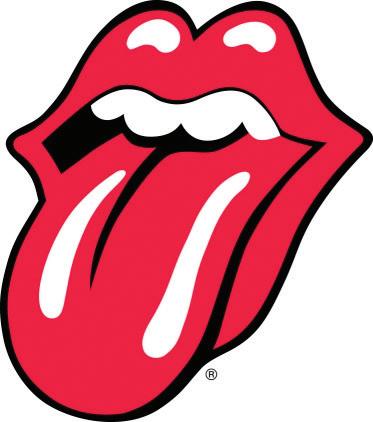
(l) Sid’s original concept; Brian Jones bought Sid’s painting (c) for $1500. (r) John Pasche’s version sold at auction for $92,500 to Victoria Albert Museum. Another artist, Ruby Mazur also claims he did work on the logo and was paid $10,000 for its use. According to Novagraaf/Musidor.com “The Rolling Stones are one of the longest running acts in the history of rock music, having remained wildly popular and prodigiously productive over their 50-year career. They are also well known for the lips and tongue logo, one of the world’s most instantly recognizable symbols of rock and roll. (Ed. note: with a value of $100 million USD). The global music rights of the Rolling Stones are being handled by Musidor BV in Amsterdam, The Netherlands in Partnership with Novagraaf and hold Intellectual Property rights of the trademark The Rolling Stones, including the iconic logo.
In those halcyon times, “Don would phone me from England,” recalled the artist in recent interview from his Atlanta studio “and say, ‘What are you doing this weekend?’ and I would hop on a plane and we’d have a visit. He had a beautiful cottage in Hartforsdhire with a very colorful large bird painted on the roof. In those days, we’d simply hang out, which one could do back then.” Visitors might include George Harrison or one of the other Beatles as Donovan had just returned from a trip to India to visit the Maharishi Mahesh Yogi with the band to study with the founder of Transcendental Meditation, etc. It was there that Donovan taught John and Paul his unique guitar style of which Lennon’s Julia is the most famous example.
During one of many parties Sid attended in London, he met Andrew Loog Oldham, manager of the Rolling Stones, who went on to dedicate a chapter to Sid in his book 2Stoned. Sid recalls one gala with Princess Margaret and Sean Connery in
Fine Art Magazine • Spring 2022 • 14 Fine Art Magazine • 2014 • 27
Sid Maurer with portrait of Brian Jones and Linda from a photo he took of them in 1967. Below, left, is Sid’s graphic rendition on a baby picture (inset above is Sid’s from 1927) showing details of what would become the famous tongue logo. Below center is the painting by Sid bought by Jones in 1968 which eventually morphed into the logo ultimately executed by a British design student John Pasche after a meeting with Mick Jagger.
attendance where Oldham and Sid bonded over a warning to not touch the punch. “‘It’s loaded with LSD,’ he told me. That’s how it was back then. You had to be careful. Our ’60s conversations were mostly, ‘Take a hit. Far out. Have another hit. Too much. What’s your sign?’”
AThrough Oldham, Sid met the doomed Brian Jones who commissioned him to paint a portrait of himself with his girlfriend Linda Lawrence, mother of his son Julian. Sid recalls, “Brian loved collecting. He had tidbits here and there, and many photographs. He loved my baby picture from 1927! Unfortunately, the photo was old and not in great shape so I found an alternate (not of me) and embellished it with a little graphic concept with a tongue and lips penciled in, basically to reflect the Stones as they were: the bad boys of the era sticking their tongues out at authority, as opposed to the Beatles, who were considered more safe. He liked that image a lot and asked me to make a color drawing, which, unknown to me at the time, morphed somehow into the famous Rolling Stones tongue logo, which originated from my baby picture, of all things. I first offered the drawing to their record label, Decca, who were willing to give me a few hundred dollars for it but Brian liked it enough to pay me 500 British Sterling pounds, which was about $1500 back then. I thought nothing of it until years later. In 2013 I was commissioned to make shirts and other items in France featuring my original tongue painting. Shortly after they were placed on display in a Paris department store, they were seized by Musidor and taken off the shelves for ‘trademark infringement.’ Without Brian around to tell the real story, the manufacturer had no choice but to comply.”

The next thing Sid created for Brian was a portrait of the Stone and Linda. The photo Sid is holding (preceding page) became the basis for the initial small painting. “This shows how beautiful a guy he was,” said the artist. “I painted that picture somewhere along the line and tucked it away. After Brian died, Linda married my best friend, Donovan, and they became a family.”
In 2013, by Linda’s request to honor the 50th anniversary of the Rolling Stones, Sid was commissioned to re-create the portrait on canvas from his initial painting done all those years ago. The final painting is exactly the same but on canvas. The new version now resides in Ireland with Linda.
“I traveled all over with Donovan, and even accompanied he and Linda on their honeymoon. After one of his concerts at the Hollywood Bowl, Tommy Smothers threw a party for him. Hendrix, Janis, Morrison, Mama Cass, and a new kid on the block who didn’t even have a record out — Elton John — were all there. Many of the people I met became casualties, but Don did not. He was always very careful where he hung out and didn’t do drugs. After he made some money, he asked me to invest it for him so I put it in a bank in the Bahamas that I found out was ready to go under a year later. Somehow, I managed to salvage the dough and we bought a boat and took it to Greece with a crew of 12 and three hippies — me, Don and a friend. We landed at the Island of Hydras, to visit Leonard Cohen, who had a house up on a hill, accessible only by donkey.”
long way from The Bronx, where Sid was born and raised when “the streets were black from horseshit, not asphalt. I was going to attend Taft (high school) but somewhere along the line a typographer friend of my family saw some of my work and suggested that I would be more suited to attend The School of Industrial Art on Jones Street in the Village. There were two teachers there, one for art, the other for academics and it was great, kind of like being an apprentice in the Renaissance. In the morning, we’d find our teacher on the stoop recovering from the night before and the first who arrived was designated to get him coffee. One of my classmates was Anthony Benedetto, better known as Tony Bennett, singer and artist. Anthony Benedetto is the name the signs his paintings with. I wrote the class theme song and conducted our band. After graduation, I worked for Columbia Records in the art department. Their office was then in Bridgeport, Connecticut and I made the commute every day via the elevated Jerome Ave. line, bus crosstown to Grand Central and then a train ride. I was drafted, injured and sent home. After the war and I was OK, I started knocking on doors of record companies and was hired by Decca.”
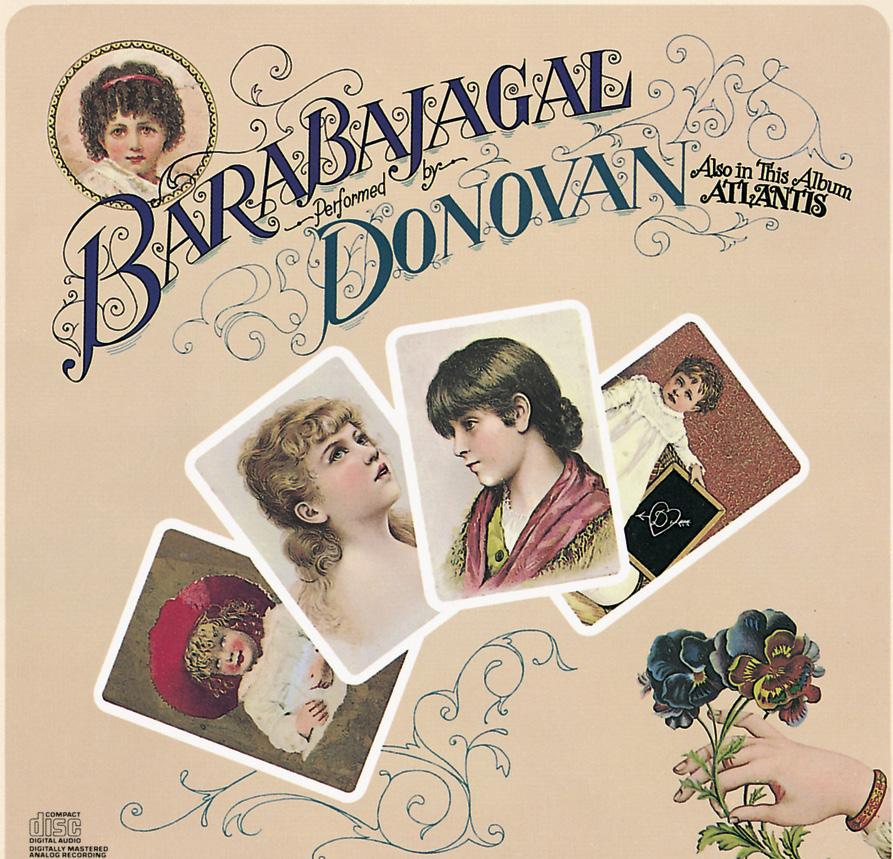
During the late ’50s and early ’60s, Sid frequented the fabled Cedar Tavern where he met artists such as Rauschenberg, Johns, and Larry Rivers in their salad days and witnessed the zaniness of that particular scene. “Every night they would knock each other to the floor, fueled by alcohol. This was just before grass became mainstream in the mid ’60s and in those days I would run into Dylan, Joni Mitchell and many others in small clubs in Greenwich Village. That’s where I became especially close to music. My whole life as an artist has been fueled by my love of music.”
Sid’s career in the art and music field flourished in New York City where among his friends were Alan Klein (the businessman who helped form Apple Records for the Beatles and managed the Rolling Stones) and Bob Guccione. “He came to my exhibit at the Beilin Gallery on Madison Avenue, liked my stuff and asked me to show him a few things. I also met him in London. He was a slick guy, loved the girls and very handsome. I painted his portrait and helped him style the girls for photo shoots. He had his own penthouse, the girls were there and that was his life. We hung out,” Sid continued, “and I began to write chapters — not a book — about El Sid The Kid.”
15 • Fine Art Magazine • Spring 2022 28 • Fine Art Magazine
Sidney Maurer album design for Donovan’s Barabajagal
Sid on the boat with Donovan, Greece, 1968

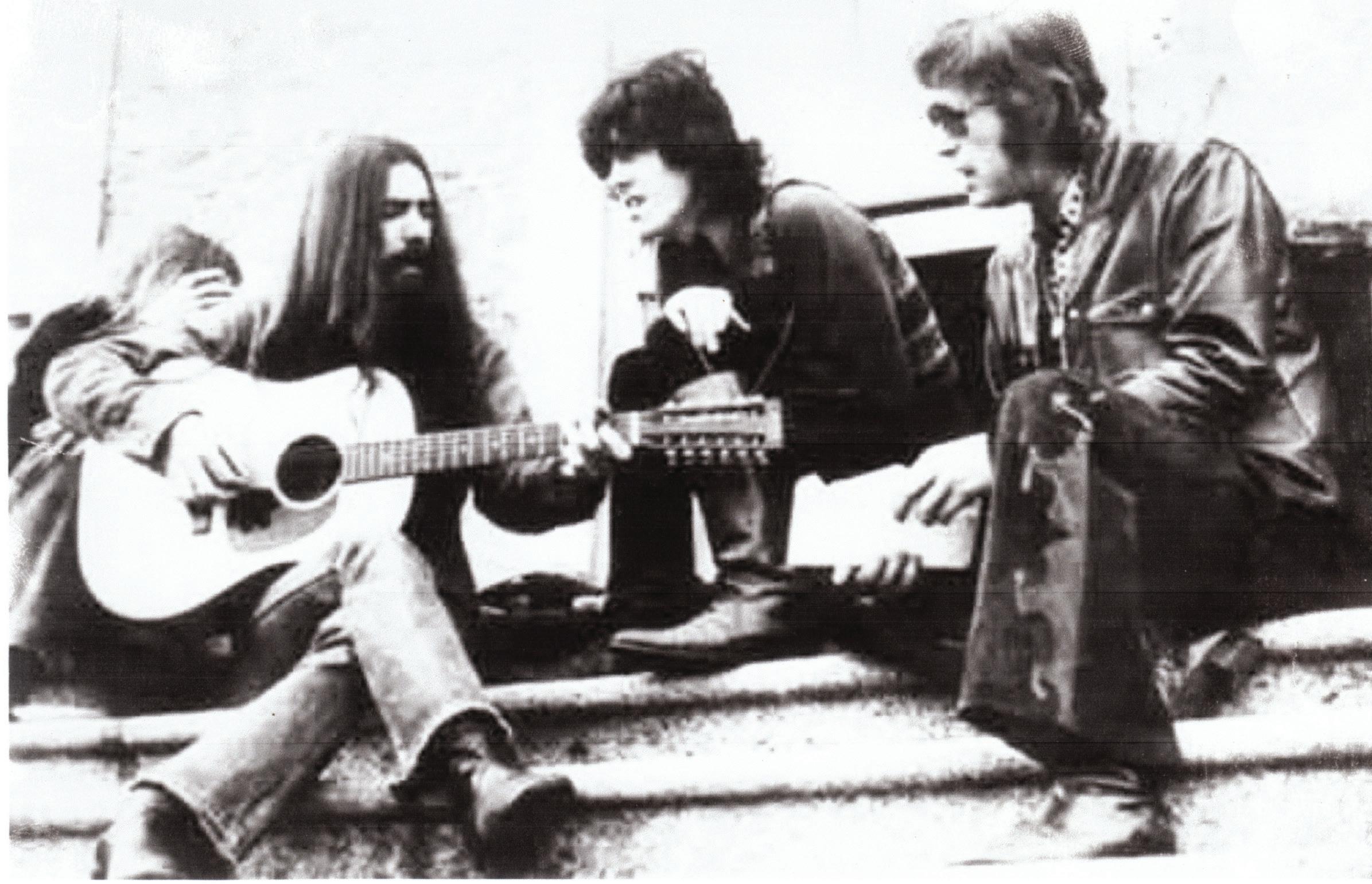
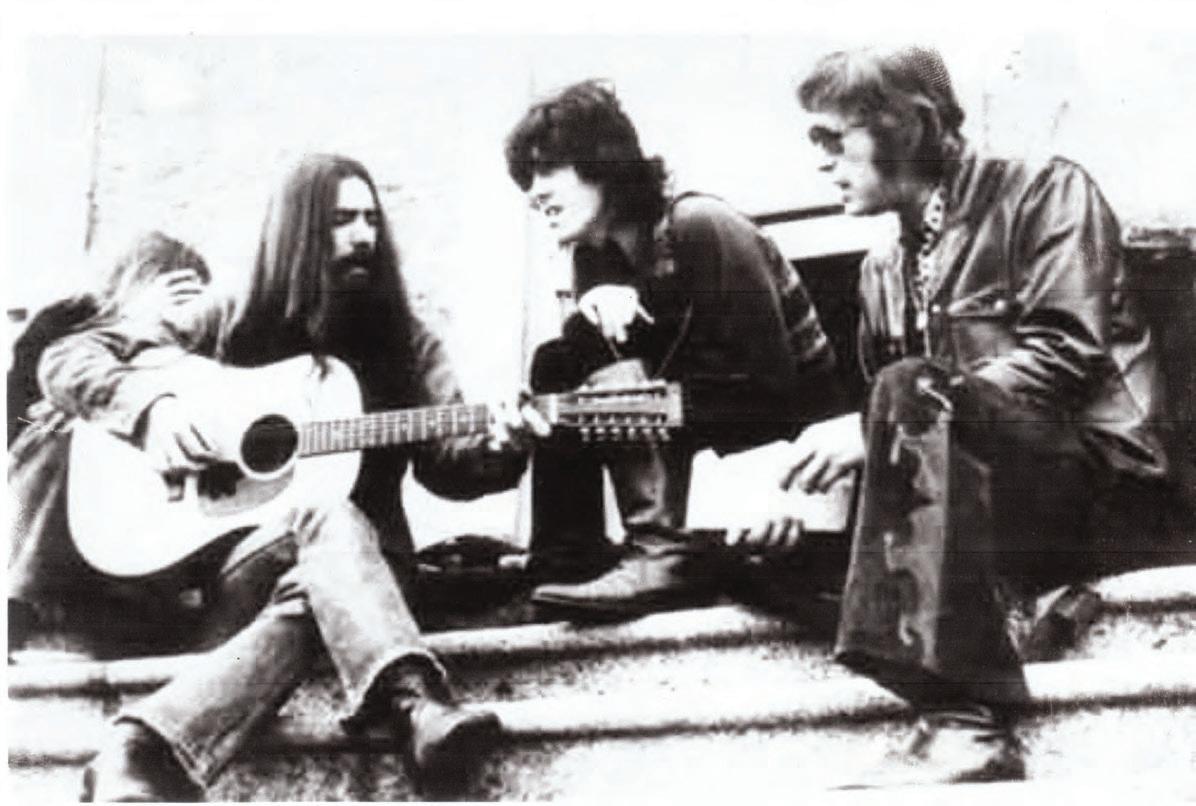
By JAMIE ELLIN FORBES
DONOVAN . I am a fan. I lived the 60s. Freedom of imagination ruled. Season of the Witch was my favorite song as well as his. The resurgence of popular style in music, clothing and artas-graphic from the era is not nostalgic for me, rather a comfortable place to be. As if I were visiting where the Season of the Witch lives. A good fit. Donovan was and is the seminal leader of innovation, a clear and channeled voice for this mid to late 20th century generational art renaissance movement beyond Pop. It is easy to understand why the Rock and Roll Hall of Fame will be inducting him into the ranks of cultural rock trailblazers this spring, as a poet/artist/musician who inspired the icons of his era. Donovan the troubadour bard formed the vision and the artistic framework implemented in the 60’s as style, drawn upon from his art school years. “We singer songwriters from Britain who are very prolific…you can see colors and landscapes in songs full of images when we put down paint brushes and picked up the guitar… Lucy in the Sky with Diamonds - One of my first songs was called Colors. In Wear Your Love Like Heaven - Sid saw that right away here comes a singer/songwriter who wants true art on his covers.
people know it but Lennon and McCartney are Irish names from Liverpool and I became aware I was from that tradition of the troubadour sound. I dressed up the songs in different costumes at times.
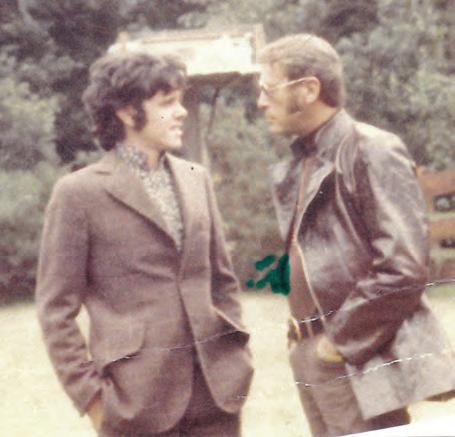
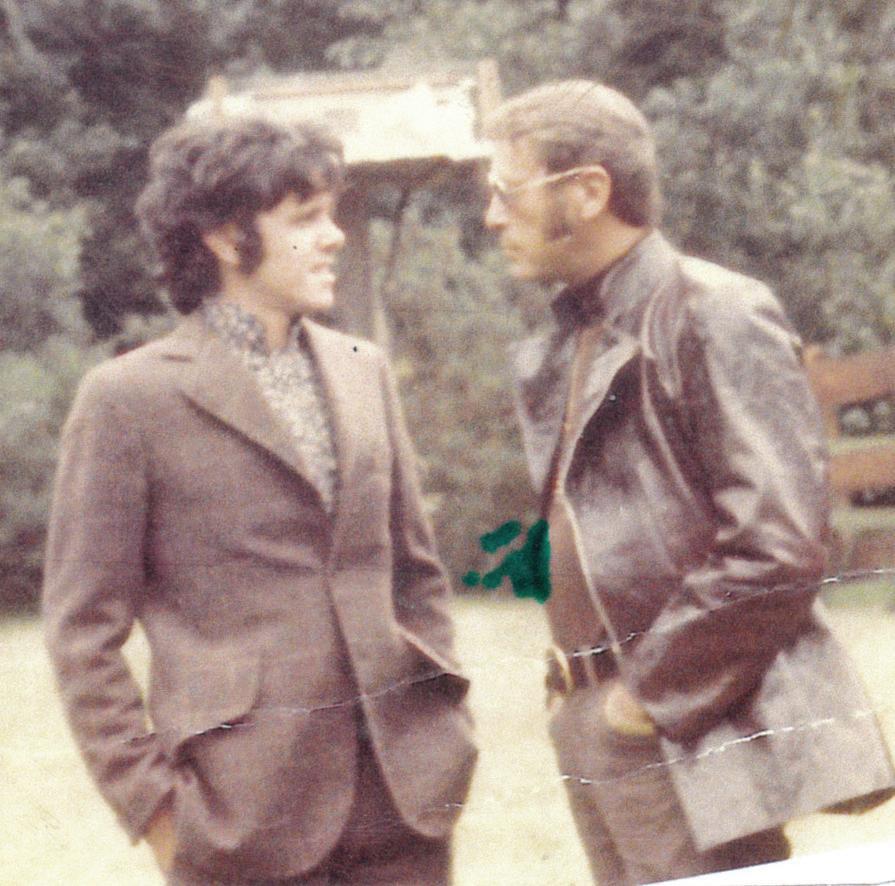
“We come from a tradition,” continues Donovan, “not many
Like many of his era from England, including Ronnie Wood (who is also being inducted as a member of The Small Faces), Donovan cites his art background as the impetus for the visual quality of story-telling in his poetry and music. The team of Donovan and Sidney Maurer used graphic art, classical art and even Kirilian Photography to expand the possibilities of the 11” x 11” album cover. Visuals as stories that would change 60’s art forever, words used as pictures; metaphors long alive with meaning are infused with an electric jolt when brought to new life by Donovan.
Fine Art Magazine spoke with Donovan and Sid from Maurer’s home in Atlanta. Friends since meeting in Clive Davis’ office at CBS in 1966, they completed each others sentences, lending insight as to how deep and easy the artistic rapport is between them. The cascading ribbon of ideas flashed as they spoke. For an instant as I listened I saw the evolution of their art as process; how it manifested in the album packaging as a visual concept unfolding allowing the route—the continuance of the
Fine Art Magazine • Spring 2022 • 16 33 • Fine Art Magazine • Spring 2012
George Harrison on the twelve string with Donovan and the artist Sid Maurer at Donovan’s castle in Ireland; wonder what tune they’re singing?
Donovan and Sid Maurer, 1968
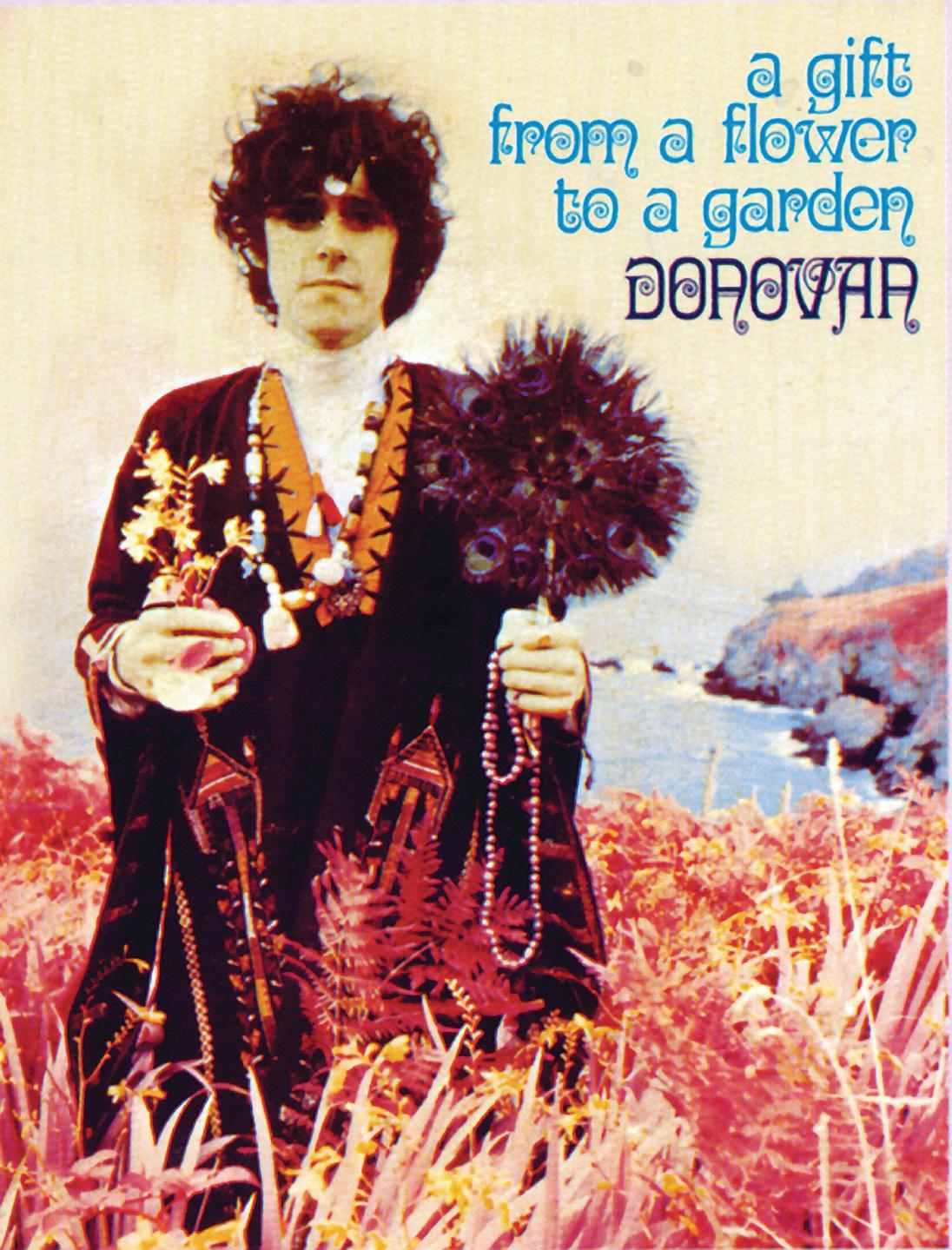
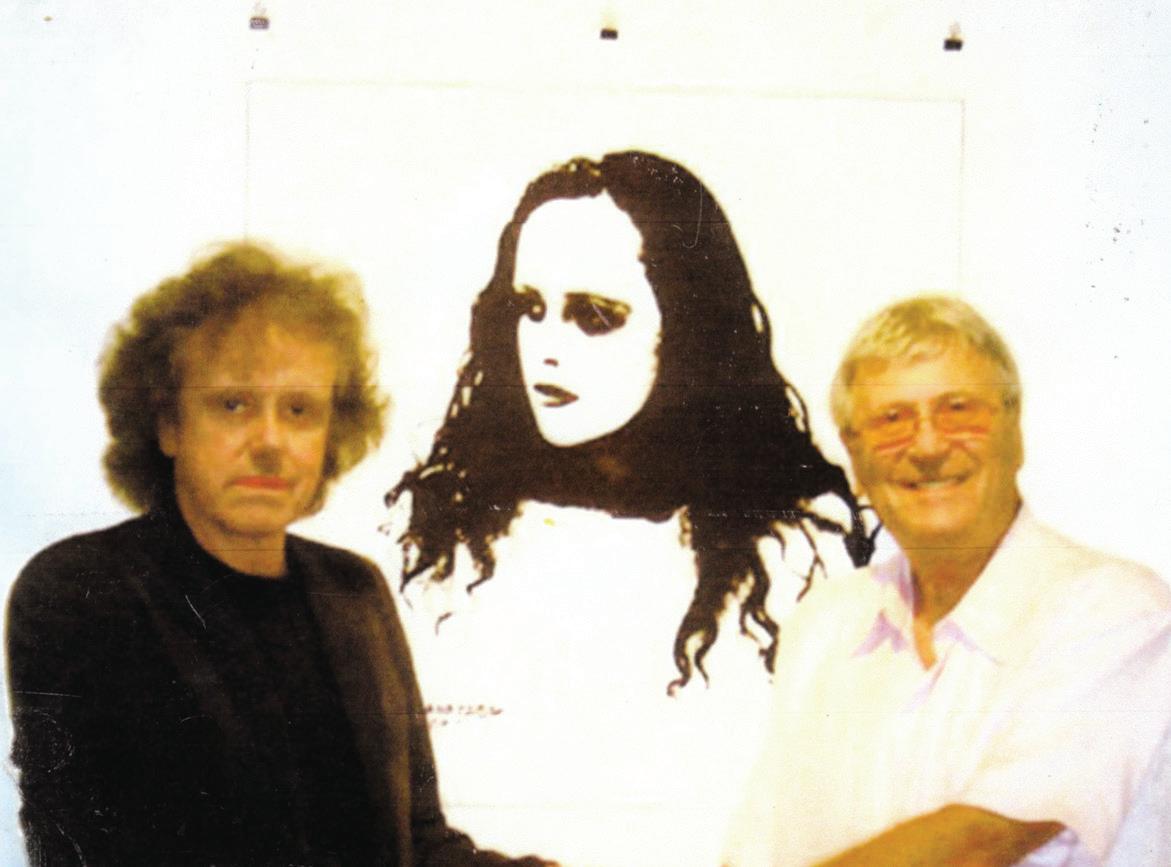

story telling—to be seen. Each described how they collaborated on the albums that showcased both of their formidable gifts: Sunshine Superman, Mellow Yellow, Hurdy Gurdy Man and Barabajagal provided a vehicle for the multi-dimensional impressions that Donovan envisioned and with the help and encouragement of Maurer was able to convey.
“I was under contract to CBS/Epic to create all their album covers when they signed a young man named Donovan to the label,” said Sidney. “They invited me to come up and say hello. They called him Mr. Donovan and it was just the beginning of long hair. He was wearing a white Hungarian wedding gown down to the floor. I thought I was talking to Jesus…no shoes, just barefoot in a robe in Black Rock and all the girls in the offices were gaga. It was quite a thing. He and I struck up a friendship when I said, ‘Let’s get out of here and go over to my studio.’ I rolled a couple so we could relax and we spent the next few days working on the first of his album covers for Epic - Sunshine Superman.”
Here Donovan picks up the story. “I am an artist myself and I wanted my covers to be visual just as I was making my appearance on stage visual to illustrate my lyrics. I was a bit ahead of the scene. Nobody really cared or had done this before. At most there was a photo of the band or the artist and ‘Let’s get that album out as soon as possible.’ I wanted Sunshine Superman to be Art Nouveau, Pre-Raphaelite because my songs were so romantic. Sid said to Clive ‘This boy’s right, you’ve got to do it.’ Clive went along and Sid became my champion.
“The first album was really why I was nominated. That’s the one that initiated the psychedelic revolution.” Sid continues: “A year later, I’m sitting in the office and get a call from England. ‘What are you doing? Why don’t you come over this weekend? We’ll do a few things.’ Donovan had a cottage in a small suburb of London. It was painted all lavender in the woods and on the roof was a large white dove. This is where Don lived. He and I spent the entire weekend working on a project that became kind of history: the first boxed set that was ever done in rock and roll: A Gift From A Flower To A Garden.”
Back in New York, Davis was reluctant. Donovan recalls the conversation. “A box? This is impossible we can’t do this. This is gonna cost a lot of money. It’s fine art paper, individual sheets, in a box! No pop singer gets a box! They are for classical and jazz.’ I said, I want one. I actually had to pay out of my royalties or it would never have been done. Clive said ‘we’ll release the two albums on their own
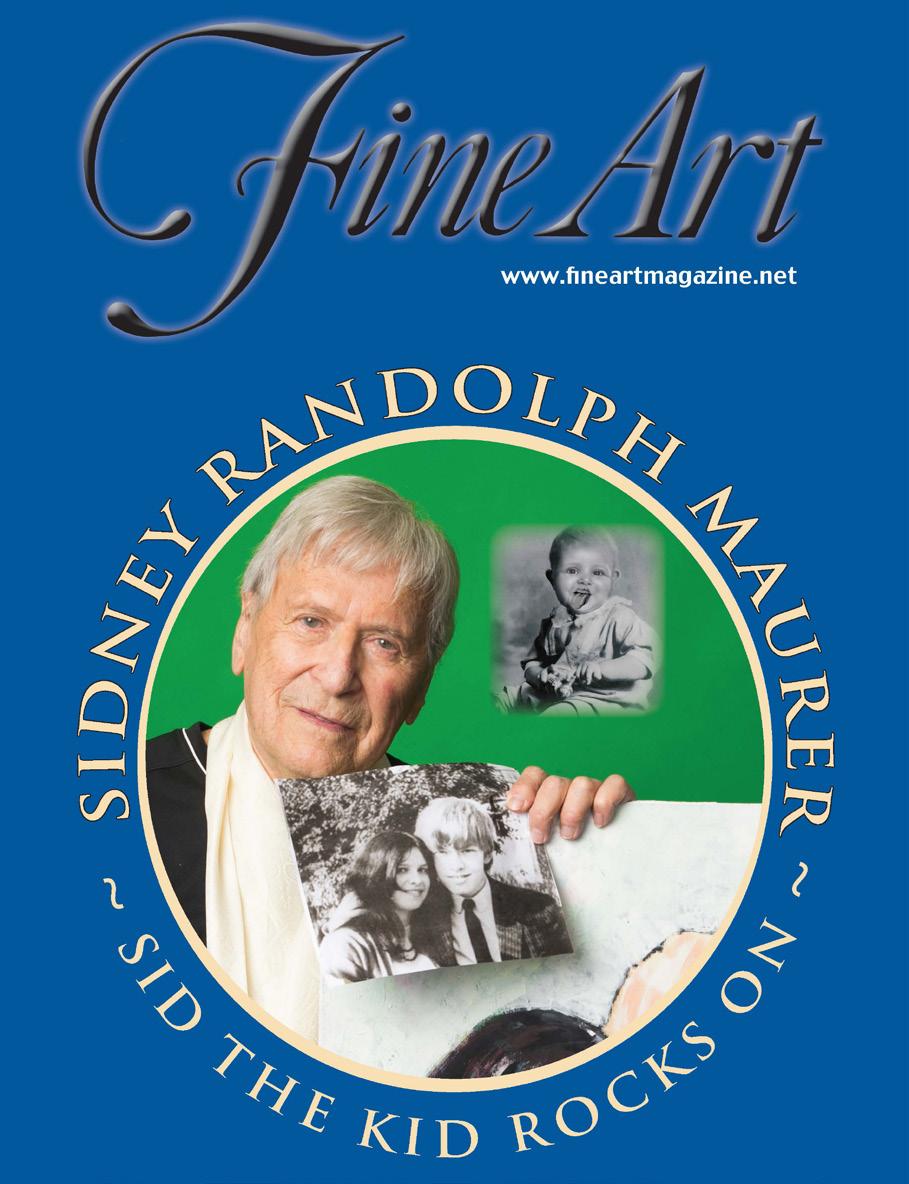
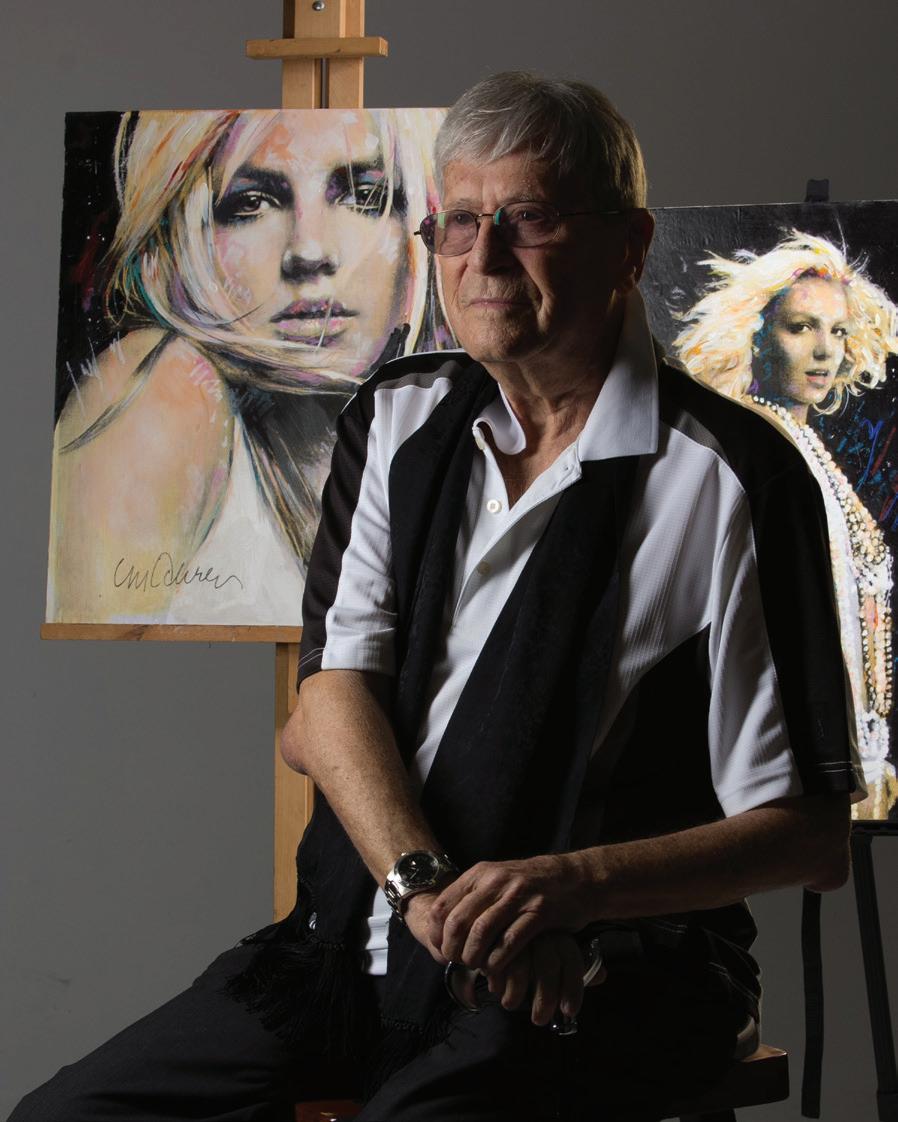
17 • Fine Art Magazine • Spring 2022 34 • Fine Art Magazine • Spring 2012 Copyright © 2012 Donovan Disc Archive & Barabajagal LLC. www.barabajagal.com www.donovan.ie
On Donovan’s yacht, Greece, 1971
One of Donovan’s Sapphongraphs, with Sid Maurer
Special edition of Fine Art Magazine features Sid Maurer
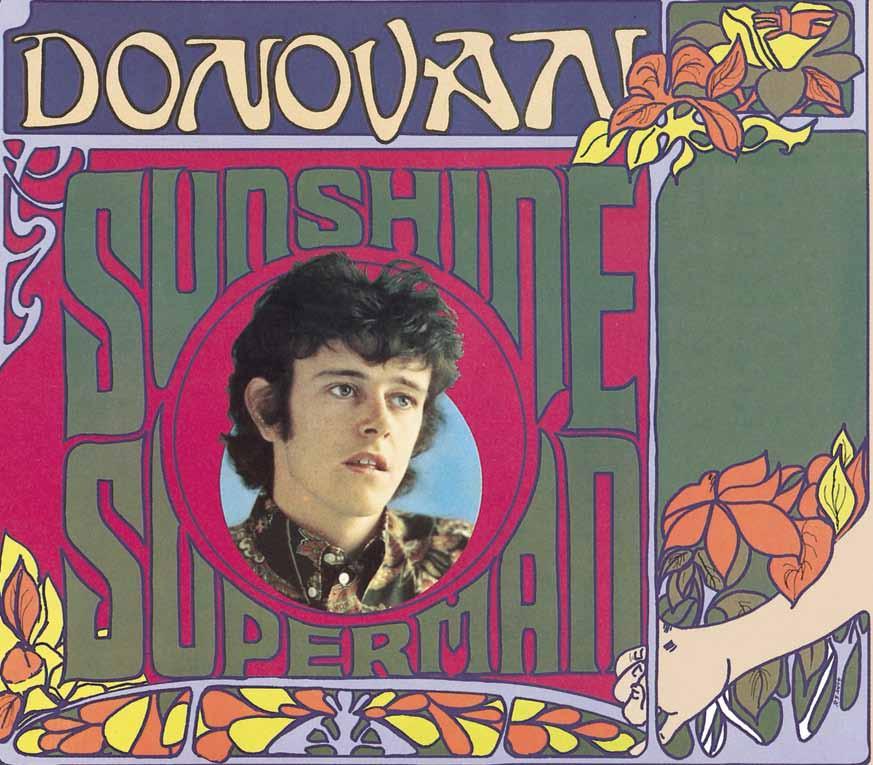
before Christmas and after Christmas we’ll release it as the box.’” Sid recalled, “Either of them didn’t reach #100 on the charts and the box set went gold almost instantly I said, Clive - you should have got that box set out before Christmas. I knew what I was doing with marketing from art school.”
The upshoot is that Donovan owns all the original art and is now making it available worldwide through Museum Masters International which also has a history in music. “In 1996,” said Museum Masters President Marilyn Goldberg, “ We did Elvis/ Warhol Hall of Fame anniversary products and editions with the Elvis Estate and Andy Warhol Foundation. Now we will be licensing the Donovan/Sid Maurer collection honoring Donovan’s Hall of Fame induction.”
These artful album covers ushered in an era of big ideas and changing cultural attitudes expanding the nuance of the message, fueling the cultural revolution. Donovan credits Maurer for opening the doorway for him as a musician to use the art studio as a colleague. Sidney’s expertise, vast professional background and generous explanation of how the machinations of printing and art prep worked made the magic happen, changing art and style through innovation. Maurer noted that the cover art played a major role in focusing attention on sales as well as conveying a musical vision

Fine Art Magazine • Spring 2022 • 18

“BEATNIKS OUT TO MAKE IT RICH”
The first British folk troubadour who truly captured the imaginations of early Beatles-era fans on both sides of the Atlantic, Donovan Leitch made the transition from a scruffy blue-jeaned busker into a brocaded hippie traveler on Trans Love Airways. As a folkie on the road with Gypsy Dave, Donovan became a Dylan-esque visual presence on the BBC’s Ready Steady Go! starting in 1964, and released several classics: “Catch The Wind,” “Colours,”
Buffy Ste.-Marie’s “Universal Soldier,” “To Try For The Sun” and more. That changed in 1966, as he came under the production arm of UK hitmaker Mickie Most, and was signed by Clive Davis to Epic Records in the states. Donovan ignited the psychedelic revolution virtually single-handedly when the iconic single “Sunshine Superman” was released that summer of ’66 (and the LP of the same name, with “Season Of The Witch”). His heady fusion of folk, blues and jazz expanded to include Indian music and the TM (transcendental meditation) movement. Donovan was at the center of the Beatles’ fabled pilgrimage to the Maharishi’s ashram in early ’68 (where, it is said, he taught guitar finger-picking techniques to John Lennon and Paul McCartney). Donovan’s final Top 40 hit with Most was “Goo Goo Barabajagal (Love Is Hot)” in the summer ’69, backed by the Jeff Beck Group. In the ’70s and ’80s, Donovan continued to record and tour sporadically, including songs for Franco Zeffirelli’s Brother Sun, Sister Moon (finally issued in 2004). During the 1990s, Rick Rubin (after working with Johnny Cash) produced Donovan’s Sutras. The 2008 documentary film, Sunshine Superman: The Journey Of Donovan is an essential overview of his career. –ROCK AND ROLL HALL OF FAME
“MUST BE THE SEASON OF THE WITCH”
The day of the scheduled Donovan interview, in true Steve Jobs “iTunes is prophetic” mode, what comes on shuffle but the Al Kooper Birthday concert at BB King’s with Jimmy Vivino, John Simon and even Harvey Brooks from SuperSession for a live rendition of Season of the Witch. I cued up all the versions of that cut in my library and let them run and run. Here’s Harvey doing his bass solo live, the one he did on Mike Bloomfield’s sole career gold record (SuperSession), on which he only played on one side before cutting out. Steve Stills was called in by producer Kooper in a rush to occupy the expensive studio time and they came up with the wah-wah/Hammond B3-driven eleven minute classic version of Season of the Witch with some powerful Eddie Hoh drumming along with the aforementioned Brooks. Of this, the critics wrote “Stills showed the wah-wah pedal was more than a war toy.”
Donovan loved the Julie Driscoll/Brian Auger version best, but for posterity we have the “Live From the Filmore East Lost Concert” with Mike doing a classic guitar part on his only recorded version of the song as Kooper references Terry Reid. It’s a two chord vamp but people have made careers of it. That, in fact, is what Donovan said the Allman Brothers did with their extended versions of Mountain Jam which often, when coupled with Whippin’ Post, lasted the better part of an hour and featured some of
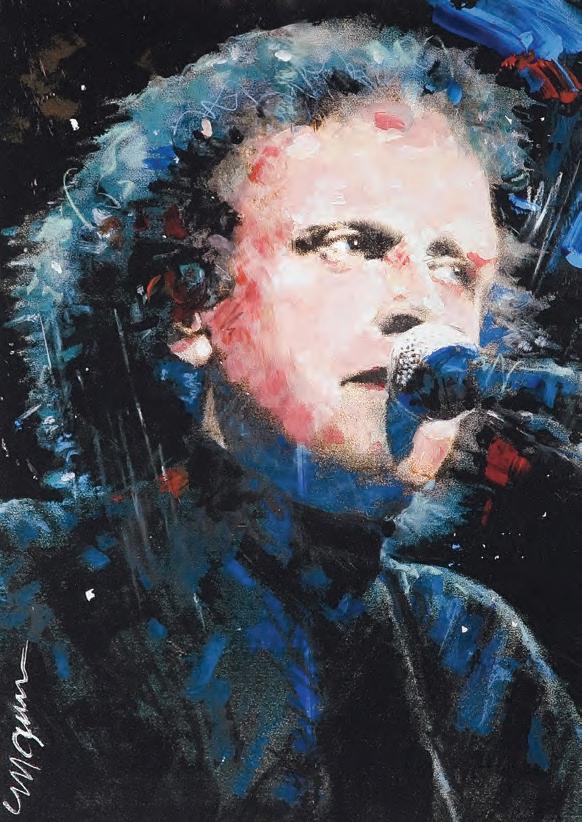
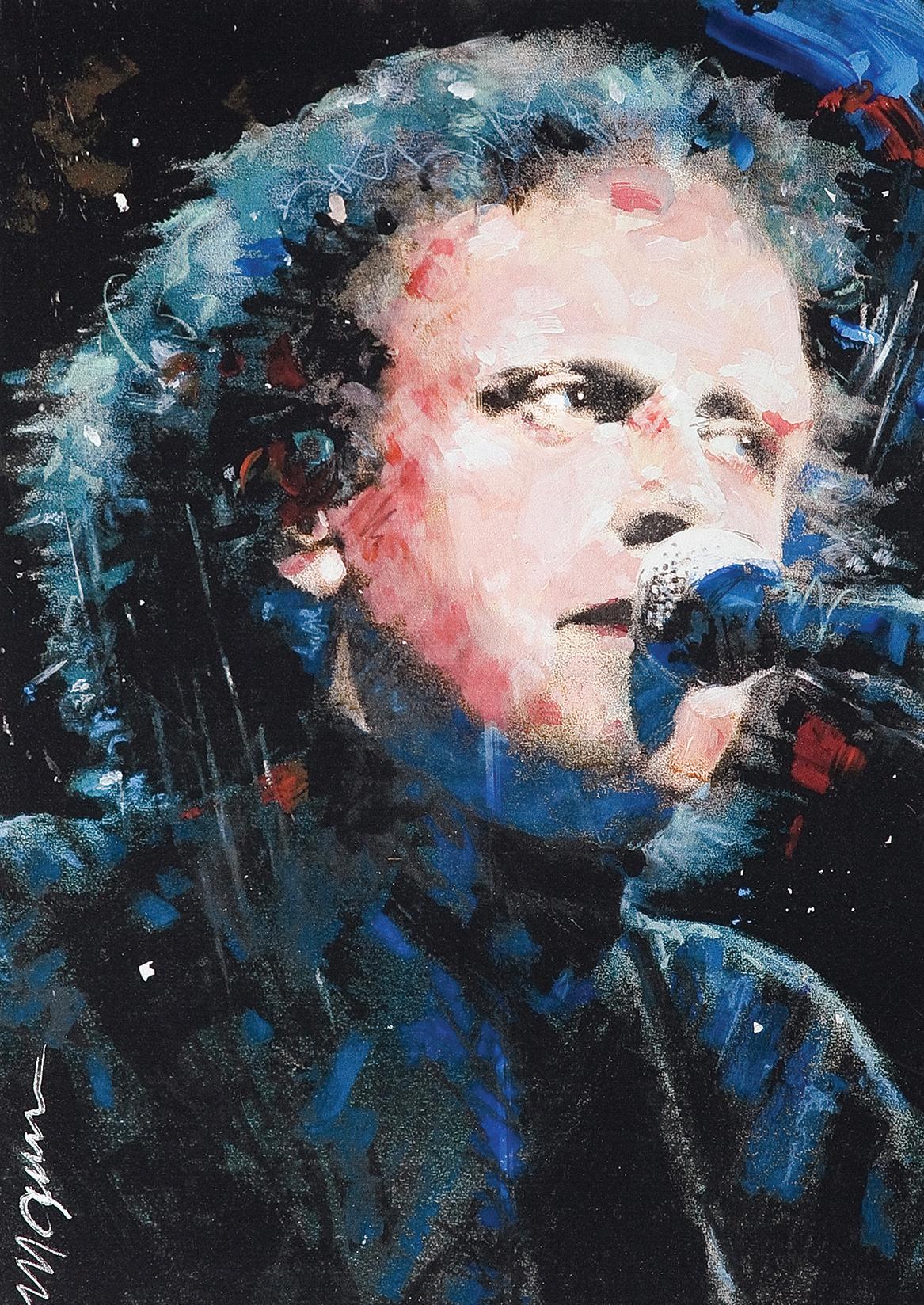

Duane’s most inspired guitar work. That Donovan’s songs would bring out the best in these high level musicians and the many others who have covered and accompanied him speaks volumes.
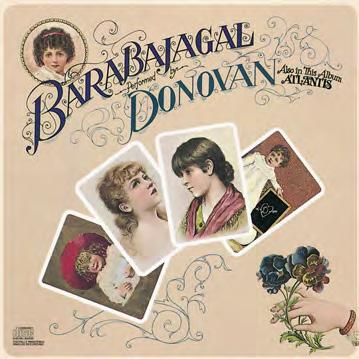
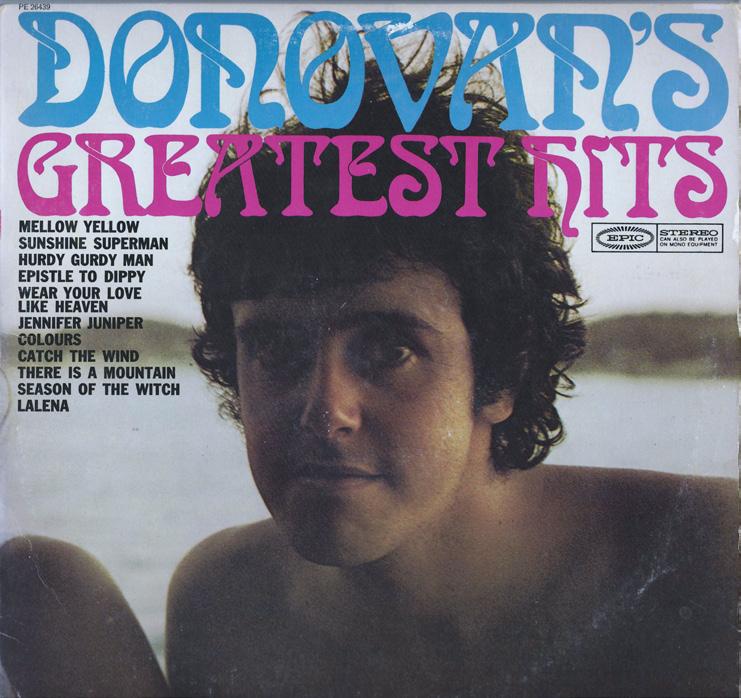
“We had some good old times, took some trips, not all psychedelic The whole process of creating art for the album covers I learned from Sid. He had a studio that was fully working and he was so proficient. I was able to talk his language after the first album. We didn’t just do it once, we went through two, three, four, five different things that he sent me by post.” A former art student, Donovan was fascinated with Sid Maurer’s tools of the trade in pre-computer, pre-fax, pre-Pantone and even pre-Fed Ex days. Things were slow and you needed very specific skills to get a complex color album jacket from color separations to rubylith masking ready for press. “Sid knew how to make sure that the yellow is really the right yellow. The wonder of albums was that you could actually see and touch them and put them on the wall as art. It’s great to celebrate the coming around of records again.”
“You carry life as a force in your music,” said Sid to his good friend. “You didn’t just write songs and sing them, you created a body of work and the excitement remains.”
19 • Fine Art Magazine • Spring 2022
Donovan portrait by Sidney Maurer, courtesy © 2012 Sid Maurer / Museum Masters International www.MuseumMasters.com
—VICTOR FORBES SunStorm • Spring 2012 • 33

By proclamation of the governor of Texas, Ann Richards, September 3, 1993, was declared Freddie King Day, an honor reserved for Texas legends, such as Bob Wills and Buddy Holly. He was inducted into the Rock and Roll Hall of Fame in 2012, and placed 15th in Rolling Stone magazine’s list of the 100 greatest guitarists of all time.
By their own account, the late, great Freddie King influenced Eric Clapton, Duane Allman, Jeff Beck, Keith Richards and Stevie Ray Vaughan, among others. King was among many pioneering African-American blues musicians to embrace the British blues scene and tour its club circuit in the late 1960s. Robert Christgau credited King’s embrace of Britain with creating his renown as a pioneer of electric blues guitar. In Gary Graff’s Music Hound Rock (1996), the entry on King states: “Although his reputation rests with his guitar, King also sang with an underrated, powerful style. His lasting influence has insured Freddie King’s recognition as
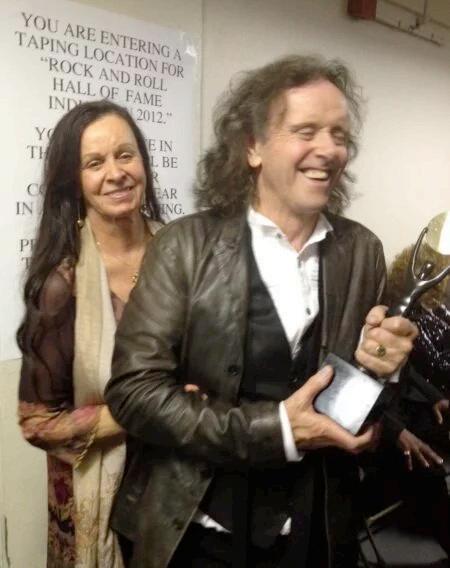
“He is the psychedelic guru of folk poetry”
one of the great postwar blues masters.”
A ’super group’ was formed to perform in Freddie King’s honor, which included Derek Trucks, Billy Gibbons, Dusty Hill, and Joe Bonamassa. King was being inducted into the Hall of Fame just before Donovan, and the band for King shared the backstage dressing room with Donovan, his wife Linda, and myself. Derek and Billy truly enjoyed meeting Donovan and a good time was had by all.
This is John Mellancamp’s Donovan induction speech:
“I got my first Donovan record in 1965. I was in the 7th grade and back then, we waited for every record and I waited for every album to come out so that I could learn to play those songs. I wasn’t just listening to Donovan, I was living Donovan. I was stealing all the s--- from Donovan. Other artists, and you know who you guys are, call that being inspired. But I was inspired by his beautiful melodies, his lyrical content, his arrangements
Fine Art Magazine • Spring 2022 • 20
Linda Leitch, ZZ TOPS’ Billy Gibbons, Donovan, backstage at Donovan’s Rock and Roll Hall of Fame induction, 2012. Photos by Chris Murrau

was
and the overall presentation of his material.
I am going to now read from the liner notes of this album: Less than a year ago, the British Recording Industry reached a sort of floating period between the wild rampage of Liverpool and the sound shifting gears into a new trend. It was one of those indecisive moments when the followers and the opportunists -- and you know who you are -- tumbled all over each other as record buyers and began to look around for something new. They looked all about and soon they were attracted to a young lad with a sensitive face, jeans, a denim jacket, a miner’s cap and a touch of northern dialect from Scotland in his speech, tempered by roamings throughout the British Isles. This lad was Donovan, an 18-year-old singer from Glasgow, who brought a new kind of music that was almost old as the hills. Donovan was the simple, direct, sincere music of a folk artist. He blew his harmonica and preached his poetic words to all that would listen.

Man’, ‘Mellow Yellow’, ‘Atlantis’, ‘Wear Your Love Like Heaven’, ‘Riki Tiki Tavi’, ‘Lalena’, ‘To Susan On The West Coast Waiting’. And those are just the songs that were on the radio. Think of all the undiscovered songs that are on these albums that nobody has ever heard or paid attention to. Beautiful songwriting like nobody else.
So really, I guess what it all boils down to in the long run is that you can do whatever you want and look however you want, but if you don’t have the songs, it don’t matter.
Let me see if I can think of a couple of songs that Donovan might have written. I think I could come up with a couple: ‘Season of the Witch’, ‘Catch The Wind’, ‘Sunshine Superman’, ‘Hurdy Gurdy
I think it’s only fair that we mention that this was all done by one kid from Scotland, right? One guy wrote all these songs. He was also part of one of the greatest collaborations maybe in music history and that was the marriage of Donovan to Mickie Most. Together, those guys created a folk-rock sound that invaded the world’s radio. In 1965 and 1966, every kid that was sitting in their bedroom heard that sound and they style that this guy brought to the music industry and to the youth along with the Rolling Stones, leading the way for the youth culture (...crowd noise...) the world had not seen anything like it before and haven’t seen anything like it since.
In 2005, I asked Donovan to do 40 shows with me and he obliged and he turned out to be the kind of fella that I thought he would be. But what it made me realize, seeing that guy play every night, is that the further we get away from the original, the worse it gets
21 • Fine Art Magazine • Spring 2022
It
ten years ago next month that I first met Derek Trucks, who may well be the finest guitar player today, and saw him perform. Donovan was being inducted into the Rock & Roll Hall of Fame on April 14th, 2012. It was my great pleasure to accompany him to Cleveland for that great honor, as his aide de camp. What a weekend it was! Donovan went on to be inducted after Freddie King, and was introduced to the audience by John Mellencamp, a great fan and friend of Donovan’s. Donovan gave one of the finest acceptance speeches ever given at the Rock Hall ceremony, followed by him performing. The audience gave him a standing ovation. Sunshine Superman indeed!— Chris Murray
JOOLZ JONES
2047
ROCK & ROLL HALL OF FAME’S
NEWEST MEMBER
★ TRUE SPIRIT OF THE STONES LIVES ON ★


f you weren’t around for the Rolling Stones salad days, when it was called by non-other than Charlie Watts “Brian Jones’ blues band,” this collection of 13 standards — covered with authority — is probably as close as you’re ever gonna get. Donovan’s harp rounds out the group, featuring the guitarist Richard Barone; Bass: Augustas Buožius and Drums: Sina Doéring with Honey B Mama contributing vocals to one track. As for Joolz - he moans, howls, coos, hollers, screams, seduces, primps, begs, - and this is all on the first cut Smokestack Lightning featuring his step grandfather on some sympathetic Sonny Terry-inspired harmonica playing.
These songs, this music, is undoubtedly in his DNA. How else to explain the raw authenticity of each and every cut. He brings it all, no imitation. Channels Muddy, The Wolf, Elmore — all of them with just enough Jagger to complete the picture. As is his Grandfather Donovan’s Calypso release, this is a time capsule, taking off from 1950s Chicago to the 21st century. I hope this music takes off for him and his generation is introduced to it same way us ’60s kids were turned on to Muddy, Albert, BB, et al by Paul Butterfield’s band and others of that era. Just one request, Joolz: Waiting for a cover “Under Assistant West Coast Promotion Man.”Please.
DUST MY BROOM - The Elmore James classic revolutionized slide guitar playing and is covered by everyone who ever picked up a six string. “Get up soon in the morning” - Jaggeresque pronunciation. “I ain’t gonna leave my baby and break up my happy home.” Drums bashing and dirty rhythm guitar. Exceptional as are all the cuts.
SMOKESTACK LIGHTNING - Donovan’s harp sets the tone for this Howlin’ Wolf classic and Joolz moans the blues and Donovan is right there with him on harmonica being Brian Jones to Joolz’s’ lead singing. Citing some Jaggerisms but a truly original voice. Derivative, respectful, yes. But I never heard a young white singer with such feel. Since we never heard Brian’s voice on record, we can only surmise that Joolz found that heretofore missing link for our listening pleasure.
ROLLIN’ STONE (CATFISH BLUES): When Joolz sings “She said come on in now Muddy, my husband just now left...” You
can tell he means it. Joolz sings this with power to spare, and why wouldn’t he. Muddy, I am sure, would approve.
MY BABE: A little lighter touch here with Donovan’s tasteful harmonica and Barone’s perfect leads. When he says “I know she loves me, she don’t do nothing but kiss and hug me,” one believes him and he then he sing-whispers “Everything she do she do so pleasing.
LITTLE RED ROOSTER: Roostah is too lazy to crow for days. Tasty guitar licks. When he tells you the barnyard is upset, you have to believe him
HOOCHIE KOOCHIE MAN: “My mother told my father just before I was born / she got a boy child coming he’s gonna be a rolling stone.” What else does one need to know? Nice harp ending.
BIG BOSS MAN: Jimmy Reed gets his just here. “Cahn’t you hear me when I call.” If Pigpen had an English accent, he could’ve sung it like this. Some ska influenced electric guitar on the riddim. Pure raunchy blues on the lead. “Aihn’t so big - just tall that’s all.” Hound Dog Taylor would be proud.
WHO DO YOU LOVE: These guys play it faster than Bo. Lyrics come in loud and clear, well enunciated. “Just 22 and I don’t mind dyin’.” Wicked stuff. Stands up to ANY version. “You shoulda heard just what I seen.”
STONES IN MY PASSWAY: An acoustic wail - “I have pains all in my hear they have taken my appetite.” That boy can coo and holler and growl like he was born to sing the blues as no one else has done before him, at least of the Caucasian race.
BABY PLEASE DON’T GO: Donovan cutting loose on this one is worth the price of admission.
COMING HOME: Invoking Elmore here with bombastic guitar duels and rough and tumble vocals
THE SKY IS CRYING: Honey B Mama doin’ her thing, “waitin’ for her baby wonderin’ where he could be.” She is somethin’ else again. How could her baby not love her no more?
NOT FADE AWAY: What would a Brian Jones tribute be without some Buddy Holly? Massive drums and a legit Holly hiccup. Can’t stop listening to this album. Love is Love and not fade away. – VICTOR FORBES
Fine Art Magazine • Spring 2022 • 22

“In My Own Dream”
The Paul B u TT erfield S T ory
“He Was Music”
By VICTOR BENNETT FORBES
A–VIRGINIA
generation after his death, and a half century since he and his eponymous blues band forever changed the mosaic of the international musical scene, the legend of Paul Butterfield stands as an archetypal pillar of American folk-lore.
With a collection of collaborators that included, over the course of his diverse (but tragically shortened) career, every giant of the first wave of American Urban Blues—Muddy Waters, Otis Spann, James Cotton and B.B. King, to name but a fraction— to the groundbreaking Paul Butterfield Blues Band and the brilliant interplay of members Mike Bloomfield, Elvin Bishop, Mark Naftalin, Sam Lay, Billy Davenport and Jerome Arnold; to later recordings that featured Muddy Waters, Bonnie Raitt, Levon Helm, Maria Muldaur, Nick Gravenites, Amos Garret, and David Sanborn; to impromptu performances and concerts across the country with Janis Joplin, Jimi Hendrix, the Allman Brothers, Johnny Winter, Eric Clapton, Rick Danko, Levon Helm and many others; to featured billing at the Newport Folk Festival (1964), Monterey Pop (1967), Woodstock (1969) and the Band’s Last Waltz (1973), Paul Butterfield’s virtuoso harmonica playing, soulful vocals, inspired song-writing and brilliant band-leadership moved the burgeoning youth culture of the mid- and late1960s to an appreciation of blues music that transcended racial, economic and political lines. Without the benefit of ever coming close to a hit record, without a gimmick-laden stage show (save Mike Bloomfield’s occasional pre-KISS fire-eating act),
BUTTERFIELD
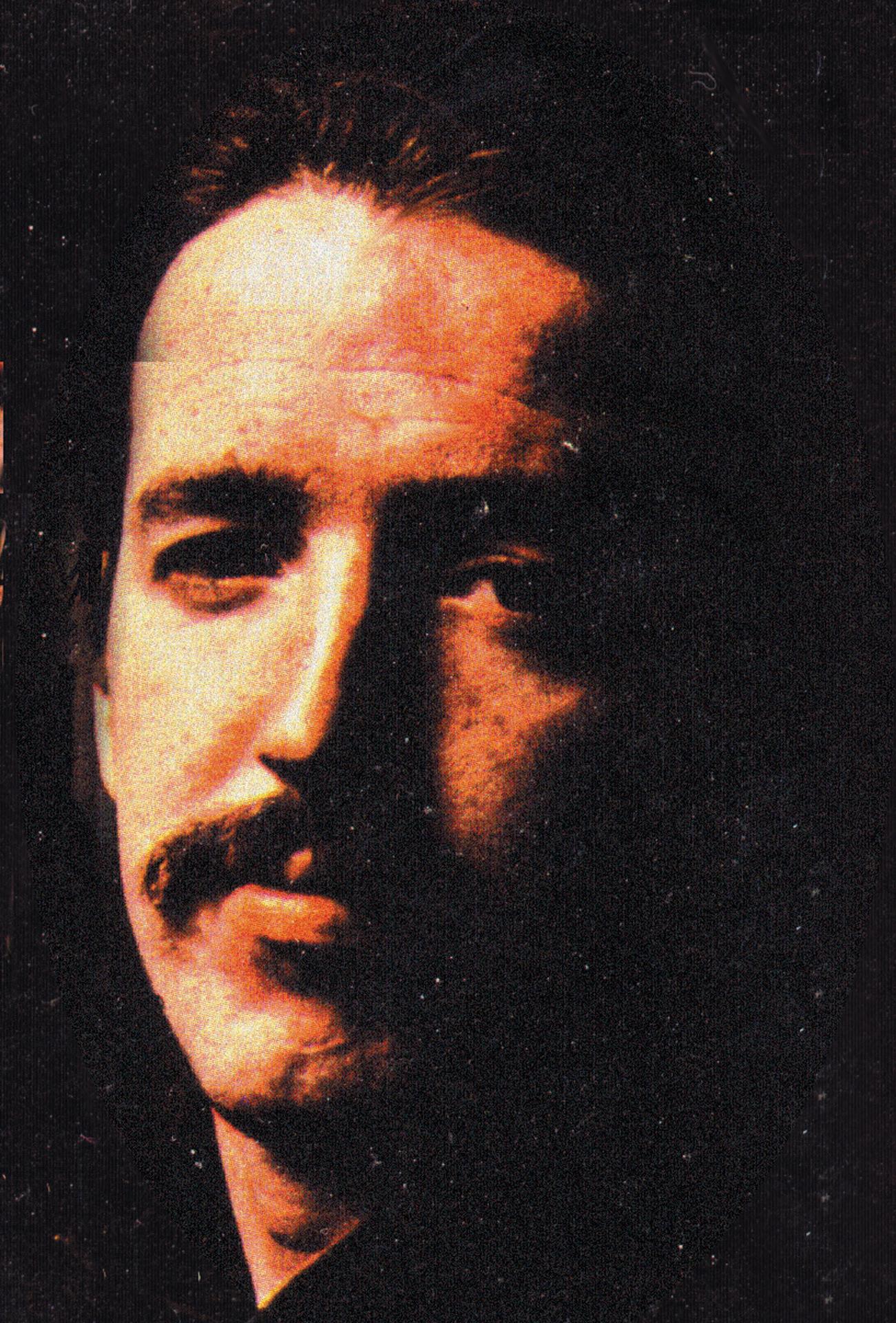
“Paul Butterfield turned sixteen the year that the Russians launched the first space ship, but for Paul Butterfield the most important thing that happened that year was when he went to hear Muddy Waters for the first time at Smitty’s corner, 35th and Indiana, one of the honky tonk’s growing out of the razor-poor soul of the Black Blues Belt on Chicago’s South Side...”
—Alfred G. Aronowitz Liner Notes, In My Own Dream, 1968
without glamour, hype or bowing to trends, Paul Butterfield brought the music he loved to millions of Americans, who, all these years later, still stop his surviving band members to reminisce about the potency, power and purity Paul Butterfield and the various incarnations of his Blues Band brought to the concert stages, night clubs and festival grounds of a young nation, war-torn, reeling from the assassination of its president yet hopeful and full of youthful vigor. Born in Chicago in 1942, Butterfield’s first exposure to music was through his father, a successful attorney who would gather the family together to sing and accompany themselves instrumentally on a regular basis. Paul would play flute and his brother clarinet at these family jam sessions. Some of Paul’s earliest memories were of these sessions and of the wealth of music played in the various neighborhoods of his hometown by the people who settled there from all parts of this nation, and the world. In addition to the black immigrants from the deltas and cottonfields of the Deep South, there were refugees from Eastern Europe, “hillbillies” from the mountainous regions of Kentucky and Tennessee, Jews and Poles, Russians and Puerto Ricans. As a child driving with his family through these wards that made up one of America’s great cities, young Paul was affected by not only the variety of the music, but by the various tonalities. As his friend and band-mate Michael Bloomfield would later say, “It all sounded like it came from the same place. Ghetto musics of the world are sort of related to each other. Musically, even the scales. Suffering don’t know no color, don’t know no nationality.”
Fine Art Magazine • Spring 2022 • 26 Fine Art Magazine • Spring 2015 • 59
PAUL BUTTERFIELD BLUES BAND ELECTED TO THE ROCK & ROLL HALL OF FAME 2015
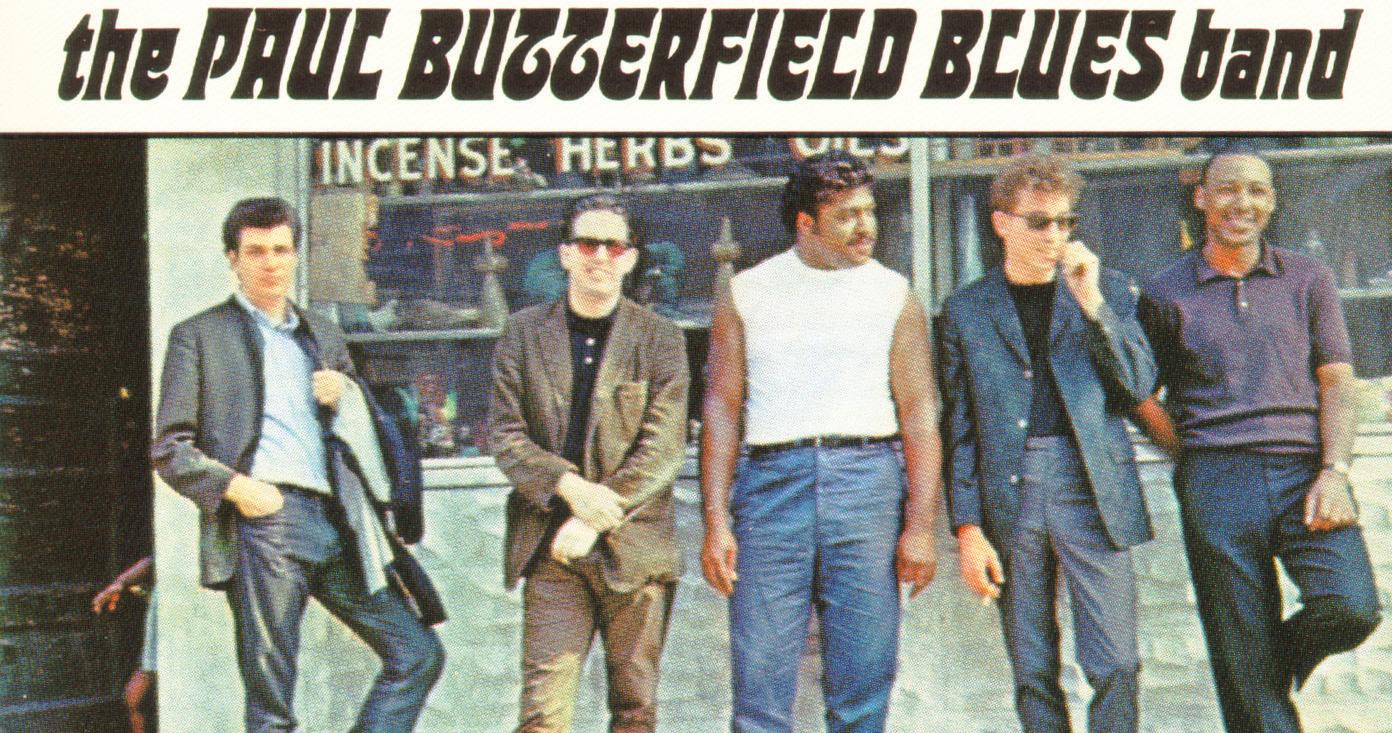
with Paul and Elvin and two members of Howlin’ Wolf’s band, Sam and Jerome. Bloomfield came in later, America’s first guitar hero, and the band reached major status.
SAM LAY:

“W hite, black Paul plays the blues and I’m gonna play with him. I was there with him, I helped him open the door. A lot of the white clubs wasn’t high on blues. The Paul Butterfield Blues Band came on the scene working out of Big Johns on Wells Street. We were originally a quartet, but we hooked up with Mike Bloomfield at Big John’s and it took off from there. There was never a racial issue. Look at Butterfield’s personnel: it was half and half. We were playing the black music “Negro Music” — we couldn’t get into white clubs. When Butterfield came on the scene, they started to hire bands. Places that didn’t even have bands were hiring blues bands. Butterfield opened the door for blues and he was the cause of a lot of blacks playing cause he swung the doors wide open for blues. Now they got places they call the House of Blues. I was there with him.
Years ago, even as late as back in the fifties when all this rock and roll came out, they were saying ‘Rock and roll has got to go’ and the djs were smashing the records right over the turntable. Just prejudiced people. Elvis Presley took Junior Parker’s Train I Ride Is 16 Coaches Long, people hired him, though they didn’t want to.
Lightnin’ Hopkins and Muddy Waters… Folks wouldn’t allow their kids to listen to it. If they had a janitor or maid or housekeeper and they had a radio going, they would make them cut that radio off. ‘I don’t want my kids listening to that ni**er music.’ Somehow or another, Butterfield was playing, making the club owners happy on both sides of town.
MIKE BLOOMFIELD:
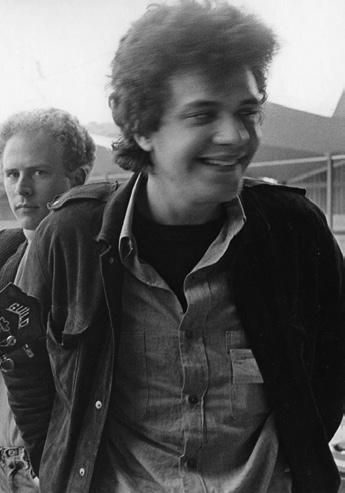
“It was just beautiful to be in that environment and to be accepted into that environment as a man on the terms of those people was a flattering thing. If you shucked you had no business being there. You’d not only be a white kid, you’d be a fool. And Paul by that time, he was a specialty act. It was a freak show. Our White Star. Irish white guy plays the blues. Man, he had horns. He held his own, my God man, he’d walk in a place and Little Walter and Junior Wells would put down their harmonicas they’d put ’em down and say, ‘Get that cat up there.’
“I knew Paul and was scared of him because he was so so accepted, so much a part of that scene. I would sit at a table with Muddy Waters and Cotton and they’d be looking at Paul and they’d be just beaming at him. ‘That’s my boy, that’s my boy,’ that’s what their eyes were just shining out and saying.”
ELVIN BISHOP:
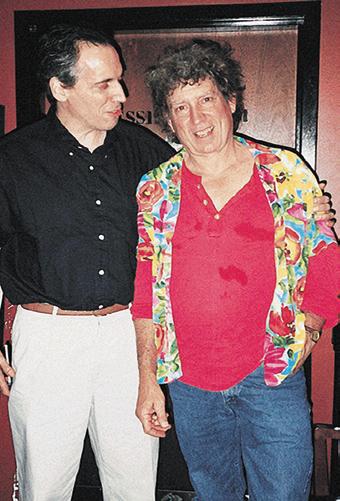
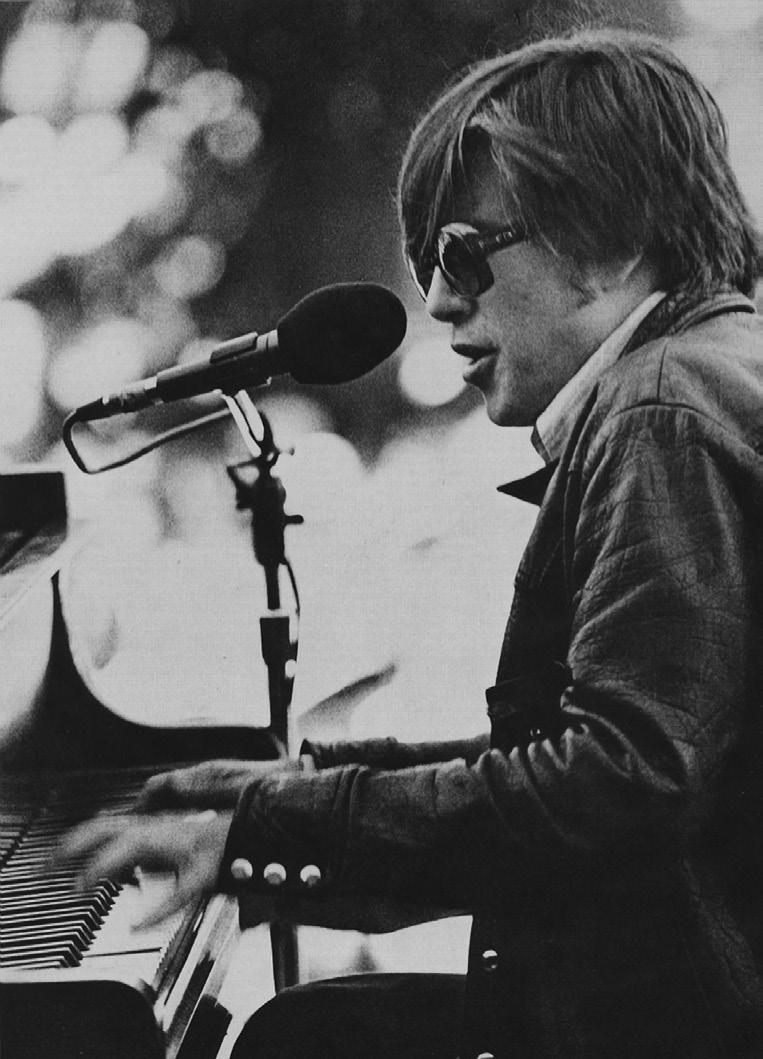
MARK NAFTALIN:
Moving to Chicago in 1961 and enrolling at the University of Chicago, Mark Naftalin continued his pursuit of blues piano by sitting in (from time to time) at the campus “twist parties,” where the resident band leader was blues singer and harmonica player Paul Butterfield, whose band featured guitarist Elvin Bishop.
After graduating from the University of Chicago in 1964, Naftalin moved to New York City for a year of study at the Mannes College of Music. On September 9, 1965, at a midtown-Manhattan recording studio, he sat in with Paul Butterfield and his band again — playing organ, this time, and sharing solos with Paul and the group’s new lead guitarist, Michael Bloomfield, on a session warm-up song. As the session continued, Naftalin was invited to keep playing, and then to join the band, with whom he toured for two-and-a-half years and recorded four albums, including the classic East-West. The results of that fateful session — including the warm-up song, “Thank You Mr. Poobah” — are on the Elektra album The Paul Butterfield Blues Band, continued on next page
“When I first came to Chicago, I was square as a pool table and twice as green.”
“In 1960 I came from Tulsa Oklahoma on a Fulbright Scholarship to the University of Chicago. At that time only a handful of white people were into blues and we gravitated together pretty quick. Mostly the folk thing was on then and blues was considered part of folk music and you could go and meet these people who were crazy about blues. I met Butterfield the first day I was in Chicago. Sometimes I’d see Nick (Gravenites) with Paul and we all played in different combinations before we got the Butterfield Blues Band together. Hound Dog Taylor, JT Brown, Junior Wells, Smokey Smothers all were on the scene. I met Smokey amd he was a real nice guy. He taught me how to cook in the kitchen and later on the bandstand. He gave me a real appreciation soul food. We kinda shocked a lot of college kids by just doing what we were interested in doing and hoping somebody would go for it. For me it was a culture shock coming to the big town
Fine Art Magazine • Spring 2022 • 27 60 • Fine Art Magazine • Spring 2015
Legends All: Mike Bloomfield, Paul Butterfield, Sam Lay, Elvin Bishop, Jerome Arnold, from the album that changed the landscape of American music and American culture, Mark Naftalin missed the photo shoot as he joined the band officially shortly thereafter. The “incense and herbs” store was located in Chicago, where the band formed
continued on next page continued on next page
VBF & Elvin at BB King’s PHOTO BY CATE CHIRICO

SAM LAY
He started over at the Blue Flame. Paul was walking in the rain, playing his harmonica. Smokey (Smothers) gave him a ride and let him jam with him. There was nothing in that place but blacks, it was a black club over on Lake Michigan. Paul come in that night and the owners the next week asked Smokey Can you get that white boy? Then the crowd started askin’ “Y’all gonna have that white boy down there tonight? That’s the way they were saying it. Every week there’d be a few more whites in the audience; people would be coming in just to see Butterfield.
“We were making seven dollars a night with The Wolf. That’s what we were making when President Kennedy was killed. So Paul got an offer to play on the North Side at a place called Big John’s, which had been, up to then, a folk club. I knew Paul from when he used to sit in over at the Blue Flame where I worked two nights a week with Howling Wolf, getting $12.50. a night. I had been with Wolf six years and Butterfield came in and said “I know where we can make twenty dollars a night for four nights.” We put the band together with no rehearsals. I went for 20 dollars a lot more than the $12.50.
“Then we started recording. Everywhere we would go, it was amazing to me that things just bloomed for us so quickly. At Big Johns, we always had a job. As long as we were in town, nobody could play Big Johns. We drew a crowd every night. I’m glad I was a part of it. They looked up to me like I was their daddy, I only knew what I learned from Wolf and Little Walter. It was good for us both, they honestly listened to me.”
PETER BUTTERFIELD:
(Paul’s brother)
“Music was a personal quest. He separated from everything else. It was a very private place in his head, something he was doing alone. It almost reminds you of the way so many art students spend so much time studying art history. Blues guys living in isolation evolve a personal style that is very unique. Paul managed to achieve a very personal vision. Little Walter & Sonny Boy influenced him and he took it and went off into the woods with it. He wrestled with it and made it his own. A lot of talented players can pick up riffs and sound exactly like so and so, Paul basically went off into the wilderness and found enlightenment, and then brought it back. It comes from inside, as opposed to outside, like the mockingbird. Paul, like Little Walter and Sonny Boy, found his own voice.”
ELVIN BISHOP
of Chicago from Tulsa but I wanted to do it — the music — real bad. I just played guitar 24 hours a day when I got with Butterfield. We played the same club six nights per week six shows per night and seven on Saturday. It was a Lucky time, the 60s, because things were so much more wide open, not a formula thing. There was a nice window of opportunity for a lot of people to get started. It was a real good learning experience playing with Sam and Jerome and Paul. We all from totally different backgrounds, musically and personally. Bloomfield was a city boy, a definite rich boy playing in bands since he was 13, 14. He knew a million notes and lots of music I didn’t know. As I said, it was a good learning experience and we all basically got along real good. A lucky situation for me to be in.”
Elvin has gone on to major commercial and critical success way beyond Fooled Around and Fell in Love and has become, as Little Smokey puts it, a wizzard on that slide guitar.
EPILOGUE
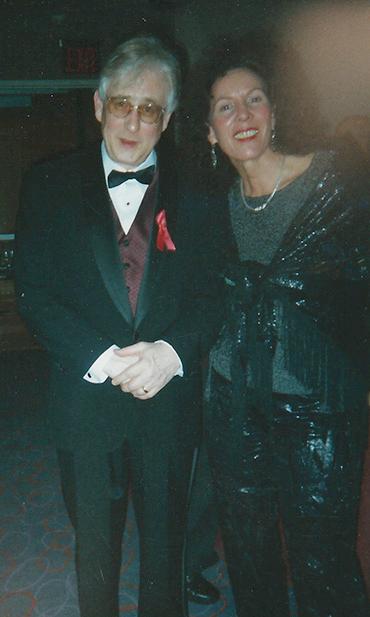
which was the group’s first album release.
“One day at the printing plant,” recalls this writer, “I couldn’t get the piano solo to Get Out Of My Life Woman out of my head and I wrote Mark a fan letter. I found out he was an artist and we published an article about his paintings (Mark Naftalin Paints The Blues by Ralph Musco) and brought him to a quasi-major art dealer who showed the paintings at Artexpo and had a grand piano on hand which Mark played for his adoring public. One thing I strongly recommend are the two CDs he released of live Butterfield shows on his Sounds Like A Winner Label. East West Live features three versions of the cut with one going on for 28 minutes, precursor to Dead & Allman Brothers marathon jams. Strawberry Jam, is also must listening. www.bluespower.com
I met him at the funeral. He came looking for Paul’s body in the afternoon when only I was there. Sometime before the funeral was over, he told a beautiful story I will never forget. His small son had witnessed it on a public TV show. It’s about hearts. It seems that when a cell is separated from a heart but kept alive in a petri dish it will continue to beat in unison with the heart it came from. If a cell is taken from another heart, it likewise will also beat in unison with the heart it came from. However, if the two cells are pushed together in the petri dish they will immediately begin to beat together. To me it was like describing the conception of children when two people love each other - like Gabriel or Lee.
This was one thing I learned from the funeral. Another one is that as time moves on, so many things happen that we think are insignificant things, but in the final analysis those insignificant things are really very significant after all.
And a third lesson is this. No one person can be everything to someone else and from each person that we have a relationship with, we receive different things. Therefore, it’s really stupid to be jealous. Many people loved Paul and I rejoice that his life was rich this way. I try to send appreciation to the Universe that I was lucky enough for him to have been part of mine.
— ELIZABETH BARRACLOUGH, 1987
Fine Art Magazine • Spring 2022 • 28 Fine Art Magazine • Spring 2015 • 61
PHOTO BY CATE CHIRICO
Victor Forbes and Sam Lay at the Blue Poodle Gallery in Southampton Butterfield/Dylan Symposium produced by Fine Art Magazine, 2002
Jamie Ellin Forbes and Mark Naftalin at an Artexpo after party at the World Trade Center
MARK NAFTALIN:

JIM MESSINA There’s Still Something Happening Here
INTERVIEW BY VICTOR FORBES
Jimmy Messina picked up his first guitar at the age of five, influenced by the giants of early rock and roll, Scotty Moore (Elvis) and James Burton (Ricky Nelson). Highly proficient at the young age of 15, he formed a teenage surf band called THE JESTERS modeled after Dick Dale’s music and that of The Champs. With a recording deal in hand, his album The Dragsters came out at the tail end of the surf music era and didn’t sell much.
He then immersed himself in all aspects of the music business, gaining acclaim and experience as an engineer working at Sunset Sound Recorders on sessions that produced gold records by Lee Michaels, Joni Mitchell and the legendary band, The Buffalo Springfield, famous for their mega-hit record, “For What It’s Worth.” But… with Steve Stills and Neil Young at the beginning of their well-documented stormy relationship, the critically acclaimed music was stalled.

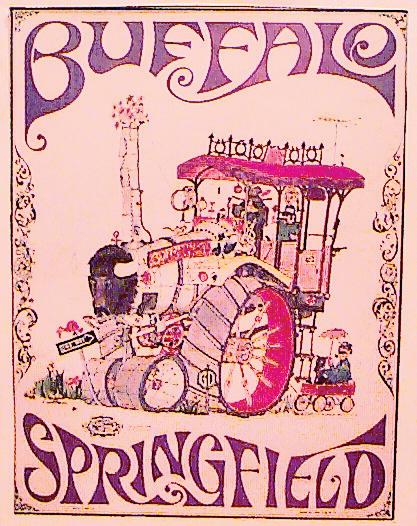
Ahmet Ertegun, legendary head of Atlantic Records, recognized Jim’s talents and asked him if he would be willing to produce and deliver the unfinished album that the Springfield had started. Initially hired to engineer the Springfield, Jim by then had already replaced Bruce Palmer on bass guitar, when asked by Ahmet and the band to produce what was to become their final album, “Last Time Around.”
He then joined forces with fellow Springfield member Richie Furay to form the seminal country-rock band, Poco. In 1970, Clive Davis of Columbia Records offered him an in-house producer’s job and his first project was with the then-unknown Kenny Loggins. The result of this collaboration was record sales of over 20 million and gigs everywhere, including a memorable one at Carnegie Hall in 1972, opening for Delaney and Bonnie and Friends. Messina’s artistic inclinations beyond music range from building furniture, welding sculptures and painting in acrylic and watercolors.
What kind of painting set up do you have?
I have several but I bought an old military desk that might have been an order desk out of the 1940s that was painted battleship grey. After I tore away a little piece of chipped paint, it turned out to be solid maple. So I had it stripped down and refinished. It’s very cool. With its top midsection slightly slanted, it is easier for me to sit and paint when I am working at home in watercolor. I can see well when I paint and the water doesn’t readily trial down on the surface of the painting. I also use a fairly large easel designed more for oils than watercolors, which I use for my acrylic paintings. If I am painting out in the field, I pack all my gear and things that I need, from brushes to bottles, boards to easels and three or four different types of clothing that I can take off or put on, depending on the weather. When I first started working in watercolor, I used a couple of analog Nikons—one loaded with black and white, and the other with color film. The black and white shots allowed me later to check my grey tones and light values. Then I would shoot the same scenes in color. I could then see what the colors actually were and compare them against the grey tone and light values shots. This allowed me later to really see how the shadows, the light and the colors, all played out, something that was hard to keep in mind after I left the site. I would then start drawing out what I saw. Sometimes it would be an easy process; sometimes I would sit there for a whole day or two. I would start with the background, such as the sky and clouds and work my way down through the mountain or horizon details. Sometimes, like in the summer in California Gold Country (too hot), or in Hawaii (the humidity gets too high) it would be impossible to paint in watercolor. The pigment wouldn’t flow evenly inside a “wet on wet” wash. If the ambient temperature was too high and too dry, the wash would absorb too quickly leaving the sky to become simply puddles of color. That was about the time I began to realize that being there to have the initial experience gave me a real sense of the dimensions and sunlight. I would also grab paint chips or a piece of the brick or stone, which was a big part of the process that I could later use at home when finishing up the painting, as in The Wells Fargo Building. It was built in 1857 in the California’s gold country. Clint Eastwood made a number of films in and around it and Kenny and I shot our “Mother Lode” album cover in front of it in 1974, so it had some history for me. I like doing architecture like Pueblos, 19th century Victorians, or old farm houses—things that have a sense of peace and history.
I went back to Colombia, CA to paint the Wells Fargo Building in the 1980s, after Kenny and I had broken up, spending a number of days camped out in there in my VW van, drawing and shooting color and black and white photos and getting the drawing the way I felt it should look. What made it most difficult was that the building is crooked from years of settling and I feared there would be those would say, “This guy can’t draw a straight line.
Fine Art Magazine • Spring 2022 • 29 Fine Art Magazine • Spring 2011 • 39
HEAVEN FORBID.” ;-)
Taos Ladder, acrylic, 36” x 24”

In any event, as I was standing in the street looking at the building some 30 years later, I felt as though I had stepped into my painting! But I immediately sensed something was missing. For me, once a drawing or painting is committed to canvas, it freezes it in time. Then finally I got it! A very large tree that once stood in front of the Wells Fargo Building from back in the late 1880s was missing. It had been chopped down.
How does this compare with your songwriting process?
Songwriting is very similar. I was explaining this point at a concert one night, explaining to the audience that this next song reminds me of one of my paintings and how when I step into it, I see how things have now changed. The song is entitled “Traveling Blues” recorded in the 1970s on a Loggins & Messina record. In those days I didn’t have any children. Now that I do, I experience a totally different set of emotions when I sing the song. These new emotions weren’t there when the song was simply a
projection, or an emotional fantasy of an experience, when the song was first conceived.
Another way that painting relates to me as a recording engineer is that over the years playing with colors and pigments, I noticed that the cool colors recede and the warm colors pull forward. It’s the same as mixing sound. The cooler colors or parts —such as echo, reverb and room ambience— have a tendency to recede inside the mix. The warmer colors or parts—vocals and instrumental solos—want to be up front. So it is kind of a dichotomy to put too much echo, reverb or ambience on the warm stuff. That being said, it is done most often for an effect. At times the rule doesn’t always rule.
When did you begin painting seriously?
Art for me came at a point in time when I had not been working that much in the music business. My mother and grandmother were both artists, so it was in my blood to paint. Painting fulfills the creativity that is sometimes lost in a business where no one really knows why or how music becomes
successful, other than those who spend a lot of money promoting it. But it doesn’t change the artist who has the artistic desire and need to express oneself.
I love wood and metal, so I learned to weld and to do woodworking. I’ve built cowboy furniture out of lodge pole pine, as well as pine furniture in the style of Irish and Scottish farm furnishings.
As a technical engineer, I enjoy
circuit wiring, repairing gear and using the soldering tools as well as reading schematics. It’s all interrelated to me.
As a young man, I had a lot of passion toward my music—to be a somebody— but I was a nobody, just a little, skinny Italian kid, from Colton, California. I knew then that I wanted to know the music business from the pots and resistors in my guitar amp

Fine Art Magazine • Spring 2022 • 30 40 • Fine Art Magazine • Spring 2011
Watching the River Run
A very rare photo of Jim Messina and Neil Young working at the console in Studio One, Sunset Sound, 1966 on a Buffalo Springfield album

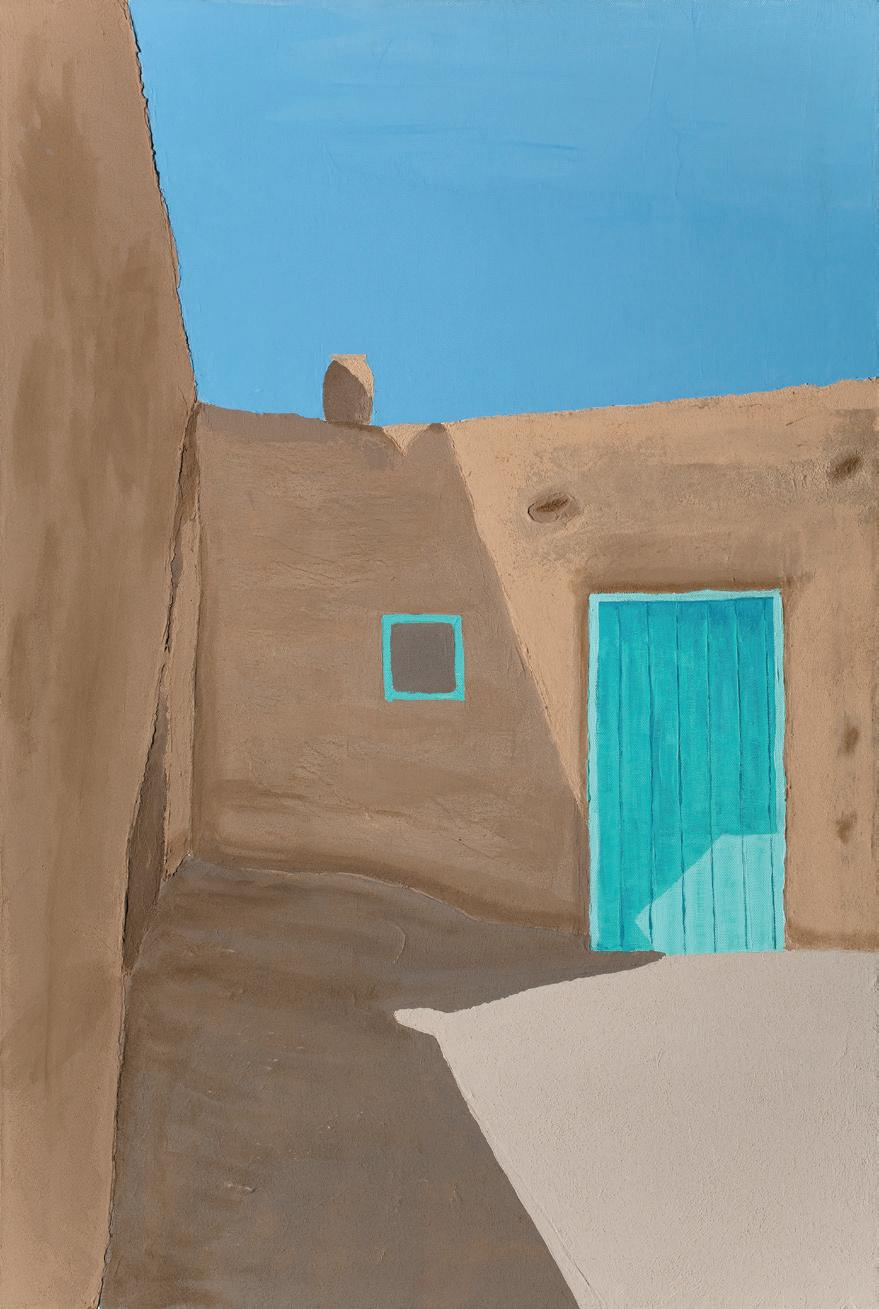
through and including the words that made up the legalese in the contracts I had signed, and all that was in-between.
In heart to heart conversations I’ve had with myself and from those commitments I’ve made, I have come to realize and understand that I can forge my destiny by virtue of my thoughts. Continued and perpetual success? Well, that’s another story. As the Romans would say (if you are a Spartacus fan, as I am), “The Gods may have other plans.”
Tell us about your musical past.
I first began working with the Buffalo Springfield on their second album, “Again” as a recording engineer. “Bluebird” was on this album; I thought it was their best song and truly a tribute to Steven’s talent as a songwriter and musician. The very first Springfield session is when I met Neil Young. I recall my initial impression was that
Neil was their producer. He and I worked well together to create a very fine piece of work for the band on that album.
The third Buffalo Springfield album, “Last Time Around,” was the album that I engineered, produced and played bass on. Multi-track recorders were all eight-track machines in those days so tracks were limited for overdubbing. Partway through the making of “Last Time Around,” I learned that Neil had quit the band, leaving Steven, Richie, Dewey and myself to continue on our own.
The band, even when Neil was there, seldom recorded all together. I would work with each of them independently. Steven had songs and musicians he wanted recorded, as did Neil. Richie had songs and musicians that needed to be recorded. Dewey would sing on a song here and there. I had enough bits and pieces from each of them that
Fine Art Magazine • Spring 2022 • 31 Fine Art Magazine • Spring 2011 • 41
Taos Turquoise Door, Acrylic 36” x 24”
Wells Fargo, water color, 23” 17” (Columbia State Park, Columbia CA) This picturesque old red brick building, the most beautiful early day structure in Columbia, was erected in 1857, for Bill Daegener, an agent for the company who held this office until 1872. Columbia camp produced around $85,000,000 in gold, over half of which was weighed on the scales in this building. The cast iron balcony grill that adorns the second story was brought from Troy. N. Y. by mule team.

would allow me to finish the album, as Ahmet Ertegun wanted it done. Near the end, Neil came in with the master of “I Am A Child” which he recorded in studio “C” at Sunset Sound. It sounded great and I was pleased to see that he had decided to contribute to the project.
It was a lot of work to finish “Last Time Around” as everyone was so scattered all the time. I never made a dime as a producer off of that album and years later, according to Ahmet, the album never went gold. But what seemed very odd to me was over time I didn’t know of anyone in my generation who didn’t own a copy of “Last Time Around.”
Poco evolved out of this?
After the Buffalo Springfield dissolved in 1968, I started working with Richie cutting a demo, doing music that was something kind of country but kind of rock. It was during the Buffalo Springfield sessions, we brought in a pedal steel player named Rusty Young who overdubbed on “Kind Woman.” Richie and I didn’t know what the group was going to be yet. It was then that Richie and I thought Rusty was the kind of guy we wanted to have in a group of our own.
We had been watching Ricky Nelson perform with the Stone Canyon band, (by the way, his “Garden Party” era was a great moment for him) and he had a bass player named Randy Meisner. We wooed Randy and he decided to join our band, which we initially called POGO. We did our first gig at the Troubadour. That’s when we heard from a guy by the name of Walt Kelly who served us with a lawsuit saying, his cartoon character POGO was off limits, “Stop using that name or go to court.” That’s when our manager Richard Davis suggested that we use a spelling that made up the word “POCO” instead. Good call. I produced and performed on three albums with POCO and toured from 68-70. No matter where we played, we’d always sell out. But we didn’t have the record sales we needed to survive. Our second album contained a song that I wrote and sang lead on entitled, “You Better Think Twice.” It kept our momentum going for a bit longer. The last album I produced and performed on POCO was “Deliverin’”, a live album.
So you just wanted to produce records?
Yes. I left POCO on October 31, 1970 to produce for Columbia. It was during my last tour with Poco that Don Ellis, who worked in artist development there, asked if I might consider listening to the little brother of a co-worker of his. Two months later, I was introduced to
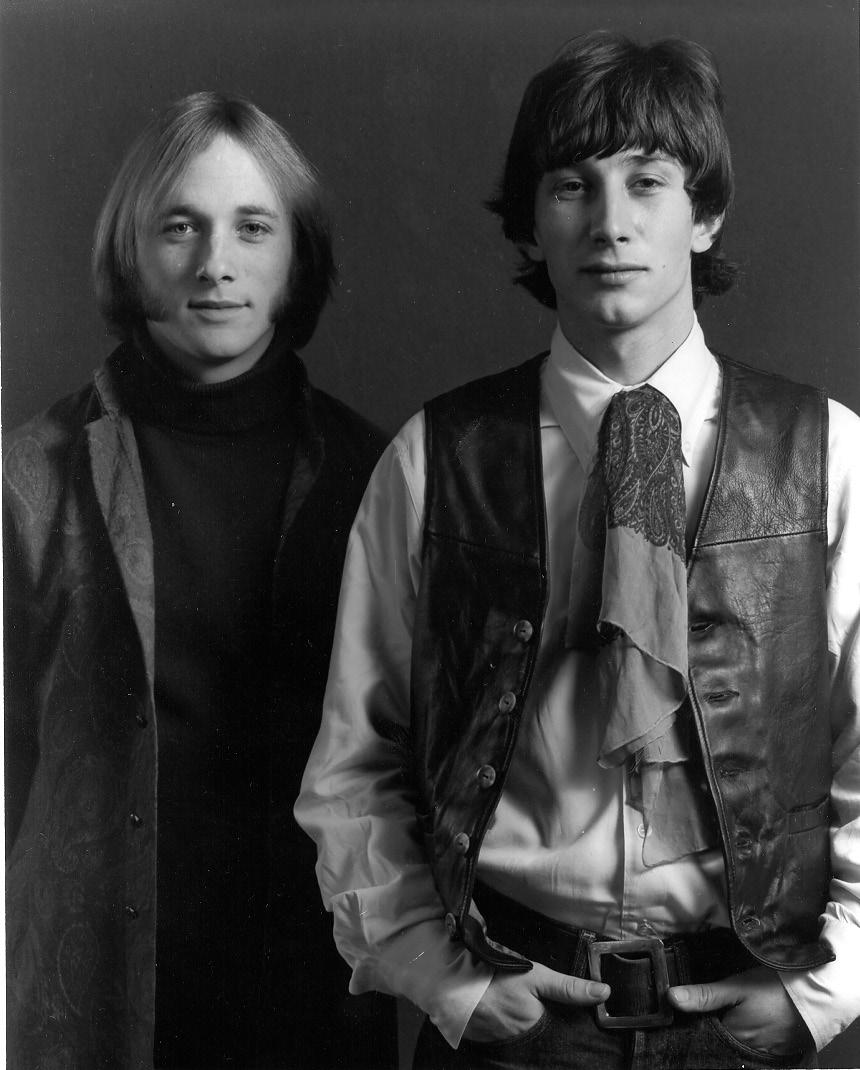
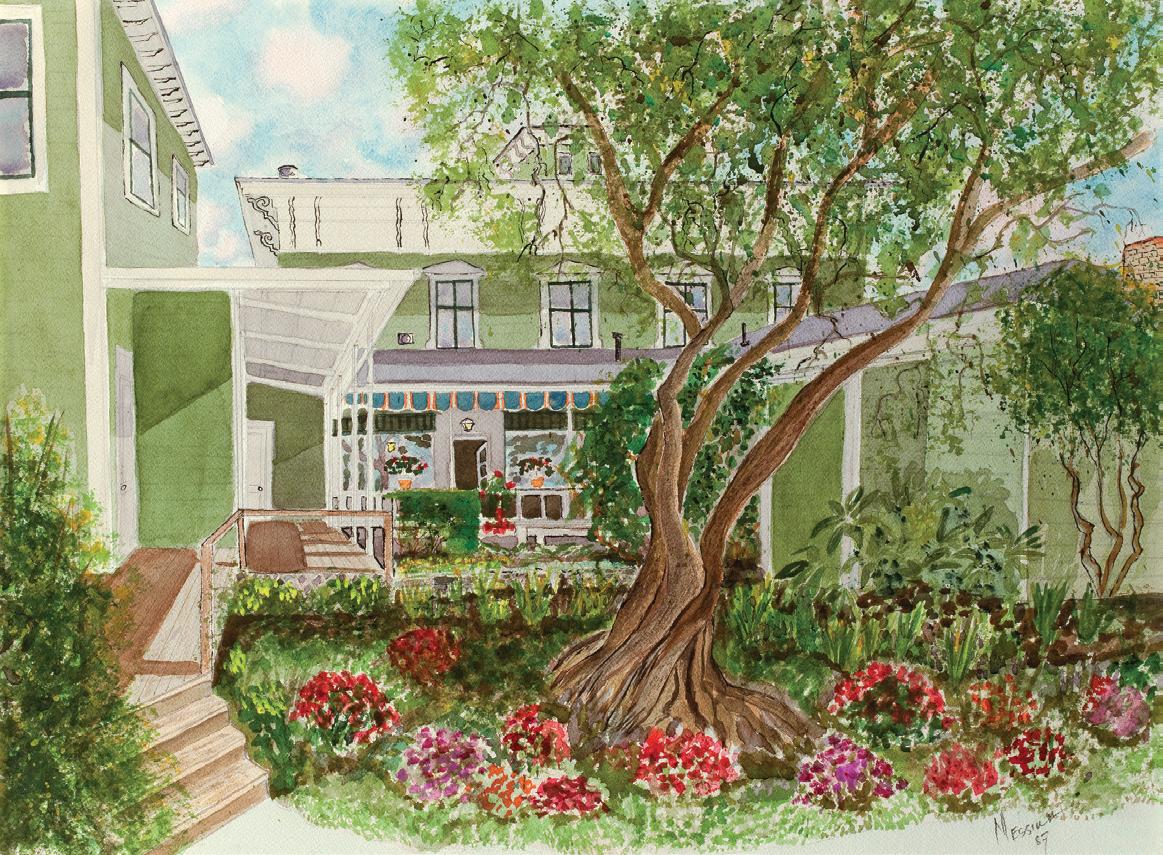
Upham Hotel, water color, 23” 17” The oldest hotel in Southern California, built in 1871, it’s “Widow’s Walk” faces the ocean and in the 1800s, one could see the ships as they sailed into the harbor.
Kenny Loggins when he came at my invitation to my house for dinner. He was poor in those days and didn’t own a guitar of his own. I lent him one of mine and he sat down and sang a number of his songs into my tape recorder. After he left, I told my wife Jenny there’s something very special about this guy. The fact that he could just sit down and feel comfortable about singing his songs into a tape recorder was refreshing to me after the way the Springfield and POCO recorded. The thing that most scared me was that he had never been on tour nor did he have an attorney, manager or agent. All of that had to be in place if there was ever going to be a single record sold. Nonetheless, I agreed to take him on as an artist to produce.
It was during the process of gathering his material and trying to find a manager and an agent for him that I realized nobody was interested in him, which was a shock to me. I then thought maybe the best thing to do would be to introduce him to the audiences and fans I accrued while in the Springfield and POCO by performing on an album
Fine Art Magazine • Spring 2022 • 32 42 • Fine Art Magazine • Spring 2011
Steven Stills, Jim Messina, Buffalo Springfield days, 1967
Kenny Loggins, Jim Messina in concert 2009
with him like the old jazz guys did—“Kenny Loggins with Jim Messina Sitting In”—was the concept I thought that would most help him.
Clive Davis was not too pleased initially. He said I’d be starting a group that would break up after it’s first record, something he did not want to see. I pointed out to him that Delaney and Bonnie and Friends with Leon Russell, Eric Clapton and Duane Allman all performing as featured artists had been successful with that concept. In addition, there had been a number of albums in the jazz realm similar to what I was proposing, Stan Getz and Charlie Byrd to name another. I commented that I felt this was the best option to start on the right track. Clive reluctantly agreed and with his blessings, I was able to find a manager who then secured an agent and we were off and running with an album and a tour. I thought once the train was rolling I could jump off at the next station and just produce Kenny’s albums after that.
But as it turned out the album was so well-received that Clive suggested I consider staying with Kenny. We agreed that I would continue to produce and perform with Kenny as an artist. Hence... the birth of Loggins and Messina. We had five or six very successful years, selling around 20 million records. Kenny always envisioned himself as a solo artist so this concept enabled him to launch that solo career.
After L & M disbanded, I released an album entitled “Oasis” on Columbia Records. Now… the same guy—Don Ellis—who came to me for help to get Kenny Loggins started, had somehow managed to work himself up the ranks and into the A & R department there. However, this time he wasn’t asking, he was telling. Standing before me and representing the record label he said, “I’m not happy with your album because this isn’t the album I expected.” When I asked him “What did you expect? He said, ‘I was expecting an album that sounded more like Loggins and Messina.’ I said, “I’m not sure if you are aware of this or not, but… Loggins and Messina broke up and … quite some time ago too.’ It was no use; he had already decided to kill my album before that meeting. Even so, I toured behind “Oasis”, financing it with my own money. Surprisingly, it sold about 150,000 units, approximately the same amount the first L & M “Sittin’ In” sold and without any promotion! But still and yet, with no help coming from the label, I asked my attorney to please get me a release. A number of months later, I signed with Warner Bros. where I recorded my next two solo albums.
How did all this impact your creativity?
the depth of field.
I seek to get at least four dimensions inside a painting. Starting with one plant, then to a wall, and then from that wall to a chair. From the chair to the wall behind it and on and on, thus giving a very dimensional perspective to the painting. To me, all adobe walls are the same color: adobe. Cow skulls are all white and the sky over New Mexico, with its unbelievably beautiful blue, is always the same color, only just brighter or a little darker. The turquoise and corals, together with the blacks, Indian reds and whites combined with the various blues and blue greens with petroglyphs set in silver jewelry are in everything. Yet, no two paintings are the same in the hands of a fluid master. Somehow, all these very skilled and miraculous New Mexican and Native Indian painters can take the same images that one sees all over Santa Fe and find many different ways to make a landscape appear so very different and yet feel the same.
For me, the unique territorial architecture (which I adore) combines the Native American adobe architecture with the Victorian architecture of the 1800s and is so absolutely phenomenal and beautiful to look at. I think that will be my next series.

Taos Ladder, acrylic, 36” x 24” The Pueblo’s distinctive style has influenced much of the region’s architecture. It consists of two long, multi-story adobe structures, one on each side of a freshwater creek. Explore on your own or take an escorted tour that recounts the Pueblo’s history, which includes occupation by Spanish conquistadors in 1540 and by Franciscan friars in the 1590s.
I realized that I needed to find other creative outlets until things changed. That’s how I got into my artwork. I enjoyed hanging out with painters and took watercolor classes, one with Marilyn Simandle in Sutter’s Creek, California Gold Country. While I had been painting only casually and for fun, her class asked that we only work with her palette in order to try and recreate what she was doing with the colors to which she had limited herself. That’s when I became aware of how a specific palette, via the pigments and the colors, can establish a unique style and look for an artist.
You’re kind of a traditionalist in your painting.
I’ve learned over the years that to plagiarize will only work against you as far as being able to be unique. At the Taos Pueblo—visitors were not supposed to take pictures so they wouldn’t let me use my Nikon. I had a “point and click” with me, but would have preferred to just sit and draw and then paint. However, that was either forbidden or there was a fee involved, I can’t rightly remember now. But for me, being able to sit and draw is the difference between getting something to feel threedimensional as opposed to just two-dimensional. When I am there and looking at an object, I can see all the little twists and turns that add to
I saw recently where Young, Stills and Furay are going out as the Buffalo Springfield. Are you going to join them?
Actually, no one called to ask if I might like to participate in the reunion. And … it would have been nice to have at least received a call explaining how they were conceiving this reunion to be. I am reminded by your question of the old adage that says, “No good deed goes unpunished.” That having been said, I must add that without Steven, Neil, Richie and Dewey I may not have traveled the path that led me to the successes I have earned and enjoy today. The Buffalo Springfield was a good starting point for me.
In addition, as anyone who has followed my career would attest, my songwriting, musicianship and productions have evolved significantly and are quite diversified and sophisticated since 1967, when I was the bass player in The Buffalo Springfield.
In the Springfield, I learned about folk and folk rock. In POCO, I explored combining folk, country and rock. In Loggins and Messina, I took out all the stops and Kenny and I had success not only with folk music with songs such as “Danny’s Song”, or country hits with songs such as “Listen to a Country Song” by Lynn Anderson, but also rock hits like “Your Mama Don’t Dance” and “Angry Eyes.” We also brought to the stage classical music compositions and orchestrations like “Be Free” featuring violins, mandolins and oboes. Some of the most fun and sophisticated orchestrations I performed on record and on stage lie in the Latin jazz and Latin rock genres on my “Oasis” album that expanded upon Salsa with the use of a horn section, percussion and keyboards set in a warm bed of chord changes.
So, I’m not sure exactly how much fun it would be for me to stand on stage and just play a bass, especially if my fellow compadres considered me only a sideman while in the Springfield. Nonetheless, I am extremely excited for Richie. I feel this will be a great opportunity for him in so many ways to heal (if any) old wounds that may have lingered between the three of them during their relationships as young men. It’s all good there.
And…it’s all good here for me, too, because I am excited about touring as a solo act this summer. I have put together a wonderful group of musicians and we will be doing songs from all of those groups above. I am so looking forward to performing to all the fans I have made throughout the years since 1967 and plan to have my art available for those who wish to buy it at the shows. I look forward to seeing you there.
Until then, visit jimmessina.com for further details and show dates.
Fine Art Magazine • Spring 2022 • 33 Fine Art Magazine • Spring 2011 • 43

“Sometimes there are no clues it can happen to you out of the blue…”
Many hundreds of thousands, if not millions of a certain age and taste in music, will recall these words: “This is The Boogie — the Savoy Brown Boogie”, emanating from a charismatic singer with a stove pipe hat and shabby fur coat on stages in ballrooms, auditoriums, college campuses, rock festivals and the fabled Filmores coast to coast as well as across in Europe and England, at which point the guitar player would rip out a blazing intro on his Gibson Flying V and the band would be off and running. Kim Simmonds founded and anchored that legendary group in its heyday and still carries the name today, performing concerts around the world, as a solo act and with a leaner version of the Savoy Brown Blues Band. For many years, he let his guitar playing do the talking, but about ten years ago, Simmonds decided to try his hand at the visual arts. “Painting reminds me of my youth,” he said in a recent interview with Fine Art publisher Jamie Ellin Forbes and has unveiled a collection of new paintings (to debut at Artexpo in New York City), one of which graces the cover of his impeccably recorded, extraordinarily played, written and sung new CD, Out of the Blue, “one of the best albums of the year,” according to Blues Revue.
Kim, who has performed before massive audiences and sold millions of records over the years, finds that his interest in painting
KIM SIMMONDS
A PASSION for PAINTING

recaptures some of the energy and excitement of “our glory years.”
“That’s something that I try to do anyway — keep that youthful approach to life. For better and for worse that naivete and idealism never quite left me.”
Kim, who spent years with a collection of different and sometimes difficult lead singers, has taken on the vocal chores himself of late and his love of the blues is evident in his latest music, as is his love of the hues and subtleties of color and image in these new paintings.
“Looking back nothing was pointing to me doing something artistically except my own drive,” relates Simmonds. “I didn’t have much encouragement in that direction so I had to find my way. I would go to museums in the summer every day – the history and art museums with my mates. I went to the library and read books.” Simmonds adds, “I started with watercolor. That was a lot of fun, but it seemed that to be an artist, you have to go with painting. So I started with acrylics and then went finally to oils. I’m now painting with water mixable oils and am finding them to be a lot of fun. I’m also drawing all the time with pen, pencil, crayon and charcoal.”
Fine Art Magazine • Spring 2022 • 34 30 •
•
Fine Art Magazine
Spring 2009
Kim Simmonds on stage in Las Vegas
Man With Guitar, oil, 2009, 16” x 20
Following is an interview conducted with Kim by Fine Art Magazine publisher Jamie Ellin Forbes in January of 2009.
JEF: There’s a rhythm to the work that is precise. You are mixing sound, light and color. Do you know how difficult that is?

Seems like you pretty much summed it up. All I am trying to do is get some emotion into what I am doing, that’s always been my main playing card as a musician. When I was quite young, to be a musician you had to be able to swing, to have tone, to be experimental, to put color in your playing. My main thing was I could get my emotions out through the guitar and express myself and communicate with people. In the more solitary world of painting, I don’t come into contact with people while I am doing the work, yet I take the same approach to painting — that is to get that emotion into it. The mystery to me is that one could actually get emotions out through art. It is very exciting to be able to express yourself in anything.
And it has done you well…
Yes, I have always been able to express the emotional side of me. As for the technical side — whether you could swing, or do any of the other things — I don’t know if any of us have the 100% ball of wax. I make mistakes usually because I go down the same road everybody goes down which leads to a dead end. I am fortunate to have the personality that says “do your own thing.” While sometimes it is more comfortable to be something that you’re not, for me it all goes back to being idealistic. I always tended to say ‘this is who I am’, and ran with the ball.
JEF: Having seen you play in the 60s, you seemed to be in touch with a much purer creative streak than the crowd was allowing for. Your paintings of today are infused with that great energy. The guitars have a sense of color vibrational resonance, they look as if they do sound like music.
KS: Now I am at that certain age where I can look back at who I am and what I tried to do and have done. Thank you, that’s a nice way of saying it.
JEF: I found it quite inspiring and your music to be very visual. Your paintings have that same clear element and structure; the same cleanliness. The abstracts have depth, definition and color balance.
KS: Again, being a guitar soloist, I can get into that head space. Guitars, abstracts — usually they are painted and they’re done and any other mark on them wouldn’t do it. The initial emotional has me lost in that moment.
JEF: Painting an abstract is like composing a sonata that works.
KS: When I come home from doing shows, I have taken in a lot of visual things while traveling. If they’re working and come

across, it is based on my absolutely emotional approach to things. It’s what I read about in the books and it’s very exciting if that’s what is coming across.
In the abstracts, one element, one stroke goes on and it is perfect, or at least it looks perfect to me. I will start on one in a vertical position, then turn it upside down, look at it in the mirror, horizontal and eventually get back to square one. It’s exciting for me that that could be happening. Some of my other stuff just goes on forever. The landscapes and still lifes I paint for my own pleasure. Usually with abstracts and guitars I have be in sort of a nervous state…I’ll come back from doing some shows, having different sleep patterns and my whole nervous system is a little jangled…on that high, full of ideas. I have done this in the studio with music and now in a different kind of studio with paintings. There is a surge going through me. One of my favorite abstracts came on one of those mornings — like a guitar solo where I am trying to achieve a moment of beauty in the instrument. I keep things as simple as possible and exist on a very emotional level, always seeking to elevate beauty in my work. I am absolutely non-technical. I didn’t know what a scale was until I was 33 years old. If people are coming to me for a lesson they are coming to the wrong person. I have always had very high hopes and wishes. I found a home for those deep feelings with painting. With the music business, it tends to exist on a different level than how I just spoke about the instrument. Art is very solitary and it allows me to find a home for some of these deeper feelings. I suppose you find art in everything. Having always wanted to make high art out of playing the guitar, with the actual visual art I take the same approach. It’s a
Fine Art Magazine • Spring 2022 • 35 Fine Art Magazine • Spring 2009 • 31
Vibrations, acrylic, 1990s, 24” x 30”
Poster for a Savoy Brown Show
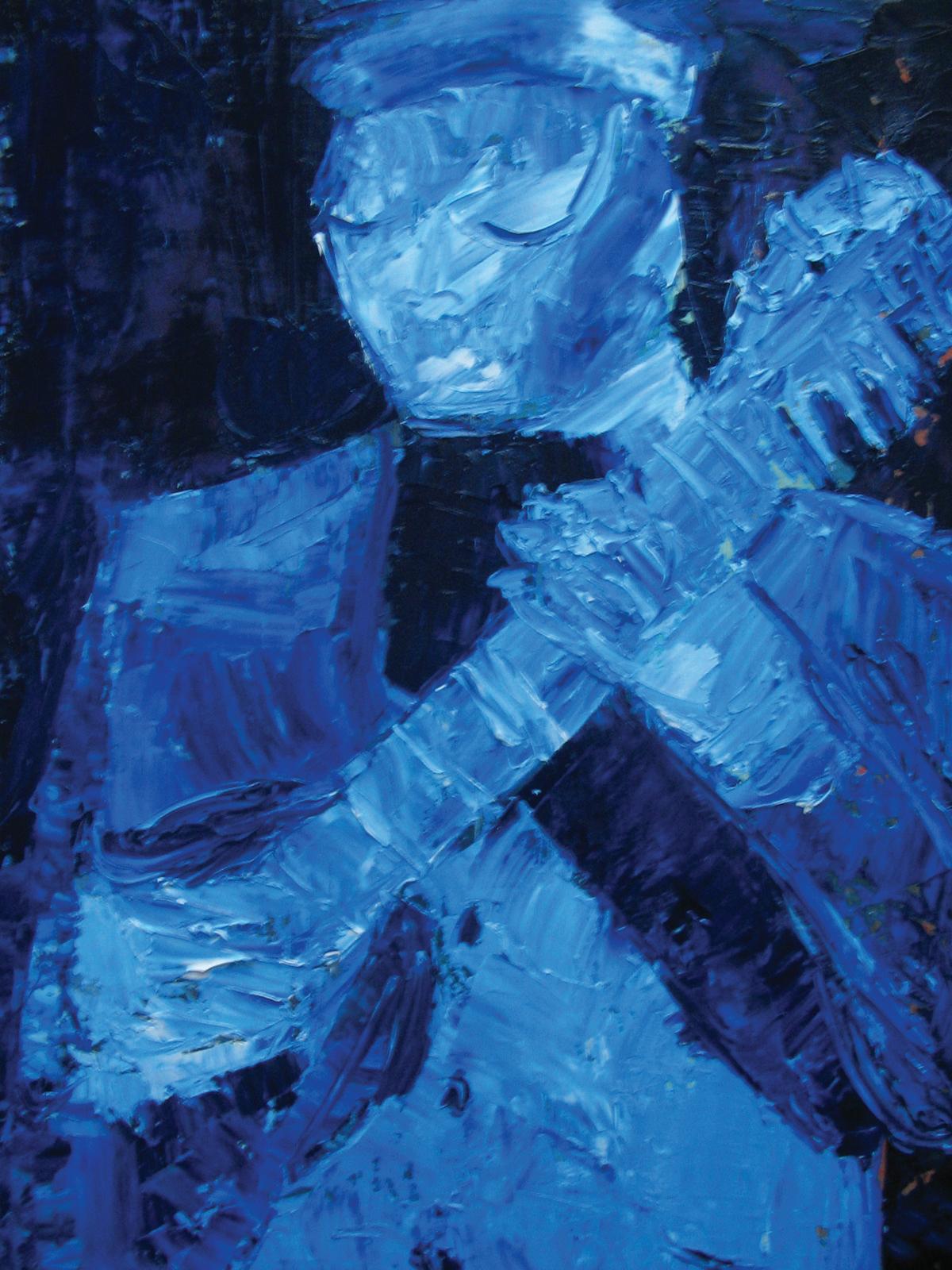
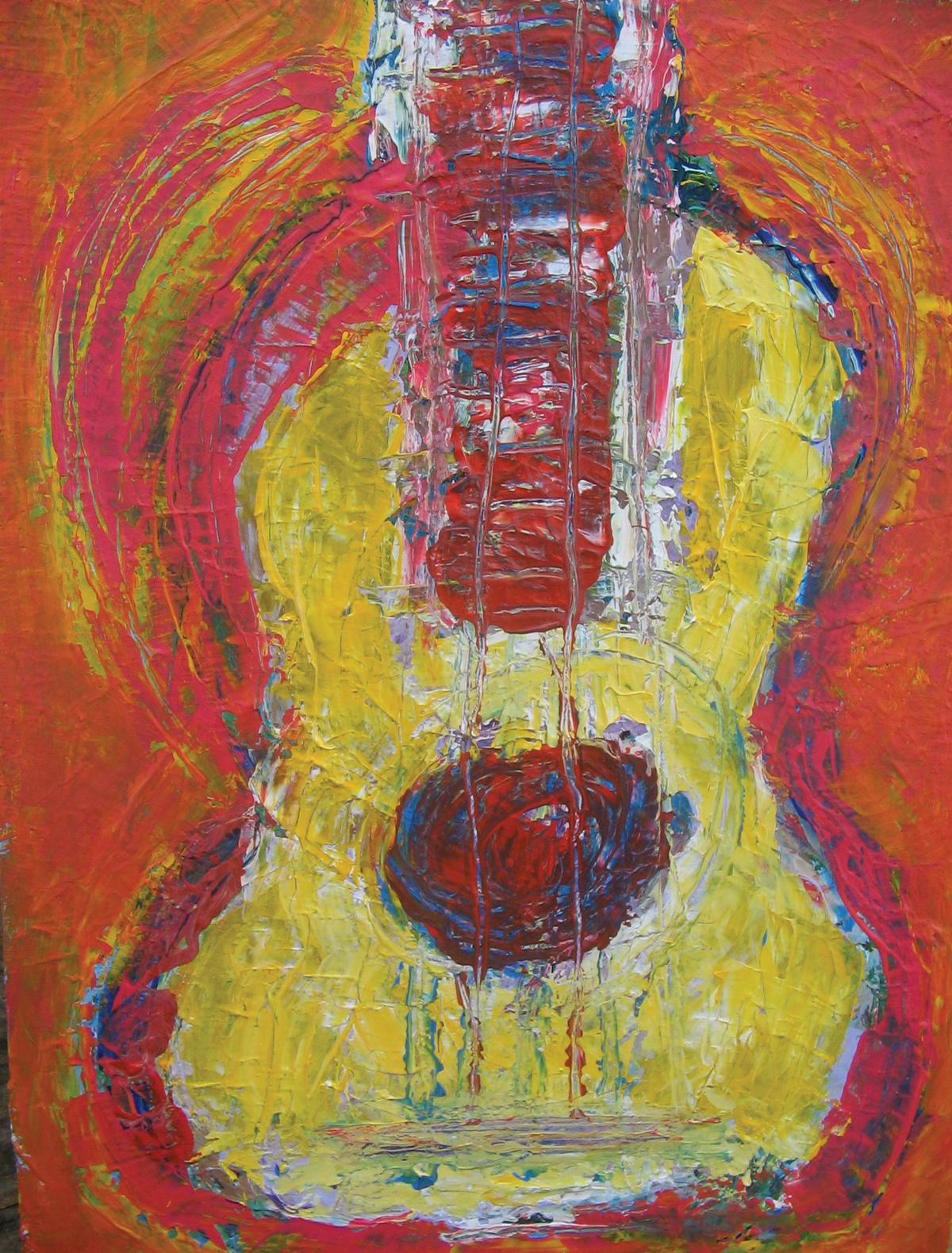
“John Lee Hooker, Muddy Waters, Louisiana Red, BB King never let me down.”
wonderful solitary thing and I enjoy it very much
JEF: In the paintings it seems that you were able to unite these feelings. Do you think the colors can go out in the way the sound does?
KS: I think that you are correct. I see what you are doing in this conversation, trying to bring out in me the connection between me as a musician and as a painter, intertwined. I am absolutely amazed at the correlation between one and the other. And yes, the colors are expressing the same things as I do musically, if that’s what is coming across, that is no surprise to me.
JEF: When you connect with this and do these works, are you expressing yourself to communicate this to someone else?
KS: To communicate, sure, yeah, definitely. I don’t know where the balance is, I don’t put this piece of red here because someone is going to like it. You have to be emotionally committed, in the right mood, something saying to you ‘You have to do it now.’ You want to have something that is going to look finished, professional, that is pleasing to yourself — that works. And that then it communicates to other people. Until I spoke with you, I didn’t realize it was working.
JEF: A lot of drives and motivations, universal rhythms, standing on the outskirts of the horizon of the universe…
KS: I wish I could intellectualize this a lot more, and I do have a religious streak within me, always have, and I feel in touch. I have had a blessed life. I do think drive is very important. You have to have that drive to want to get something accomplished. I don’t know
much about myself, to tell you the truth. I glean things from what people say about me, knowing there is all sorts of emotional stuff that goes on I haven’t come to grips with at this point. Painting has made me a much better person. I am feeling my neurosis disappear, into the air, into the canvas, perhaps. Really cleansing me.
JEF: I see a window of soul, a vision of Heaven in your music and painting. Art opens an opportunity to enter into this visual thing yousee and share it.
KS: You’ve expressed all my feelings nicely for me.
JEF: The Godliness of what the Creator intended art to be makes a better society.
KS: I am absolutely realizing that. For me, it’s rather amazing that everything you said is true. As a musician growing up in the 60s, a lot of the people that were of the same generation fell by the wayside. Drugs — some died — when I lost those people I did lose my bearings; even when some of the biggest stars died, I found that I lost my way a little bit. If they go by the wayside, you’re left on your own. I always felt a little let down when people around you who have inspired you are not there.
JEF: You talk about the old blues artists…
KS: At 13-14 years old, I’d be buying records by these people and finding myself at 55 still buying records by these people. They never let me down. John Lee Hooker, Muddy Waters, Louisiana Red, BB King never let me down. That’s the make of a great artist, that’s always been the source of my inspiration; that is what I hold on to.
Fine Art Magazine • Spring 2022 • 36 32 • Fine Art Magazine • Spring 2009
“Bluesman”, oil, 2009 18” x 24”
Spanish Guitar, acrylic, 1990’s, 18” x 24”
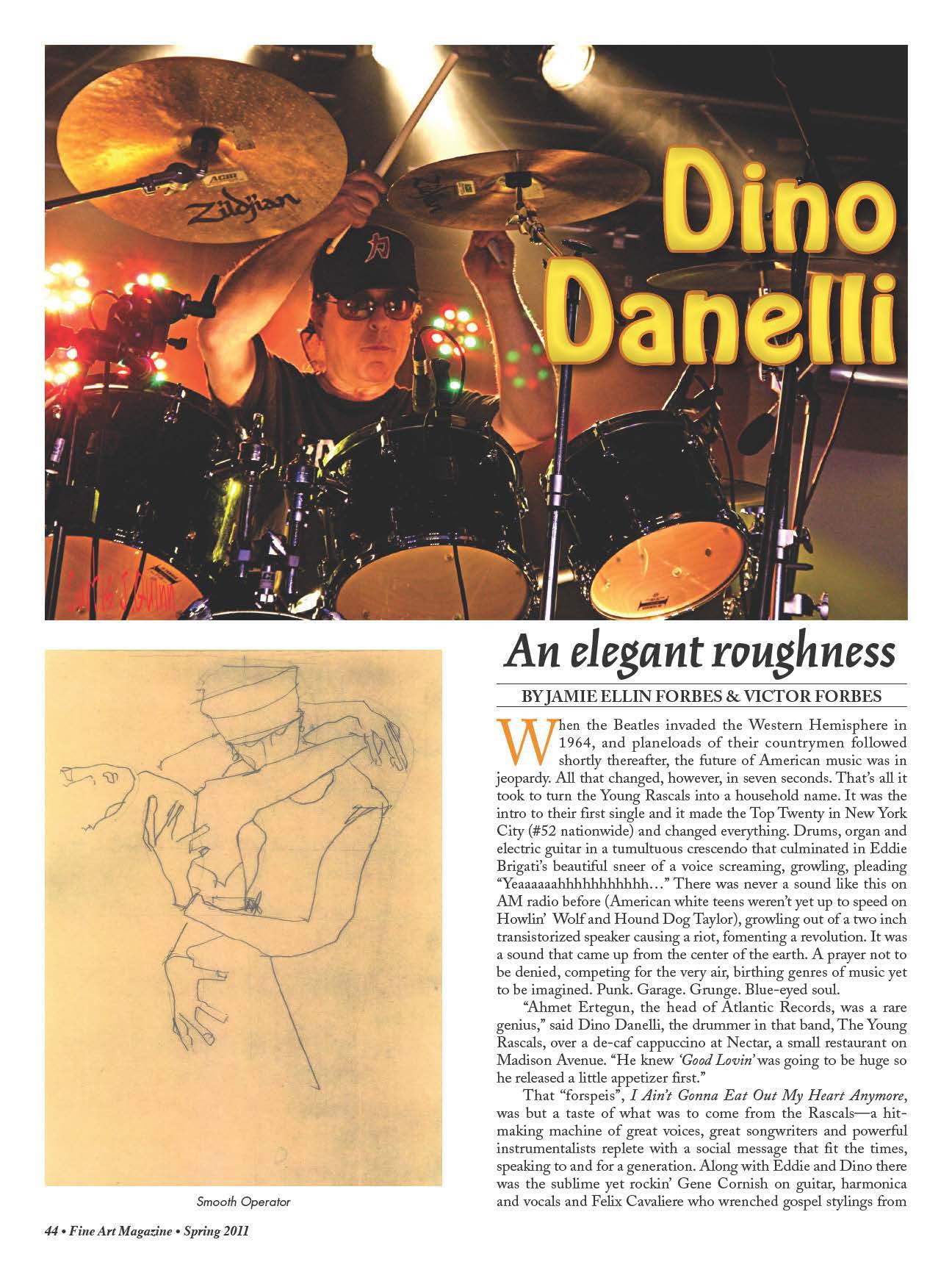

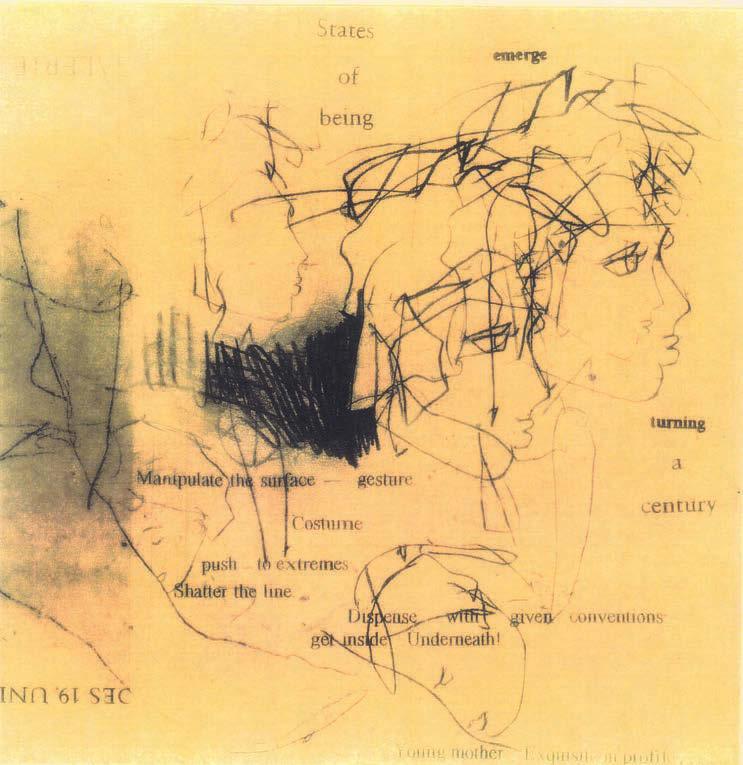
his Hammond B-3 and sang from the depth of his very being. The Young Rascals sent waves of American teenagers to record shops to buy vinyl; to music shops to buy instruments and to theaters to watch them perform hits like People Got To Be Free, See, Groovin’ and countless others. Included in their fan base were a couple of Jersey kids named Springsteen and Van Zandt who convinced their heroes to get together after 40 years to play a benefit for the Kristen Ann Carr Fund at the Tribeca Grill last April. The highlight of the evening was Little Steven and Bruce joining in on Good Lovin’. Visit our website to watch; catch the look between Gene and The Boss on the guitar parts, when Bruce points knowingly as the Rascal nails that one little unfogettable riff. There’s a lesson in the history of rock and roll right there, and really, what the music is all about. “Music is love,” sang David Crosby and The Young Rascals exemplified this, making music that belonged to us all.
There were a handful of memorable drummers from the era that spawned what is now called “Classic Rock.” Ringo, of course; Charlie Watts of the Stones, Keith Moon of the Who, Bonham from Led Zep and Dino. “When the Young Rascals came out, all the Beatle records went away,” said Liberty DeVitto, Billy Joel’s legendary drummer in an interview with Dino he conducted for Modern Drummer magazine, an excerpt of which follows.
LIBERTY: “I became a Rascals groupie. When I was fifteen, I used to roll my pants up to make knickers, pulling up my socks. When I first met you, it totally changed my life. It was so easy to talk to you and you answered so many of my questions. When I was starting out, I met you at a club on Long Island and asked you how to twirl a stick, and you showed me right there! When The Young Rascals came out, everybody bought a 24” bass drum.
DINO: I picked that up from Gene Krupa.
LIBERTY: I had the throne because you had the throne; my cymbals were flat, because you played them flat.
DINO: I got that from Sonny Payne from Count Basie’s band.
LIBERTY: I never took lessons so you were one of my teachers. Uptown Girl, When In Rome, a song called Half a Mile Away, that’s me being Dino Danelli.”
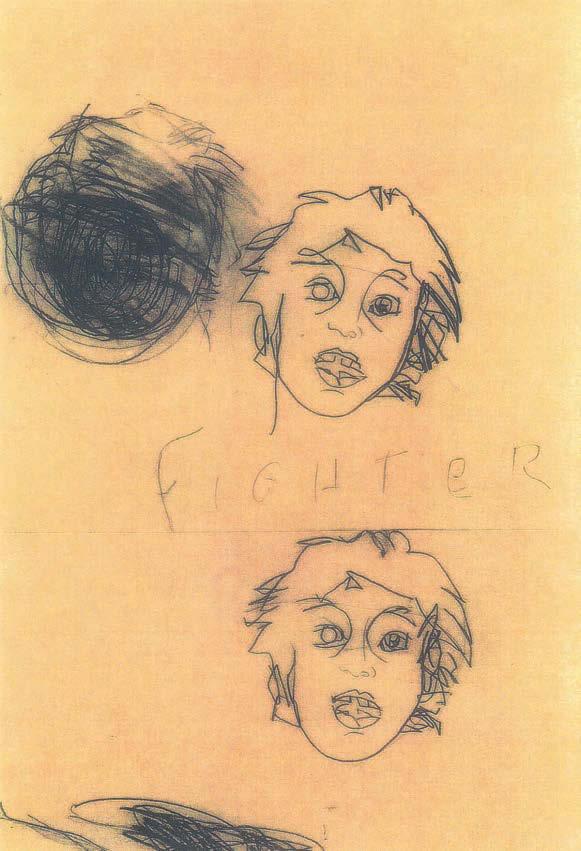
Fine Art Magazine • Spring 2022 • 38 Fine Art Magazine • Spring 2011 • 45
Above: Study For Dreamers; below: Fighter
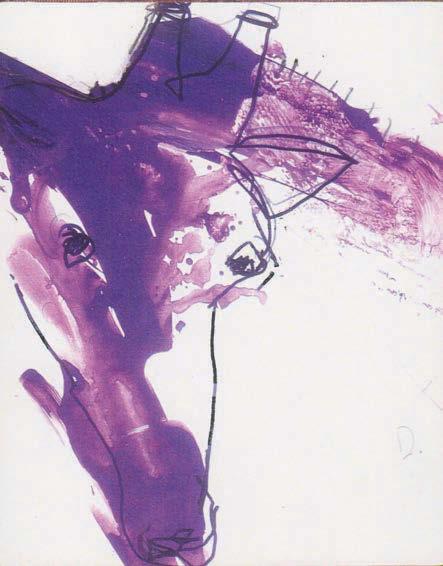
Dino was a prodigy from the Jersey City-Hoboken area, making the scene in his early teens, learning from the jazz greats like Krupa and Buddy Rich who played regularly at the Metropole, a very adult Club in New York City where the management took a shine to the young star-in-the-making and set him up with a cot in a dressing room years before he made it big. “They had vision, knew something was going to happen for me.” Young Dino held a daytime gig at the Metropole with a rock and roll band, travelled to New Jersey sometimes at night with his drum kit, performed with Lionel Hampton when he was fifteen years of age. “I was watching these people like a sponge, absorbing it all.” I was into music, women, the normal rock and roll vibe, watching the jazz players at night, going down to the Village. Agents would call up say ‘I need three guys, four sets, $25 a man.’ I would pick up guys—we all knew the same songs, people weren’t writing a lot back then—we were playing top 40 and R & B obscurities. One of the guitarists was Jimmy James. He went to England and became Jimi Hendrix.” After a while, Dino went to New Orleans, came back to New York, met Felix, joined him for a gig in Las Vegas, returned to New York and with Gene and Eddie, the Young Rascals were born.
A few years later, they were headlining at the Wollman Rink in Central Park; the Jimi Hendrix Experience was the opening act. “We took a long intermission,” said Dino of Hendrix’s incendiary set, but the Rascals were second to none. On their finale, Do You Feel It, the interplay between Gene, Felix and Dino, with Eddie on percussion and Felix singing lead, was more than memorable. It seemed like Dino wasn’t just twirling his

sticks, he was tossing them back and forth to Gene and not missing a beat. “That never happened, but it would have been a nice trick.”
The Young Rascals officially became the Rascals with the release of their third long player, the concept album Once Upon A Dream in 1967 which launched Dino Danelli, Artist. It came about in a kind of metaphysical fashion. While Dino was ensconced in his apartment creating, quite literally boxes of dreams, Felix and Eddie were writing songs for the album, the Rascals answer to Sergeant Pepper’s Lonely Hearts Club Band. “The songs were similar in subject matter to what I was putting in those dream boxes. It had to be mental telepathy,” said Dino. “We were connected somehow, spiritually. As I was building that sculpture, those two boxes of things I made and found, it was full of our dreams from that time, things we were hoping to see happen in the world.”
Neshui Ertegun, Ahmet’s brother, oversaw the label’s visual presentations and “he had some art collection, the real deal. Surrealism galore—Magritte, Dali, Picasso, Victor Brauner, Yves Tanguy, Bretton, Man Ray, everybody. ‘Dino,’ he said. ‘Let me show you on the wall.’ He brought a projector into the office at Atlantic Records and I was bowled over by his slides. Seeing those works made me speechless.” When Neshui saw Dino’s assemblage, he immediately proclaimed it the cover of the new album. It won an international graphics award and was reproduced all over the world. Dino had carte blanche on The Rascals album jackets after that, overseeing the covers, photos, layouts. Later on, he did two covers for Fotomaker (a band he formed with Gene in 1973), one quite controversial. The nocturnal energy felt in that image can be seen in many of

Danelli’s drawings such as Nurture, a photo shot of a young couple at 3 A.M. in Tribeca, Vogue 1-2-3, depicting androgynous clubbers at the Danceteria in downtown NYC, Dancers I & II, inspired from a photo shot at the infamous Cat Club. Danelli’s people as image are seen moving through the water of the night dreamscape, pushing almost to a point of turbulence, producing visual noise, conducting and creating the essence of ‘elegant roughness.’
Dino started out making large iron sculptures at David Smith’s place in Bolton’s Landing in upstate New York. “David was a colorful character who died in a car crash before his time. He covered all ten of his acres big works. I have a couple of my smaller ones from those days in my garden apartment in Manhattan.”
With smaller quarters, Dino began doing design work, paring it all down to pencil and paper drawings which are what he will be exhibiting at Artexpo New York and beyond.
Primarily influenced by the early Surrealists, the Austrian and German Expressionists also struck a chord with Dino. “I just love emotions and portraits of people so it came quite naturally to start looking around and drawing things with which I was familiar. I was also greatly influenced by the fashion designer Antonio Lopez. He had a big impact on how I drew.” A force majeur in the fashion world in New York and Paris, Lopez “crossed the lines. He was a fine artist who could draw like Picasso and remained in the fashion world because that’s where all the pretty people were. He was a real influence for me, but above and beyond everybody, Picasso is my guy. There was nobody like him. Until the day he died, he never stopped creating art.”
Fine Art Magazine • Spring 2022 • 39 46 • Fine Art Magazine • Spring 2011
Giraffe
Mean Streets
Urchin
When the Young Rascals went to France on their first European tour in 1966, Dino couldn’t wait to get off the plane and get to Montmartre. “The history and the cafes that were still in existence—many rebuilt for tourists—replicated what it was like in the days of the Absinthe Cafe where Picasso, Modigliani and their crowd went to drink and exchange ideas.”
In the tradition of Lautrec and deriving a sense of union with the scene of Moulin Rouge in the great heyday of Paris as the city of light, Danelli felt the revolution of the epoch. This affinity has allowed him to uncover and portray the nocturnal lifestyle of his drawn subjects. A heavy emphasis is placed on line as the artist derives his compositional form, as to suggest to the viewer they can freely experience the energies being exposed and depicted in his subjects. Danelli infuses a rhythmic expression and gesture, heightening interest and textural dimension accentuated by a soft use of highlighting colors. His images seem to vibrate and pass through the illusion of the night, creating amorphous silhouettes profiling his players.
He fondly recalls the Cedar Tavern where the Abstract Expressionists did their drinking and later, Max’s Kansas City. “It was just like Europe, the same thing. I met Larry Koons, Warhol, John Chamberlin, Rosenquist, Lichtenstein…everyone. They all hung out at Max’s and the music wasn’t bad either. Blondie, the New York Dolls (now that was a band). Max’s was amazing. Downstairs were all the artists, sitting around a big table. The music was upstairs. The women were fantastic, that period of time was incredible, the pre-crack era before cocaine became such an evil drug. Then it turned into the 80s— Talking Heads, CBGB’s; Stevie Van Zandt tried his damndest to keep that place alive, keep it going. The Ramones were an amazing band, Joey was a fanatic Rascals fan. They had a rough edge, like us early on, very punkish. The Sex Pistols, too. None of them could play but all their bad instrumentation jelled when they were on stage together.”
As a youth, Dino was gifted to the point where you couldn’t help but see he was going to be someone special musically, and it is the same with his art. Even though his drumming is of unbridled power, it carries a delicacy, much like the drawings. He doesn’t overpower the beat, he rides it, playing down over his flat cymbals, hitting that 24” kick drum, supporting the band but coloring the music with what will be known in musical history as Danellian fills. The drawings have the delicacy of sumi-e and are somewhat disturbing in their powerful imagery.
“Absolutely, some of those figures are disturbing. The Rapper Prophet was a real guy I knew from Washington Square Park. He was a chess player who beat everybody, but when he didn’t take his medication, he
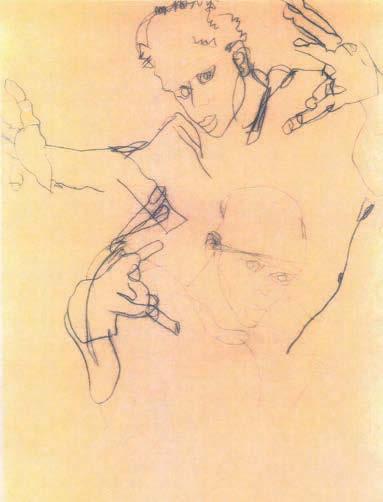
would get up and start orating. Prophet was emotionally disturbed but had total sense about him, a wonderful guy. Sometimes he’d have his medication and sometimes he didn’t. A friend of mine took his picture and I turned it into The Challenges Remain. He couldn’t help himself. That piece is one of my favorites, I ghosted him in one way, to make it a little schizoid without making it too crazy—it’s the stigma of mental illness. Where I put things on the paper is a big thing for me. In Self-portrait, half of the image is off the page. Where they are placed is what makes good composition. Even the Urchin drawing—the little girl on Canal Street selling scarves and trinkets, she was nine years old—I was watching her from a few different angles. Again, she’s off the page…I always search for the right spots. I’ll do them bigger and cut or edit them down to get the composition right.
“My New Gun a composite of three images. The little boy has that lethal innocence—you don’t know if he’s going to shoot you or not, and it’s sadly true.” Most of Dino’s drawings have a personal history of some sort; many work without having any explanation but the back stories are interesting. The abstractions bring to mind the painters he speaks of glowingly from the Cedar Tavern era. His passion for art and love of music are the experiences that have driven and fueled his creativity. Danelli’s lifestyle afforded him the opportunity to tour and frequent museums and galleries to feed his artistic hunger, and he used his chance to educate and observe the styles of those he found to be most important to his work— Picasso, Duchamp, Magritte, Lautrec, Klimt, Schiele, Kokoschka.
Delicate yet powerful, Dino conveys that rough edge that comes from the streets of New York, along with a cosmopolitan sophistication. The sum of these parts is an elegant roughness, further exemplified by

the way he includes the lines and grids in the finished drawings. “I don’t erase anything. When it all shows, through, it’s part of the creation,” he says. “That balance of roughness and sophistication is something I seek to convey, especially in the figurative work.”
In his colorful abstractions, one can discern forms scenic or representational. “Some are very, very abstract, with no recognizable imagery, but there is to me. People see what they see when they look at art and I do not tend to direct viewers to see what I am seeing. I’d rather leave it open for interpretation so that viewers are not led by my explanation. It’s nice to educate people to art, have them see things they haven’t seen before. When you hear a song and see a video, that vision is placed in you. Without seeing it, you use your own interpretation, not the director’s. It’s hard to talk about abstraction,” he adds. “I prefer not to use the word religious so I describe them as spiritual and I include that element into the abstract works.”
“At this point in life, I find that creativity merges. Art, music, film, architecture— they’re different but yet they’re the same.
“Even now, people in NYC have such individuality in their appearance, such great looks in how they put their hair and style together. It’s all in an expression of lines and compositions. How you compose them and convey the expression of the people—the vibe—that’s the important thing. When that emotion comes through the paper, it becomes real, comes off the paper. A lot of drawings and paintings to me are dead, they just sit there. It’s just paint. When art is alive, feelings are captured. It’s an emotional thing, can make you cry. Great art will do that. I could spend my life just looking at great artists’ work. It’s a forever thing. I was compelled to do that and I still am. I can’t live without art. It takes you over, you get possessed by it. Until that stops, I guess I will never stop.”
Fine Art Magazine • Spring 2022 • 40 Fine Art Magazine • Spring 2011 • 47
Zebra
The Prophet
JERRY GARCIA
A Long Strange Trip That Ended Too Soon
By VICTOR BENNETT FORBES
Nov. 14, 1970 — I somehow managed to convince our lead singer/ lead guitarist to venture from Belmont Avenue up in the Bronx to the bowels of Manhattan’s East Village, the home of the Filmore East for a strange double billing: Sha Na Na and The Mothers of Invention. He was an old school guy even then, a tough guy from the Bronx who didn’t much care for the music of the day, other than the Beatles and their individual work. As far as he was concerned, musical history could have ended in 1968, Elvis’ comeback year. Yet, he was my bud and I was his guitar player so he accompanied me this evening to the Filmore. It was a raunchy setting outside. Street hustlers who would stab you over a nickel bag, garbage everywhere. Hippies begging for spare change, panhandling they called it then. There’s Freddie Belmont in his coiffed hair, straight off a styling and hit of European Natural Black at Nardi’s on Fordham Road sporting Beatle boots and manicured nails, polished clear, clean and bright. We took our seats in the mezzanine, a few feet from the sound man. Sha Na Na was playing and this piqued his interest. We had managed to organize our own “Grease Day” at school — Bronx Community College — and it gave a bunch of us the chance to comb our long hair back, put a dollop of Brylcreem in it and act tough. The Dean of Administration heard of our plan and decided that we’d be in big trouble if we went through with it. Remember, this is 1970 and John Travolta and Olivia Newton-John had not yet emerged on the scene. Grease was real, not some Fonzie comedic Happy Days bullshit affair. But our pleas eventually prevailed and we had our Grease Day, but not on campus. The big event was a football match between us greased-up hippies and the short-haired juicers. I was the quarterback and on the last play with the game on the line, I chucked Fast Eddie Kouzoujian a perfect spiral that cut through the dank drizzle of the Jerome Avenue park and led him perfectly. This was no “Hail Mary” pass. It was a diagrammed play. Eddie dove parallel to the ground, to exactly where the ball was thrown and slid about ten yards in the mud, holding on to the ball for the winning touch down.
Sha Na Na did their usual set. Bowzer concluded the show with his now famous line, “There’s one thing I want to tell you fuckin’ hippies: Rock and Roll is here to stay.” After he spat at the audience (for real) they broke into the great Danny and the Juniors song of the same name, ending their segment.
While the crew was setting up for the headliner, Frank Zappa and the Mothers, a video played on the big screen. It was a clip of Dion singing Runaround Sue from an American Bandstand. Serendipitous, to say the least. Zappa came on and was leading his brilliant ensemble in a tour de force, featuring Flo and Eddie and a song about a mudshark. Highly entertaining. Smack dab in the middle of the set, a lithesome figure with long black hair, looking kind of like Elvira, slithered onto the stage. It was Grace Slick and Zappa stopped his show to let her speak. “Boys and girls,” she said, “I have some news. On Monday night we’re going to have a special concert. The New Riders of the Purple Sage, Hot Tuna, The Grateful Dead and The Jefferson Airplane. Tickets will be on sale tomorrow morning at 9:00. Thank you.” She walked off just like that and Zappa and the Mothers finished their set. The next morning I arose early and made the trip back down to

the lower East Side. By 10:00 a.m. I had four third row tickets in my hand — total cost: $22. When we took our place Monday night while the crew set up the stage, they were the best seats in the house. I was on a direct line looking right at Garcia who was stationed behind the pedal steel guitar. He was looking directly at me as he played, he really had no choice. I was directly in his line of sight. Young, vibrant, he had the world at his disposal, yet he seemed genuinely meek and humble, happy to be there, yet empowered. He was generating sounds from the instrument that were seriously not meant to be. On Dirty Business he was otherworldly. That night I felt I gleaned something from Garcia, as I spent the entire New Riders show gazing directly at his countence. Later I learned what.
“Each note,” he said, “is a spirit.”
When Garcia was at the top of his game, which was more often than not, those spirits cascaded from his soul to his fingers to his guitar as “light giving light to light, fire setting fire to fire,” as Stephen Spender described Shelley’s poetry in Brief Lives Even the silences carried weight. The music took us all—players and listeners—to another realm, a realm of purity, bliss. “To forget yourself,” Garcia said, “is to see everything else. And to see everything else is to become an understanding molecule in evolution, a conscious tool of the universe. And I think every human being should be a conscious tool of the universe.”
Fine Art Magazine • Spring 2022 • 41 34 • Fine Art Magazine • Spring 2011
Still Life, Guitar, oil on canvas, Jerry Garcia © Clifford Garcia
ARTIST
Some twenty years after that evening at the Filmore East, Jerry Garcia was sitting in a small balcony loft at the Ambassador Gallery in Soho. His band was playing arenas, the biggest concert draw of the 1980s and into the ’90s. The train kept rolling and Garcia was at the helm. On this off night from another sold-out Madison Square Garden run, the line stretched down Spring Street and around the corner, on to Wooster. At an event like this—an art opening—his fans could get close to him, shake his hand, get an autograph on a lithograph or a painting. They were selling like hotcakes, as were his neckties and sunglasses. It was great to have a piece of Jerry in this way. We were the printers for that gallery, producing the invitations, catalogs, interviewing the artists who exhibited there—many of whom were celebrities—Tony Curtis, Miles Davis, Billy Dee Williams, John Entwistle, Tico Torres, Bob Guccione. We were at all the shows and can tell you that Jerry drew the biggest crowd, sold the most art out of all of them. It’s not hard to see why his publisher back then decided to restrike those lithos, essentially killing the value of the original prints.
Enter Robert C. Matthews. Or, shall we say “re-enter.”
Robert was a boyhood friend of Jerry’s who grew to become his “sidekick.” That’s a term you don’t hear much today, but you know what it means. Robert knew Jerry way back when.
“My involvement with Jerry Garcia on a creative level goes back to 1961 when I was not quite 13 years-old. It really all started when I was in the middle of the seventh grade. I wanted to get into a more academically oriented school than the public school I was attending, so I applied to this progressive academy in Menlo Park (San Francisco) called Peninsula School. Seventh grade was full, but in the middle of the year one student left which allowed me to enter. One spring Sunday afternoon, the school held a benefit with wandering minstrels and there was a three-piece bluegrass band with a banjo, and it just knocked my socks off. I’d never really heard a banjo before. And of course, it was Jerry. My peers were all playing folk guitar like John Baez and Bob Dylan but when The Beverly Hillbillies television show came out with that Flatt and Scruggs theme song and backgrounds, I fell in love with that iconic music. Jerry was one of the few banjo teachers around Palo Alto and I began taking lessons from him at the music store where he worked.”
A few years earlier, Garcia had been a student at the The California School of Fine Arts, now known as the San Francisco Art Institute. “Jerry wanted to be a painter before he wanted to be a musician,” said Matthews. “Warm, interesting and energetic as an artist and man, he was different from other rock stars. He was a fabulous musician but his first love was graphic art.”
SFAI, founded in 1871, is one of the oldest art schools in the United States. Ansel Adams and Mark Rothko were but two of the notable faculty members and alumni range from
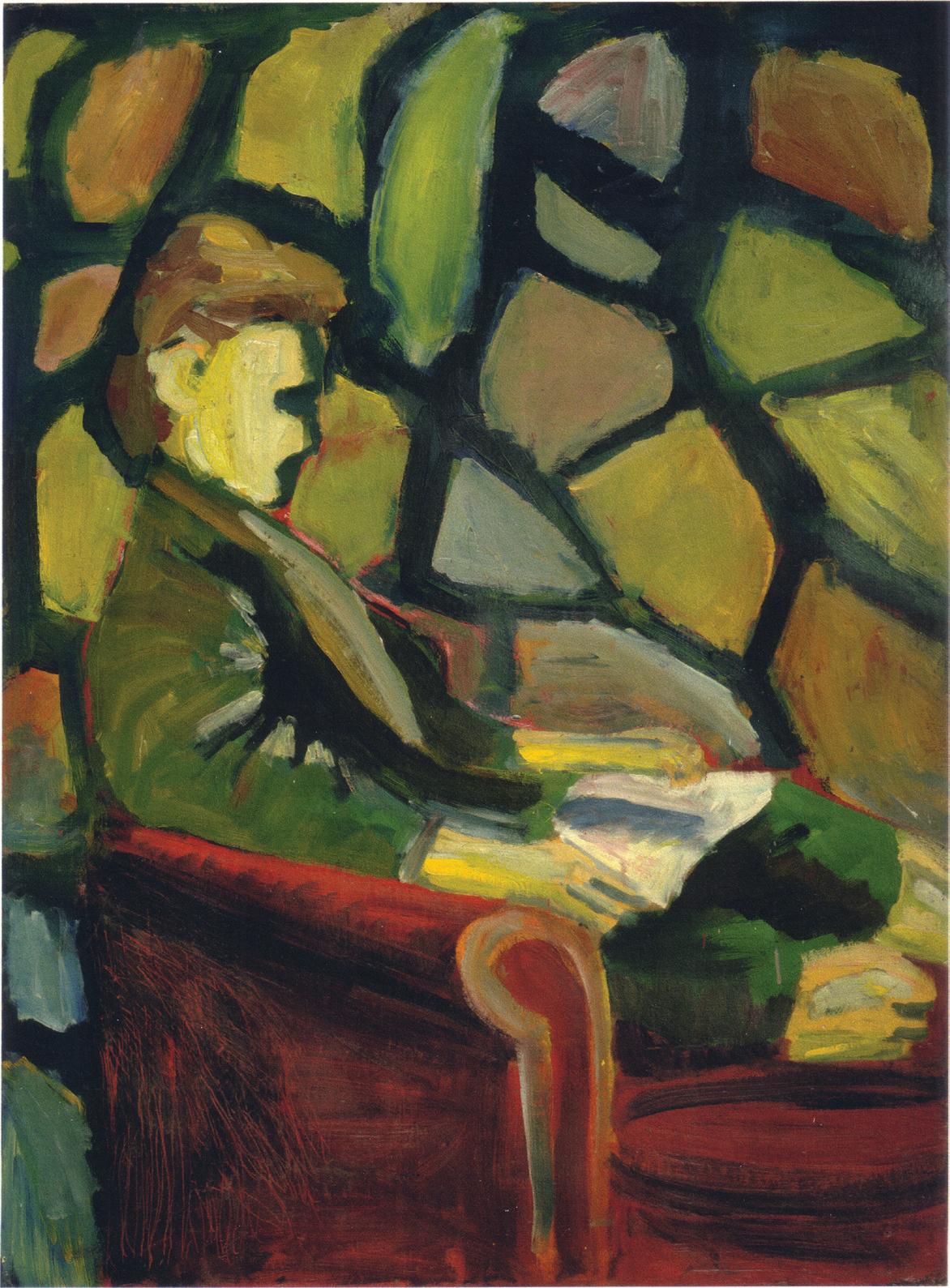
“In Chair” oil on canvas, Jerry Garcia © Clifford Garcia
Available as a Limited Edition of Fine Art lithograph reproduced from 14 hand-etched plates using classic ‘direct’ lithography. Each plate transfers one discrete color directly onto the media.
The media, 100% French rag, is run through the press as many times as there are plates/colors: 14 in this edition. Offered exclusively from publisher ArseaEm Productions. Art Director is renowned San Francisco artist Stanley Mouse. The edition was printed on century old Parisian presses at S2 Atelier, Las Vegas, Nevada.
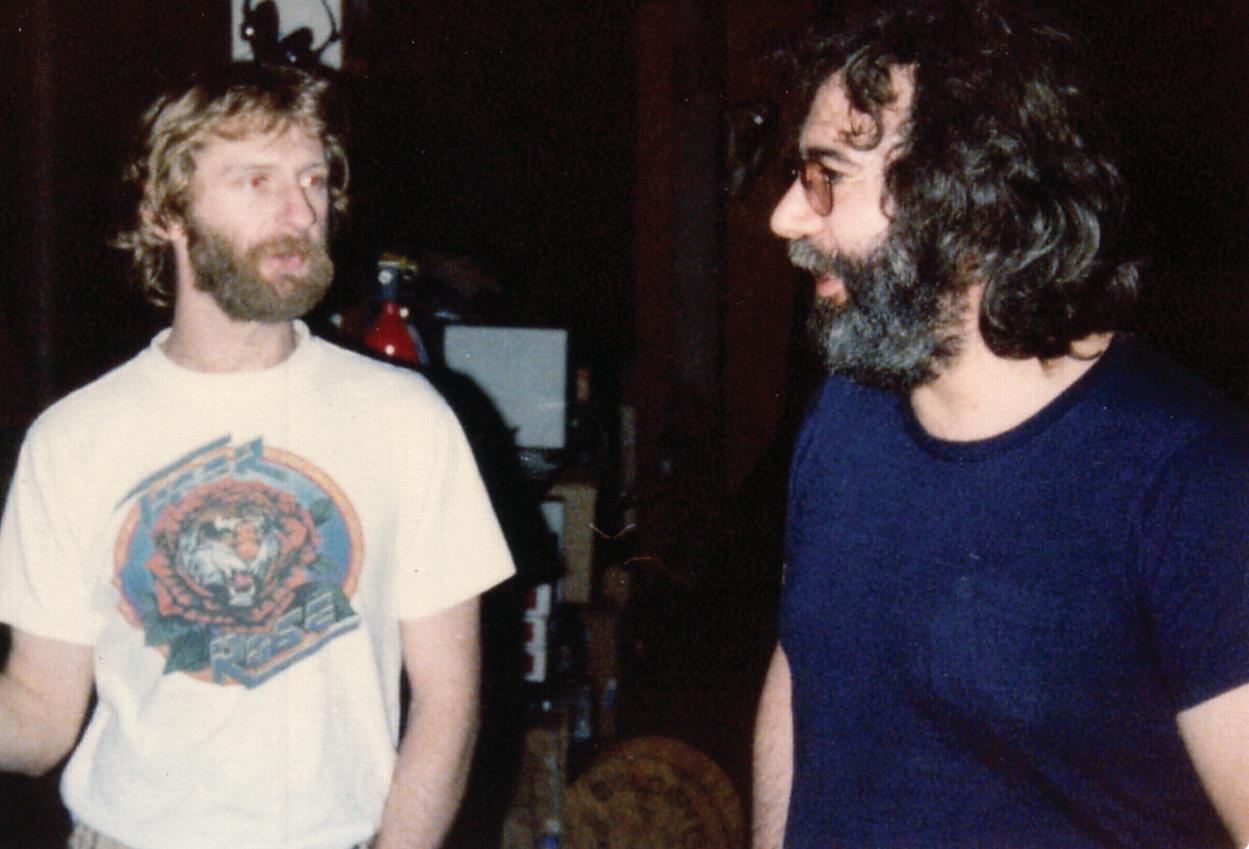
Annie Liebovitz to Courtney Love (who, incidentally, as a five year-old appeared in a photo on the back cover of a Grateful Dead album), among countless others. A teacher there, Wally Hedrick, was an artist who came to prominence during the 1960s. During the classes, he often encouraged the young Garcia in his drawing and painting skills. He also was influenced by Elmer Bischoff (1916-1991), one of the masters of the Bay Area Figurative Art Period (1950-1964) and a leader among the post-WWII generation of artists in the San Francisco Bay Area, along with Richard Diebenkorn and David Park, who, after contributing to the local emergence of
Fine Art Magazine • Spring 2022 • 42 35 • Fine Art Magazine • Spring 2011
Robert C. Matthews, Jerry Garcia

Abstract Expressionism during the 1940s and 1950s, shifted the terms of their spectacularly sensuous brushwork to recognizable imagery. Their influence on Garcia is obvious, especially with In Chair, where the paint is applied sumptuously, and the imagery, like pieces of a puzzle joining manifests the abstraction into reality. What Arthur Lazere writes about the master, can also be applied to the student. “He [Bischoff] lays on the paint thickly, an often assertive impasto that lends vigorous energy and movement, even to a scene of relative stillness. The figures here are distinct, and the landscape is broadly defined, but with a sketchy, real / unreal quality. There’s a palpable tension between the representational and the abstract, between stillness and movement. And it is all in counterpoint to the sensuous colors and dappling light that fill the canvas.”
In 1958 or 1959, at the end of his time in art school, Jerry’s brother Clifford (Tiff) Garcia was given the five oil paintings of this series — the only existing evidence of Jerry’s work in the medium— “if he wanted them.” They have been with him ever since. These paintings, and his teacher, offer a clue to the wellsprings of Garcia’s later computer graphic work, and to the tension between abstract and figurative expression present in his whole creative output. Three have been reproduced in the collected Art of Jerry Garcia, published in 2005; all are reproduced here. “These beautiful pieces of his early creativity validated who he was as a person, touching on what he thought was important,” noted Matthews in a recent interview with Fine Art. “I think he would really like that they are being seen today as there has been so much negative interpretation of who he was as a human being.” When Tiff, who re-discovered these paintings in his garage, reminded Matthews of their existence, Robert put together a team that included renown Art Director/Artist Stanley Mouse and chose the first image to reproduce and market.
He took the painting to Jack Solomon’s S2 atelier in Las Vegas and made an old-school lithograph using traditional processes on a rare 19th Century Marononi Viorin press which produced lithographs for the Parisienne and Montmartre artists of the period. More than 100 years old, the press continues to operate using all its original factory parts. The only modification being the conversion from steam-driven power to electricity. The result is a striking and sumptuous print created by hand from the original painting by actually breaking the colors down into individual plates (of which there are 14) and running them one color at a time to make the final product. Notes Solomon, whose experience in the art world spans five decades, “The colors and techniques that Jerry Garcia used reminds me of the work of the great and historic French artist Georges Rouault (1871-1958). Rouault painted in dark heavy colors. He then used wild, strong brush slashes, presenting his figures in somber but vividly glowing colors with darkly (blacked) outlined faces and figures. Garcia’s early works are similar to Rouault’s best artworks in important areas.”
Matthews never set out to be an publisher, but as the original bass player in the New Riders, he knew something of “Dirty Business down in Cold Creek,” which translated—quite to his chagrin and surprise—into the art realm. “I acquired a good collection of Jerry’s artwork about six months before he passed away including his most well-known prints, Wetlands I and Wetlands II which became very popular and about two years after his passing, were up to $10,000 a pop hand-signed. Later on, a matched pair of Wetlands I & II sold for $25,000
“I ended up with all of these great art pieces, paying huge premiums for insurance. Their relevance to me was that they were created by this good friend of mine But…the estate created a second
Fine Art Magazine • Spring 2022 • 43 36 • Fine Art Magazine • Spring 2011
Empty Trees, oil on canvas, Jerry Garcia © Clifford Garcia
edition—a major legal and ethical violation and a gross breach of that pledge which is inherent in limited editions and Garcia’s promise on signing the certificate of authenticity. Simply put, not only was this illegal but it violated Jerry Garcia’s personal integrity as well as Legal Code #1744 (11B) in the State of California in which Certificates of Authenticity are required for anything that sells for $100 or more, making an expressed warranty that no additional multiples of the same image, including proofs, have been produced in this or in any other limited edition.
“At that point, prices started going down and art dealers didn’t want to get involved as they didn’t know their liability. The onus is on everybody in the distribution chain to make full disclosure. When all 925 lithographs of the Edition are gone, there will be NO MORE! EVER! A second edition violates an implied and legal contract.”
In February, 1995, six months prior to his death from a heart attack on August 9, Matthews recalls a conversation with his friend in which Jerry was adamant that the integrity and quality of the art program be maintained. It was more than a shock to Matthews to discover that some pieces in the collection of prints he purchased for himself, and on which he maintained insurance policy based on their appraised value, had been re-struck. Which simply means they were put back on a printing press and printed again, diluting their collectibility.
Robert, who is exceptionally miffed at the way Jerry’s name and reputation were defiled through the re-striking of those lithographs, decided to right a wrong by creating a new limited edition, a true lithograph. “Jerry was always a very focused, artistic human being. We believe in the story and we are preserving the integrity of Jerry’s legacy, which has not been treated properly in other realms.”
As engineer, producer, confidante and even bass man on the first New Riders recordings which featured Garcia on pedal steel guitar, Matthews is uniquely qualified to make such a statement. His name is familiar like family to millions of fans of the iconic American musical aggregation known as the Grateful Dead. Some could say he was even responsible for the band’s very existence, as he was the one who introduced his schoolmate Bob Weir to Garcia. Matthews was also there when Garcia famously chose the name for the group, flipping over the pages of a dictionary and landing on those fateful words. “The first definition I saw after the item GRATEFUL DEAD,” recalls Matthews, “was an ethno-musicalogical term relating to ballads of unrequited love.”
Shortly thereafter at an early recording session, Robert was intrigued by the equipment and mechanisms involved in the process and expressed his interest to Weir, who basically told him to “manifest your desire.”
“In 1968 we started learning how to make our own records,” said Matthews, who worked his way up from Assistant Engineer on the Dead’s second Warner Brothers album (Anthem of the Sun) to Executive Engineer on their third (Aoxoamoxoa) to Engineer/Producer (along with Betty Cantor) on two of their most important and best-known recordings, Live/Dead ( released on Matthews’ 22nd birthday), and Workingman’s Dead. Those two records were revolutionary, pivotal and loved by millions on so many levels. The recording of Live/Dead in itself is a benchmark for every live album ever made. The innovations and inventions that went into that record changed forever the way live shows were recorded, mixed and produced. It is safe to say that Bob and Betty more than played their part in bringing the music to the world almost as exactly as
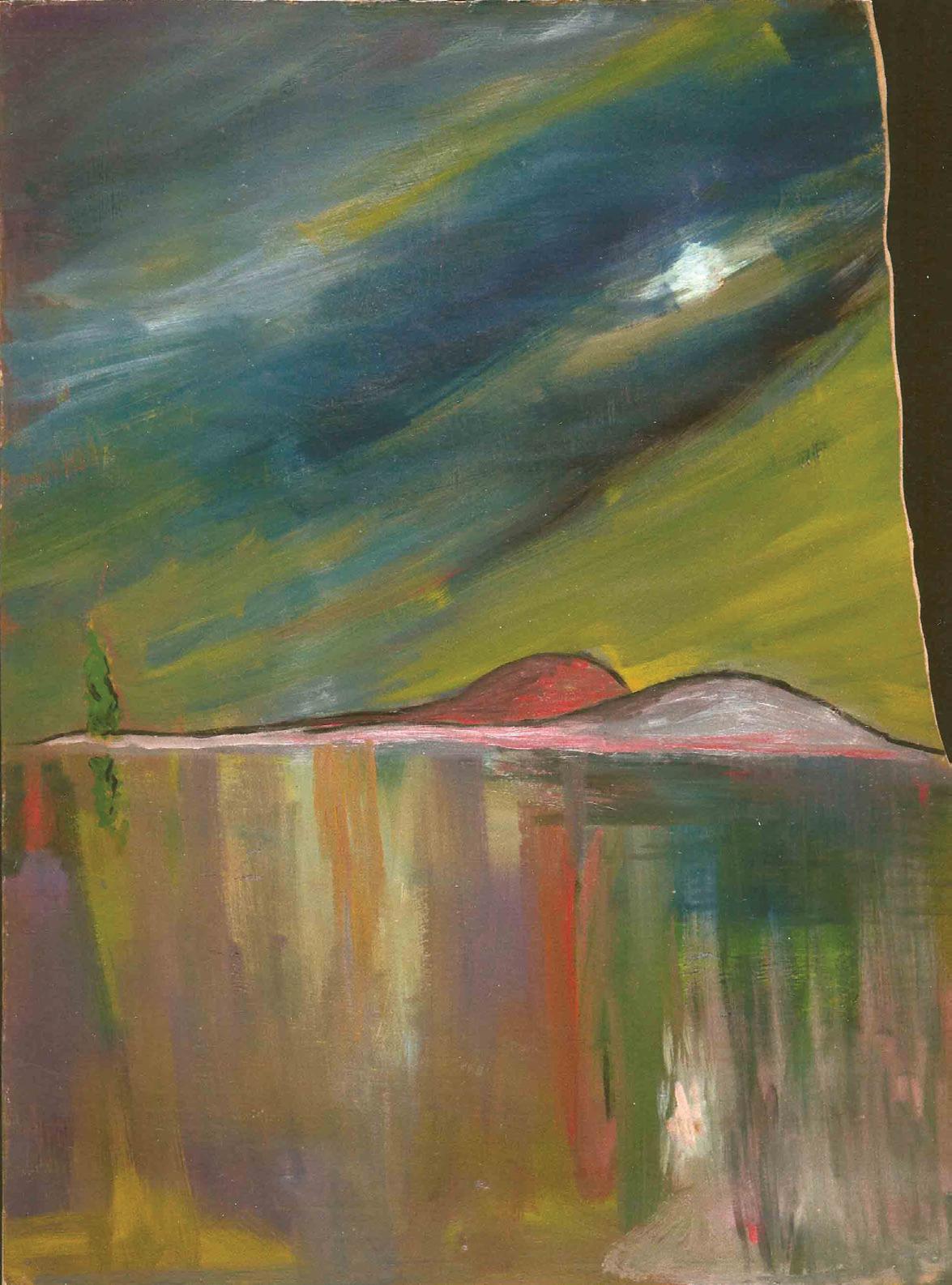
the band envisioned it. As one-half of the well-respected recording team, he is responsible for making Jerry Garcia the world’s mostrecorded musician with thousands of hours of his solo and band work committed to tape.
In 1969 Jerry started learning pedal steel and John Dawson invited him and Mickey Hart into this new aggregation that became The New Riders of the Purple Sage. “In May 1969, prior to the first New Riders rehearsal, Jerry informed me of their existence, saying, ‘By the way, Matthews, you’re the bass player.’ On July 3, 2006 at Grateful Fest 7, I sat-in on Last Lonely Eagle, two months short of 37 years since I last played music on stage.

“As the group evolved, I saw first-hand the interaction between musicians in a momentby-moment agreement of a format with a capacity to spontaneously create. Often, it was incredible. I was fascinated watching it all. By making me the bass player, I was able to experience it and play music, answering my question, ‘Does that really happen the way I think it happens?’”
Matthews spent more time with Garcia one-on-one than all the other engineers combined. “It was very fortunate we worked well together and it was a lot of fun. For Garcia, playing music was all about connecting to the people who were watching him play, encouraging the audience to have a good time.”
About this time, Matthews and Garcia entered into what would
Fine Art Magazine • Spring 2022 • 44 37 • Fine Art Magazine • Spring 2011
Mood River, oil on canvas, Jerry Garcia © Clifford Garcia
Garcia’s lithograph printing on S2 Atelier’s 100 year-old press
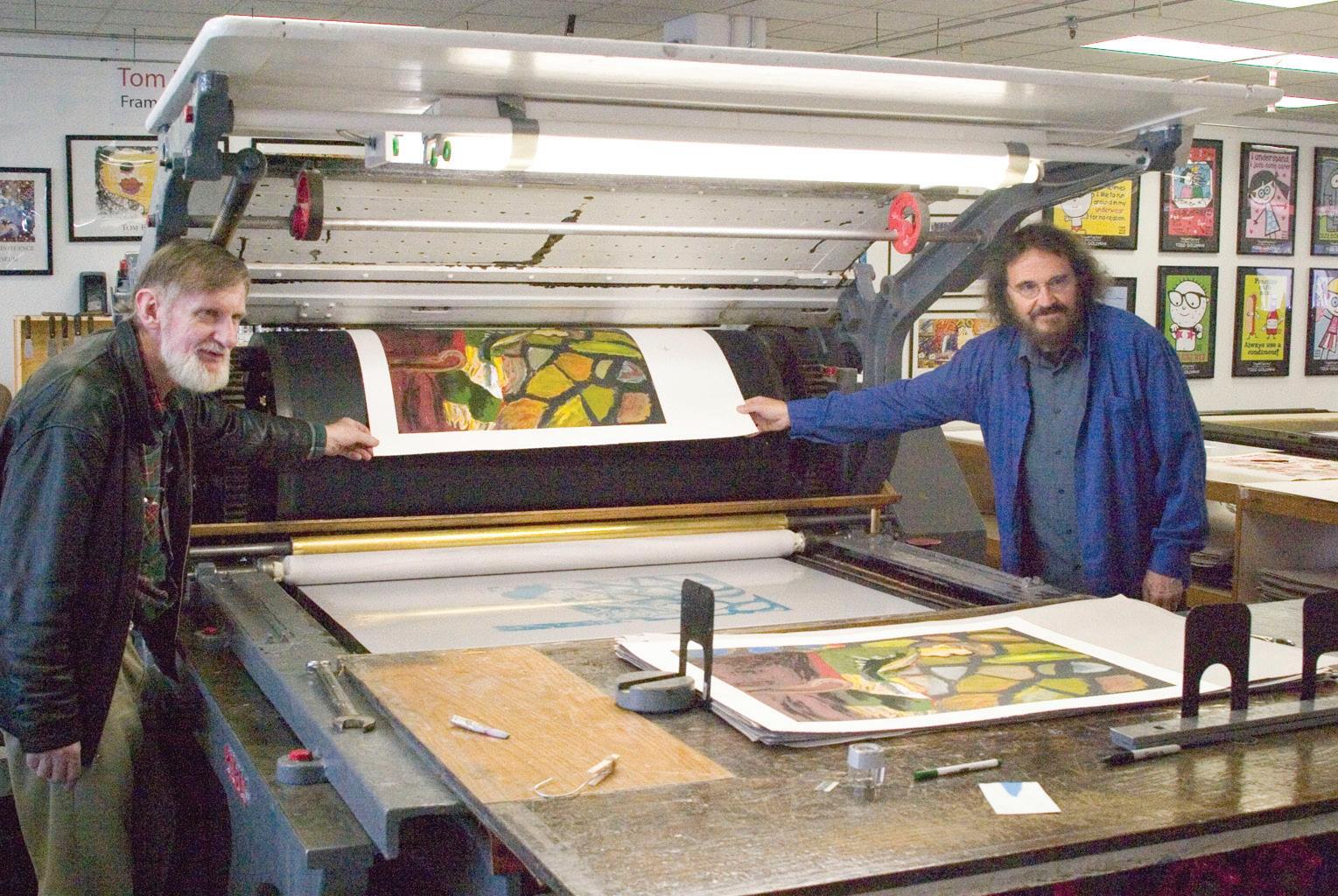
be their most creative and satisfying collaboration: Garcia’s first solo album, which he produced, engineered and mixed over a three week period in late summer 1971. The majority of the songs were first recorded by Garcia and Bill Kreutzman as simple acoustic guitar and drum tracks. Garcia then overdubbed all other parts. Jerry Garcia was the first studio album to be released by the Grateful Dead family for over a year, the last being the Dead’s highly successful American Beauty. I don’t want anyone to think it’s me being serious or anything like that,” noted Garcia in an interview at the time. “It’s really me goofing around…being completely self-indulgent musically. I have curiosity to see what I can do, and a desire to get into sixteen track and go on trips that are too weird for me to want to put anybody else I know through.” Except for a select few, including Matthews. This was another revolutionary record at the time in its sonic clarity, force and power, with just enough psychedelic tintinnabulations to let everybody, as Matthews said, be invited to put their own imagination in and create their own interpretation
In 1972, Bob and Betty recorded Bob Weir’s solo album, Ace, which was mixed at Alembic Studios by Jerry Garcia and friends. Featuring what would become a collection of future staples, it was, in essence, a Grateful Dead album. Says Bob, “I pretty much knew in the back of my mind what would happen. One by one they start coming around. Lesh and Garcia, ‘Hey man, I hear you have some time booked… Need a bass player? A guitarist?’…Of course I ended up with the Grateful Dead on the record, which I figured up front…And we had a great time making it.”
That was also Jerry’s theory. Said Matthews, “His #1 rule was if it was a hassle—get out.”
What worked for the music listener also holds true for the viewer of Garcia’s art. Matthews takes this one step further by adamantly defending the integrity of his friend, creating a true limited edition print of undeniable quality. It is a masterpiece of love. “I am guaranteeing I will adhere to the integrity that was so vital to Jerry.” Continues Matthews, “He was a rare artist in that he never talked about himself, never talked about his music. What other people were doing interested him. Unfortunately, fans kept putting him on a pedestal. He couldn’t dispel that so he just gave up. In the early 1970s, he gave interviews that let people know what they were perceiving was not exactly what was happening.

the last ten years of his life, even while the band toured incessantly, he managed to produce some 500 works of art in many media. “I was there when he received his first airbrush. He said, ‘C’mon Matthews. I want to show you how to use this.’ He talked me thru it and made many pieces with it.”
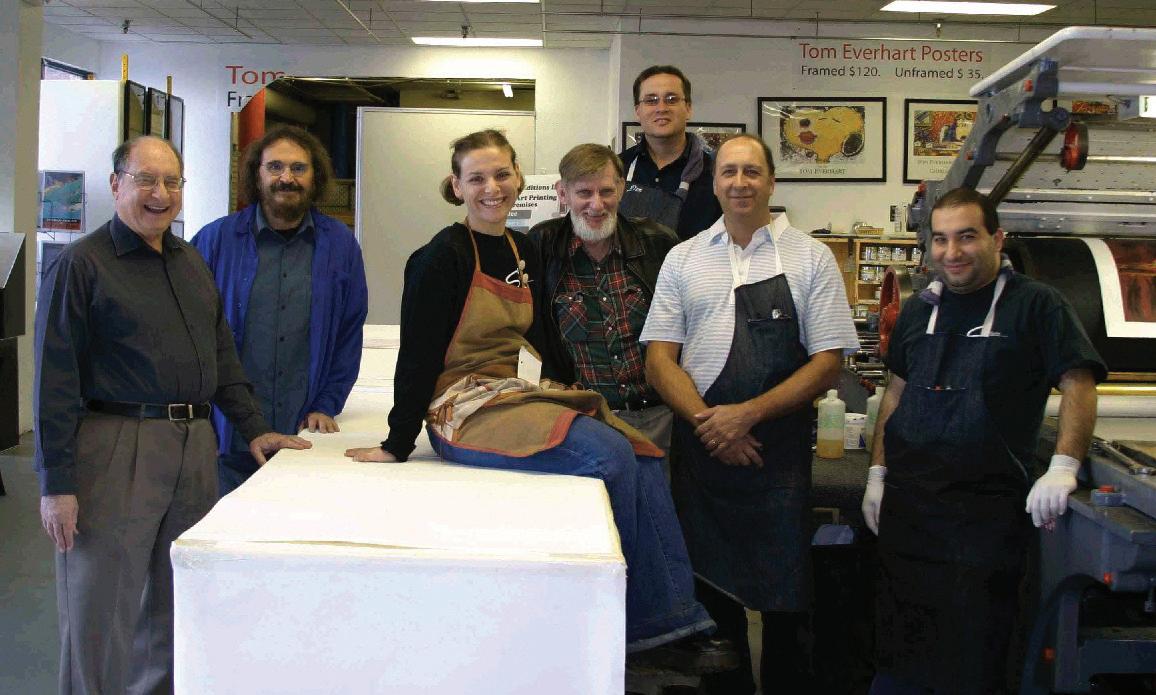
Garcia’s early work is presented here for the first time in Fine Art lithography, the gold standard for limited edition multiple fine art. As the preferred choice for the greatest modern and contemporary artists— Picasso, Chagall, Matisse, Calder, Bellows, and Norman Rockwell— Matthews sought to replicate the process of these masters’ lithographs using the same time-honored methods. The edition consists of 925 numbered, hand-pulled lithographs on Rives BFK 100% French rag printed from 14 hand etched plates with 40 numbered Artist’s Proofs (“A/P”) and 10 numbered Printer’s Proofs (“P/P”) for a total edition of 975. Each lithograph has the embossed seal of ArSeaEm/Tiff Garcia. A Certificate of Authenticity, hand signed by Tiff Garcia with the embossed seal applied, is delivered with each lithograph.
The creative process of Jerry Garcia was never-ending. He described himself famously as a “music junkie” an unfortunate term as it was his addictions that colored the later years of his life. But when it came to creativity, he was constantly in the process. During
The oil paintings and their copyrights with all rights are the sole property of Clifford Garcia. ArSeaEm Productions is the exclusive and sole licensee for reproduction rights as of September 23, 2006. Formed in 2001 by Bob Matthews. ArSeaEm’ Productions’ live video and audio recording expertise is based on immaculately reconditioned analog equipment, and the original team of Bob & Betty, producers of early Dead records. ArSeaEm has recorded and produced a DVD and CDs of Dark Star Orchestra. For further details visit jerryfineart.com
Fine Art Magazine • Spring 2022 • 45 38 • Fine Art Magazine • Spring 2011
Dog Print, oil on canvas, Jerry Garcia © Clifford Garcia
Two legends meet over a printing press: Robert C. Matthews, Stanley Mouse

The soundtrack to the greatest rock and roll movie this side of The TAMI Show is the greatest rock and roll compilation this side of 18 King Size Rhythm and Blues Hits. Only its better, because director Perry Henzell had five years of reggae to choose from, with no real label restrictions. Reggae isn't straight rock and roll, of course -- its syncopation was a response to the rock that replaced shuffle r&b on U.S. radio in the early '60s. But the interplay of amped-up bass, heartbeat drums, and scratch guitar is as good a rhythm as anyone else's out right now, and though there are only two million Jamaicans, at least 50,000 of them want to be reggae stars. Among the eight who make it here are movie hero Jimmy Cliff (defiant, plaintive, inspirational) and prime minister of soul Toots Hibbert (exuberant, pressured, amused), but wonderful minor artists like the Slickers (whose "Johnny Too Bad" is a rough draft of the movie) and Scotty (whose song is a chant) are just as representative of this thriving, disorganized scene. Docked a notch for repeating two Cliff songs. A
-Robert Christgau, Christgau's Record Guide, 1981.
47 • Fine Art Magazine • Spring 2022








































































































